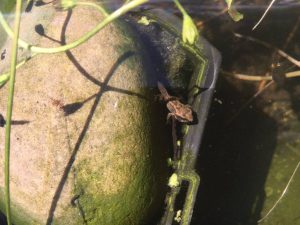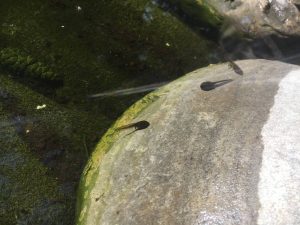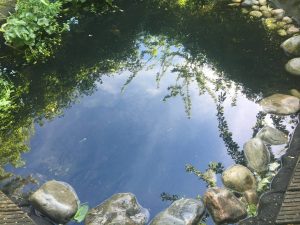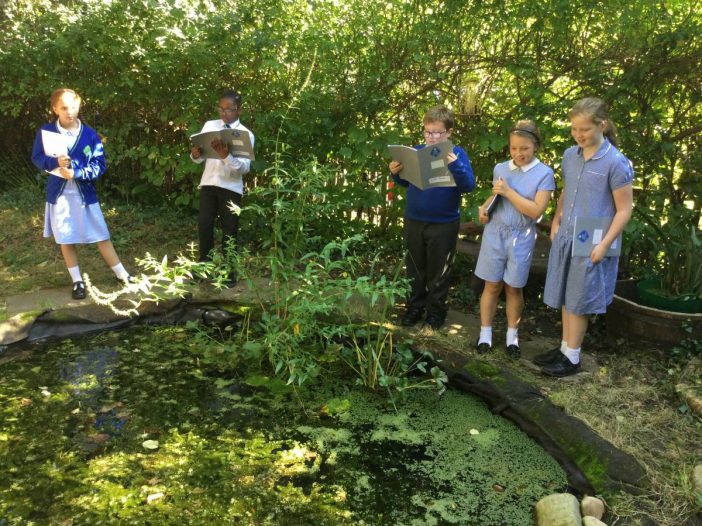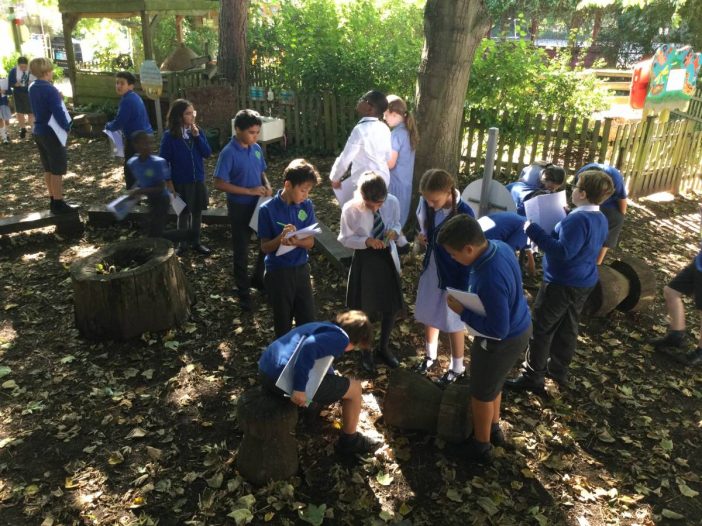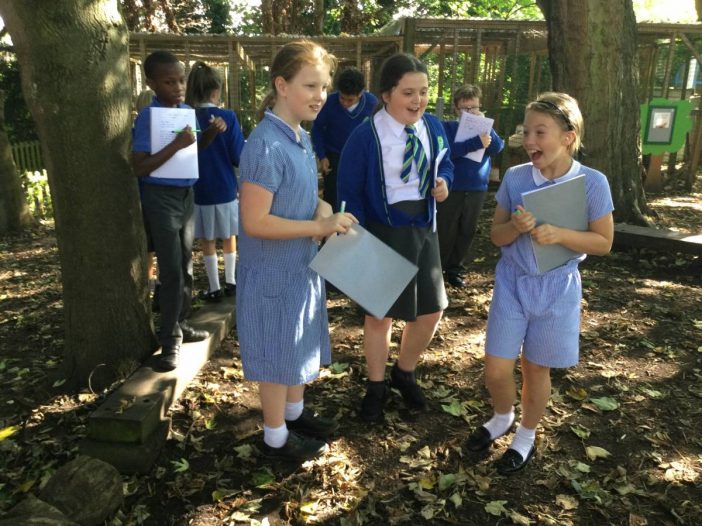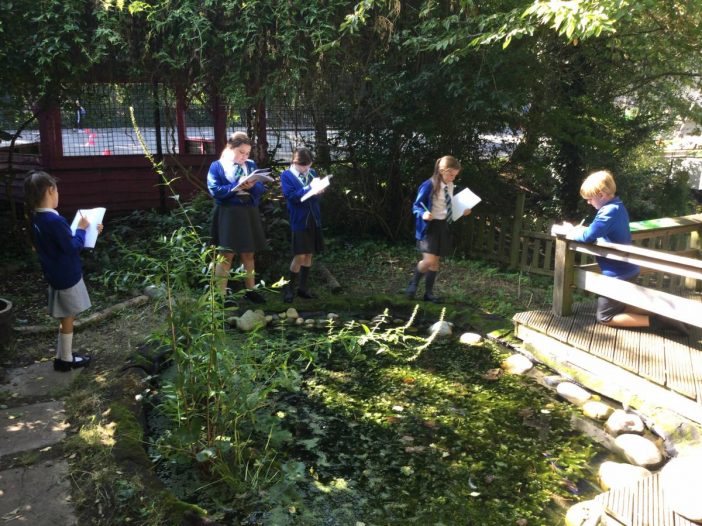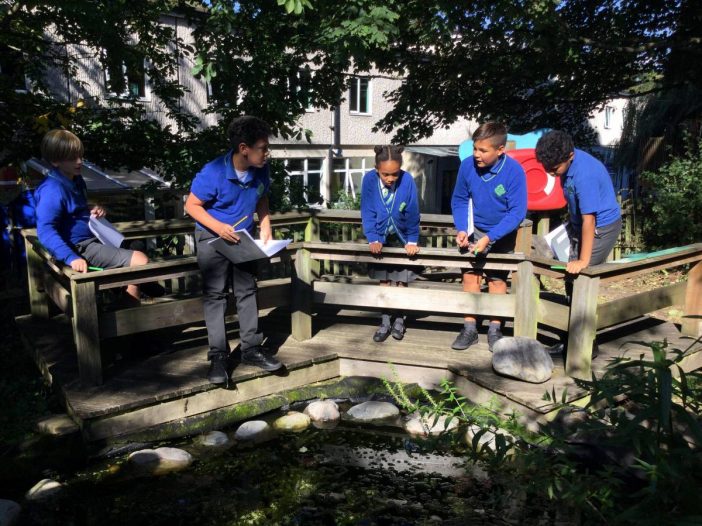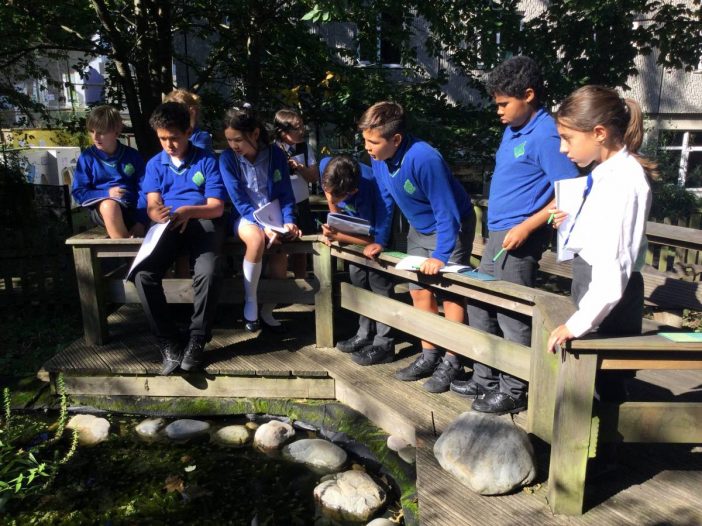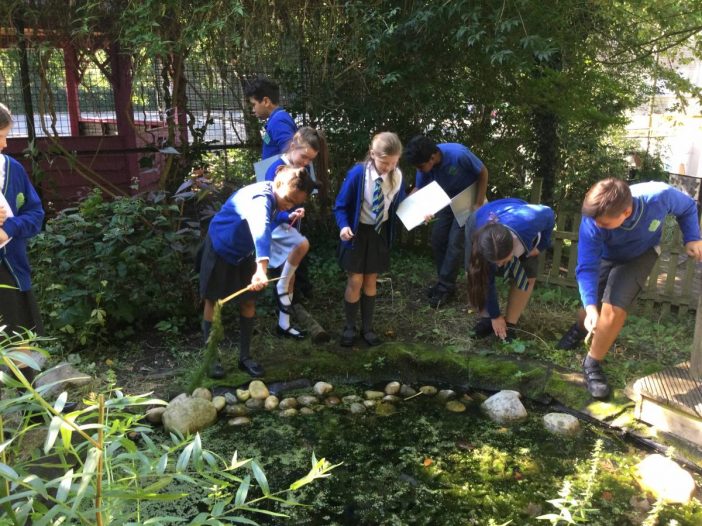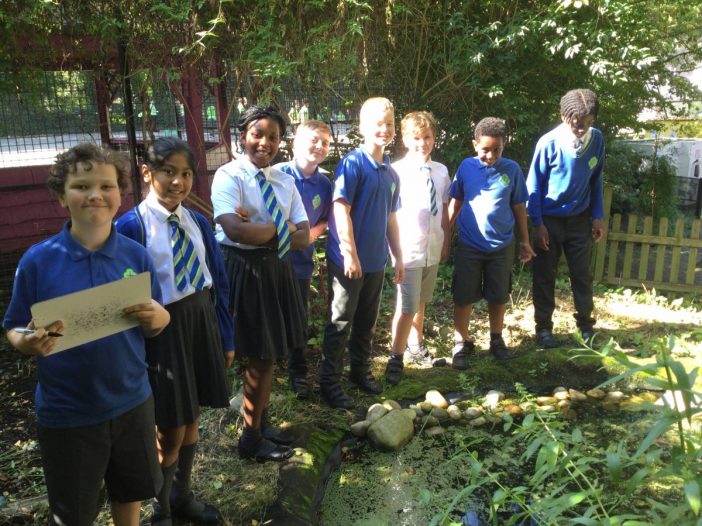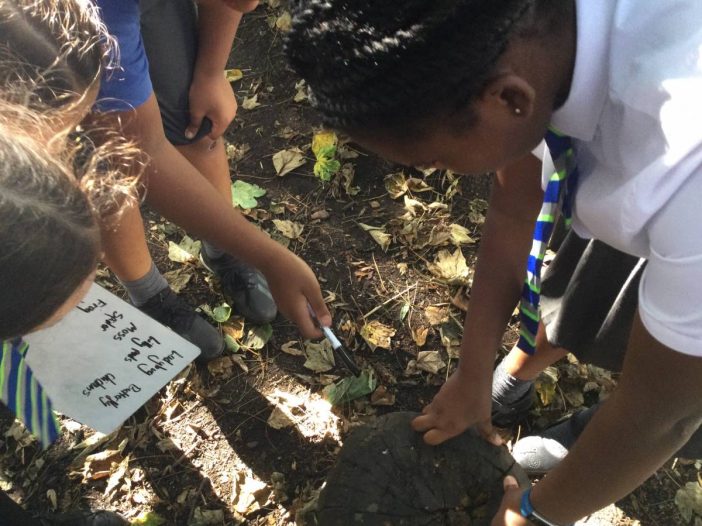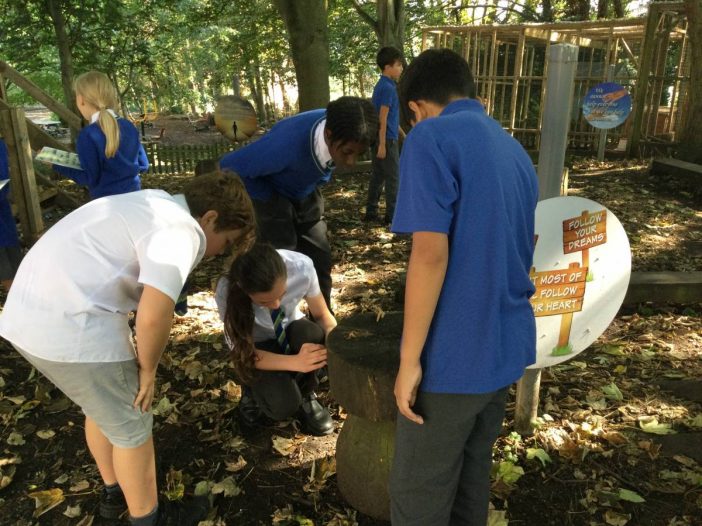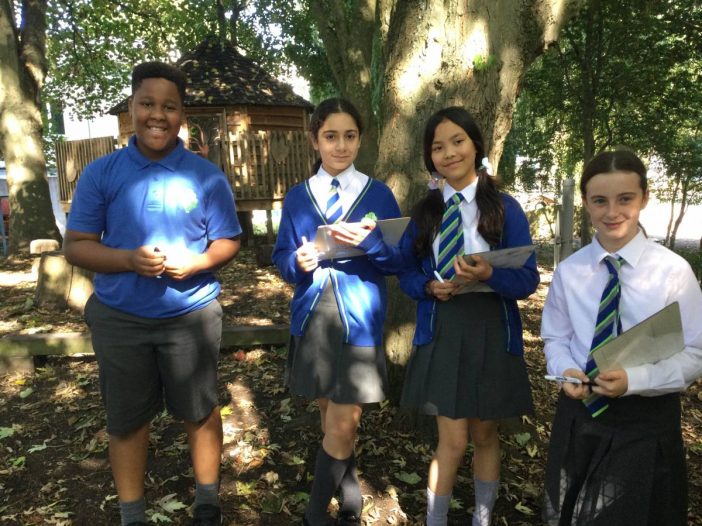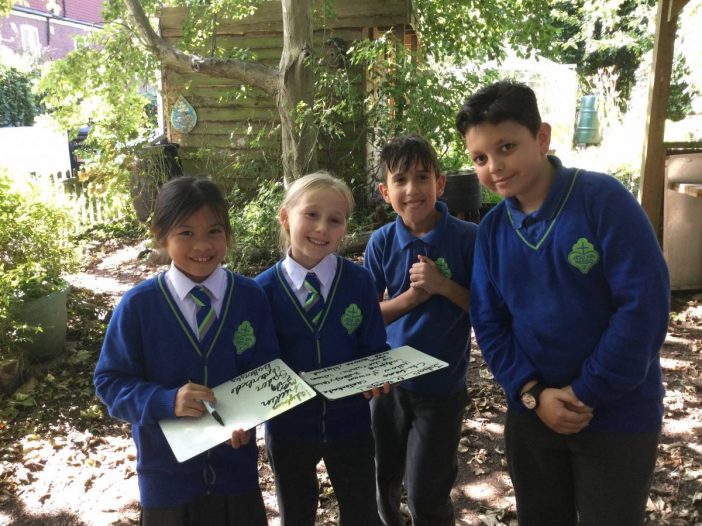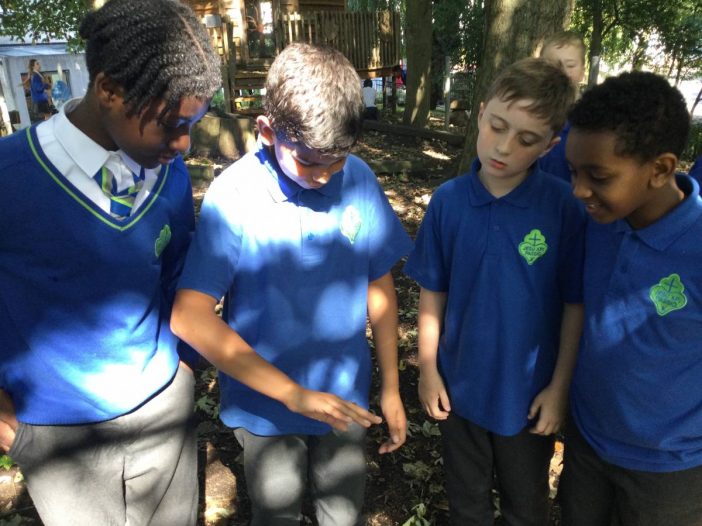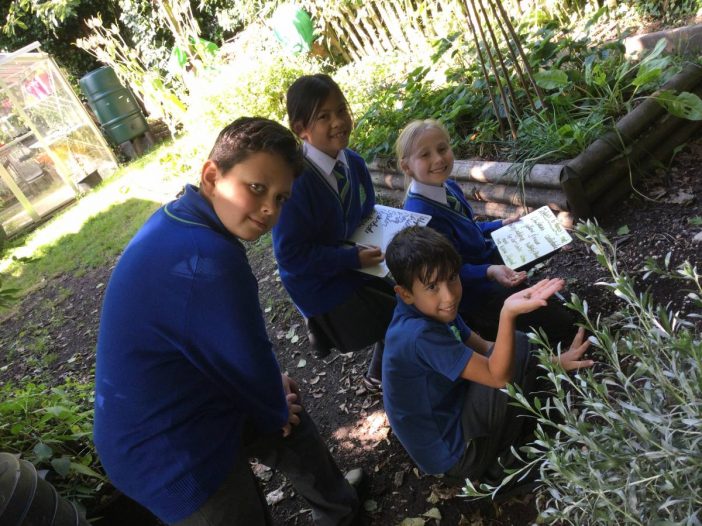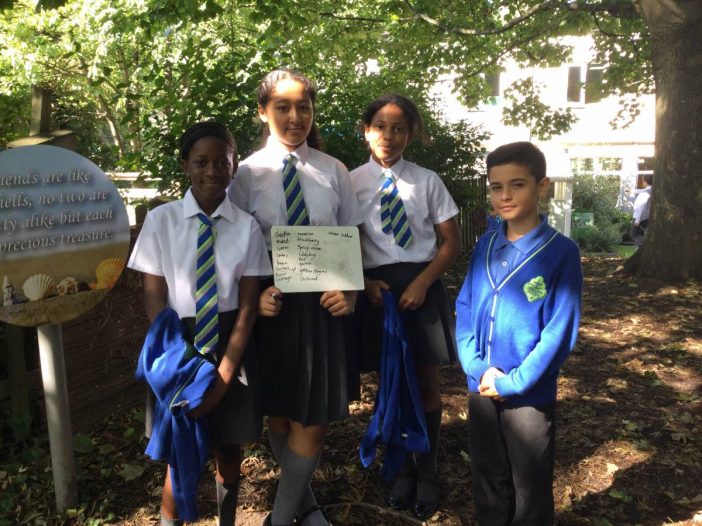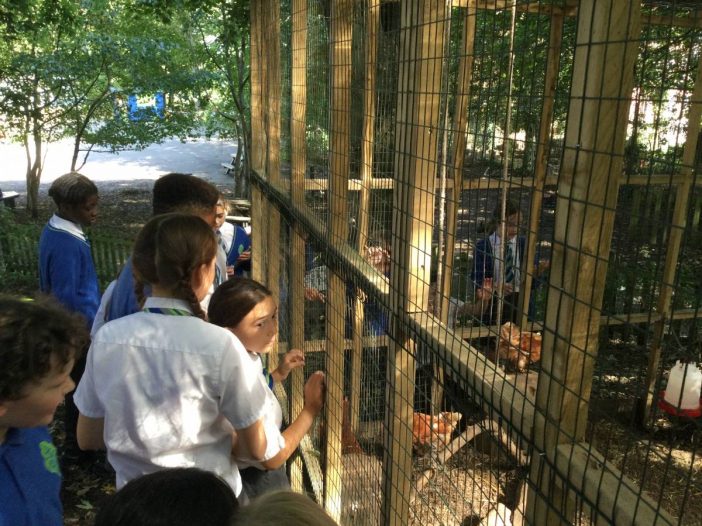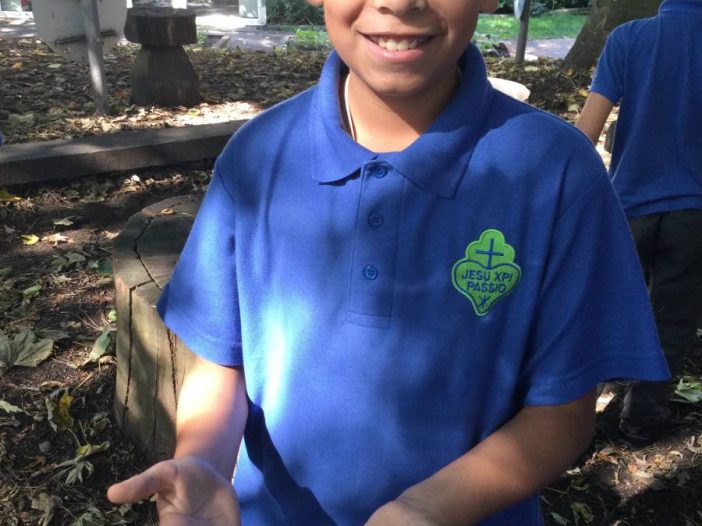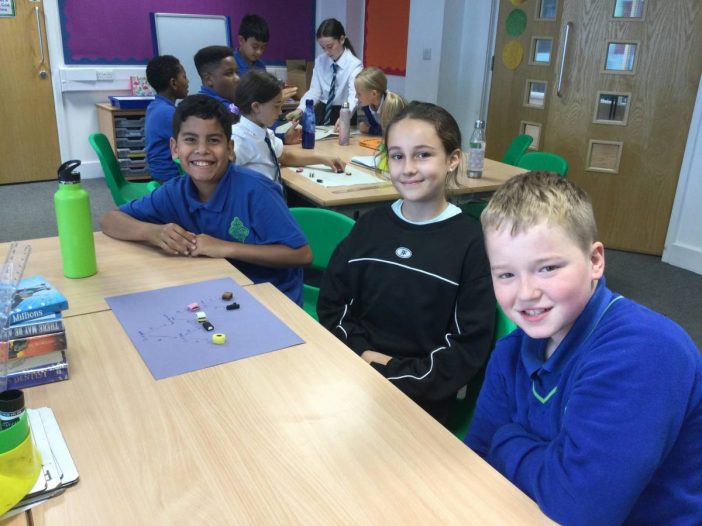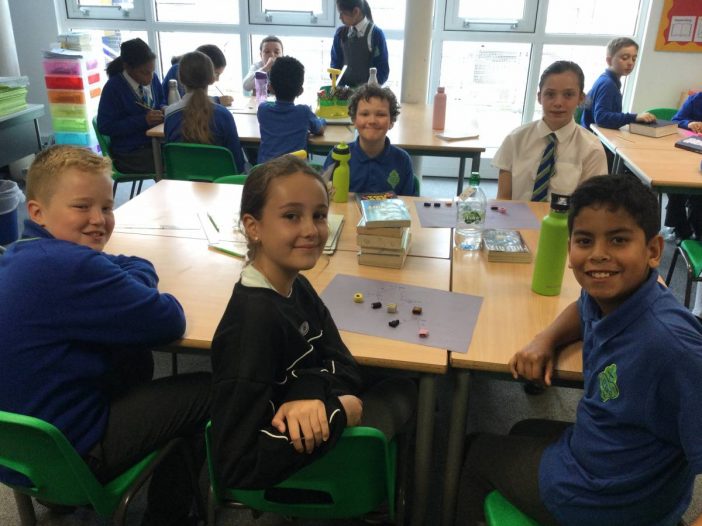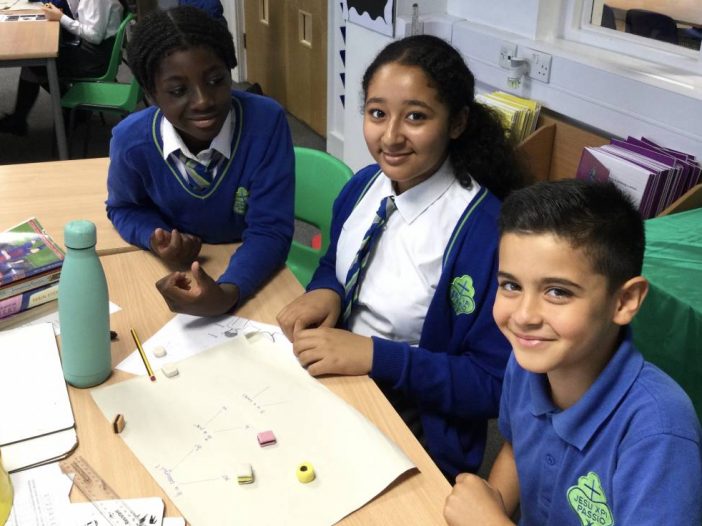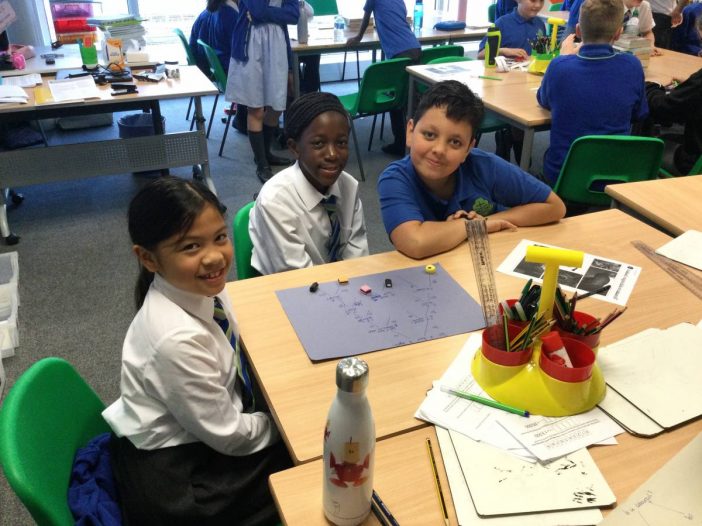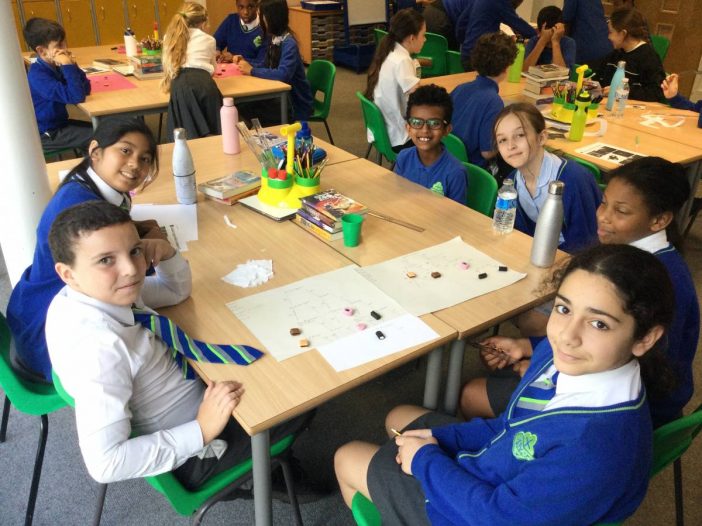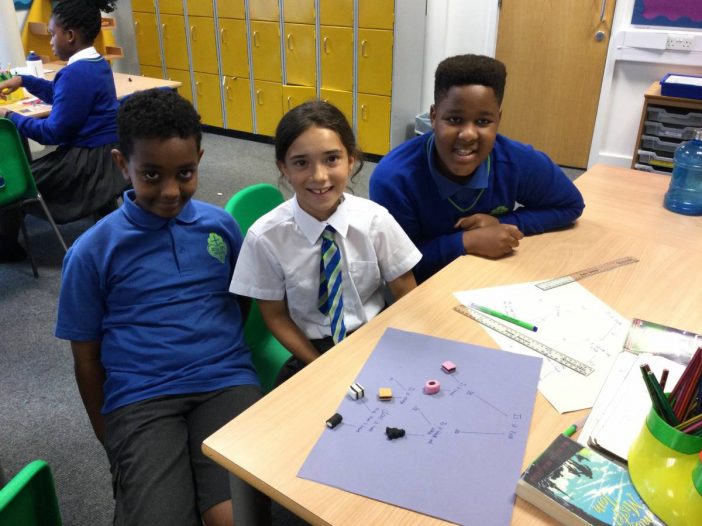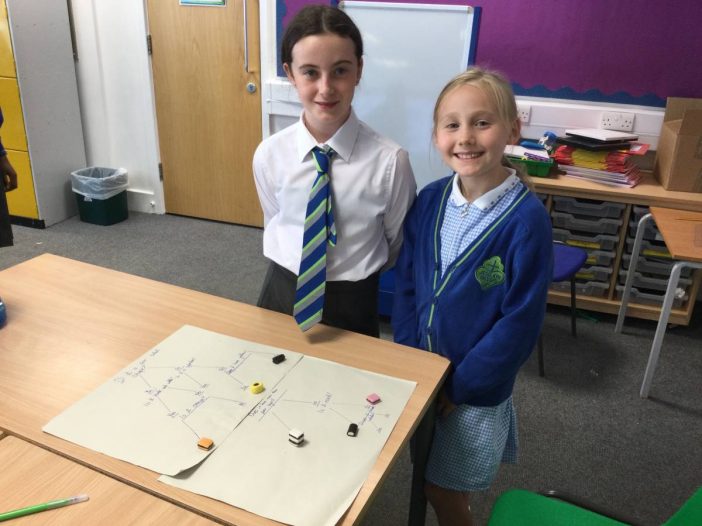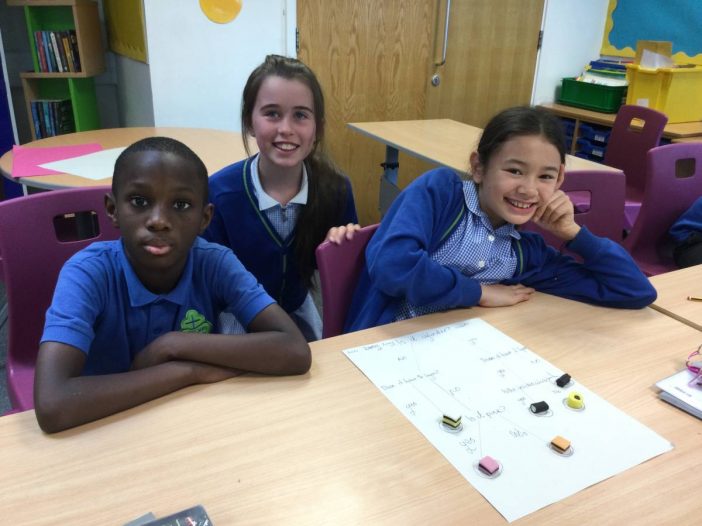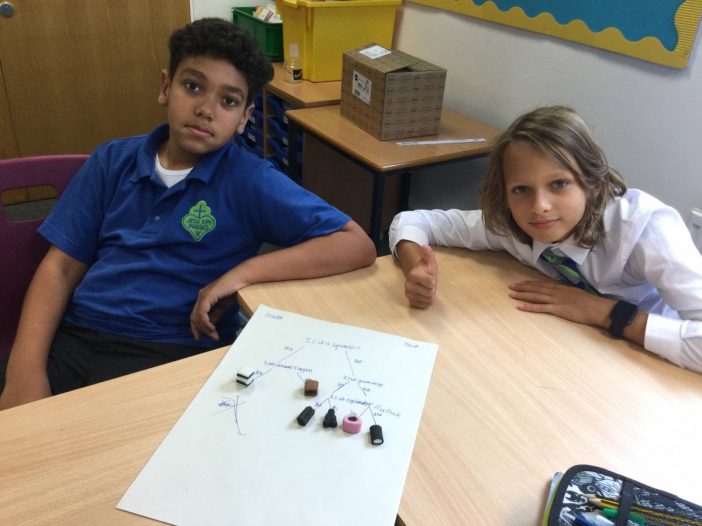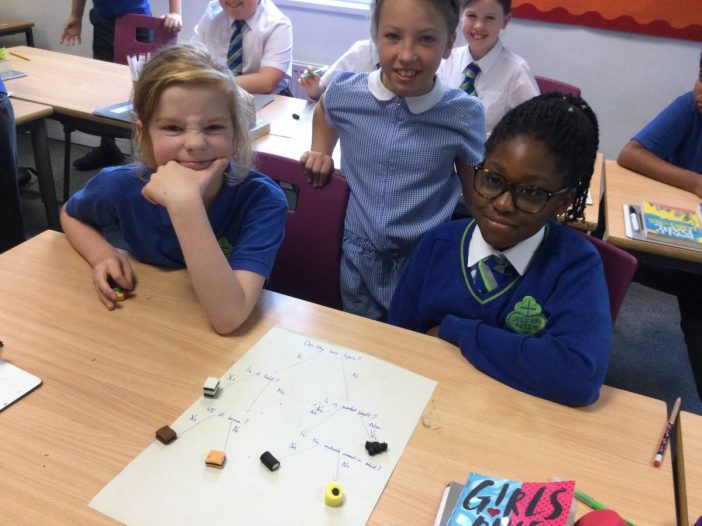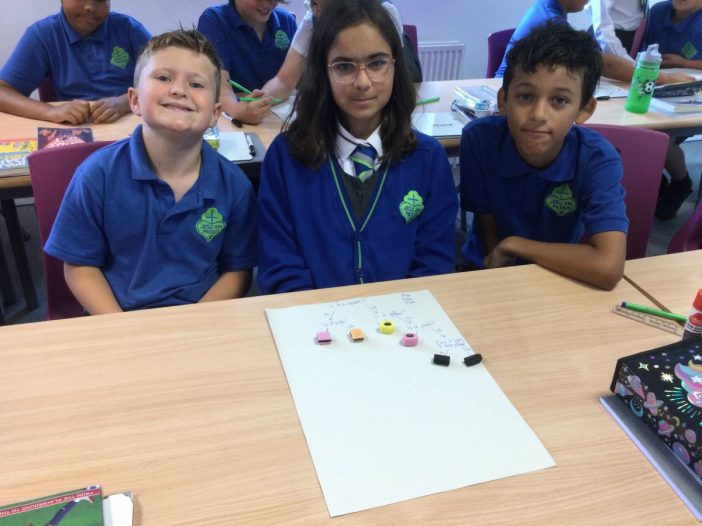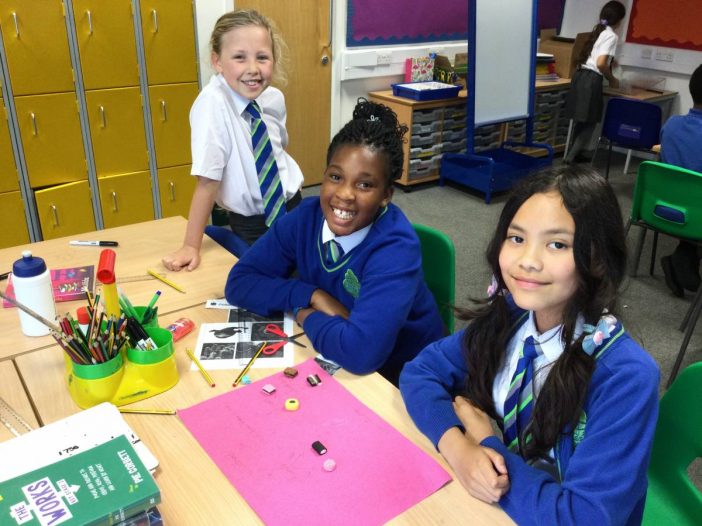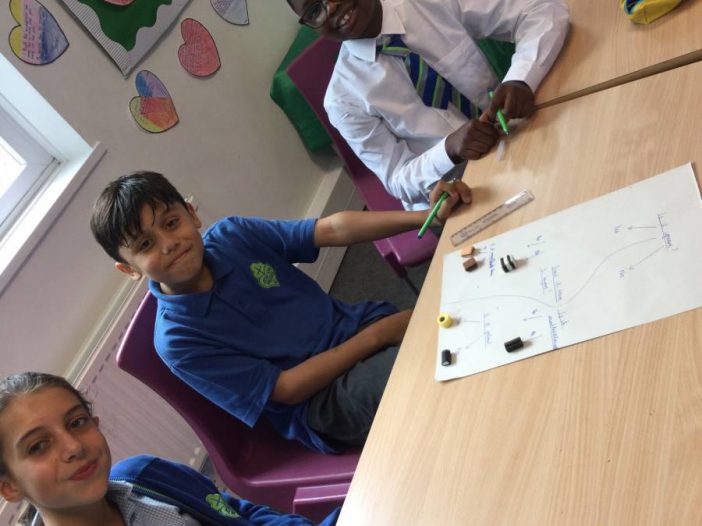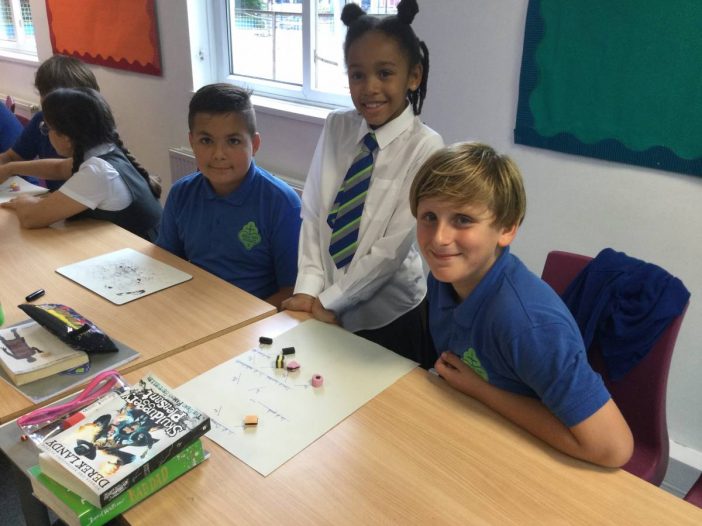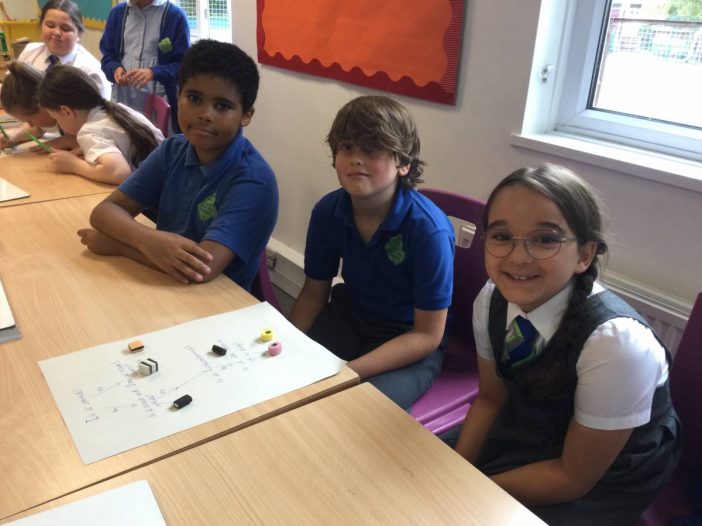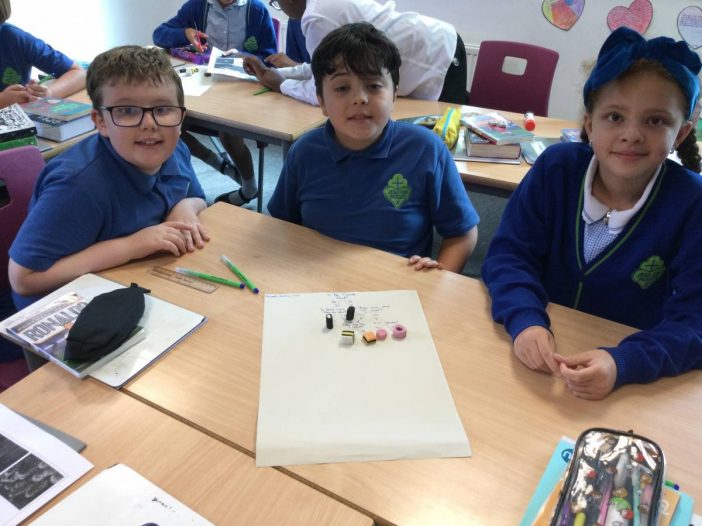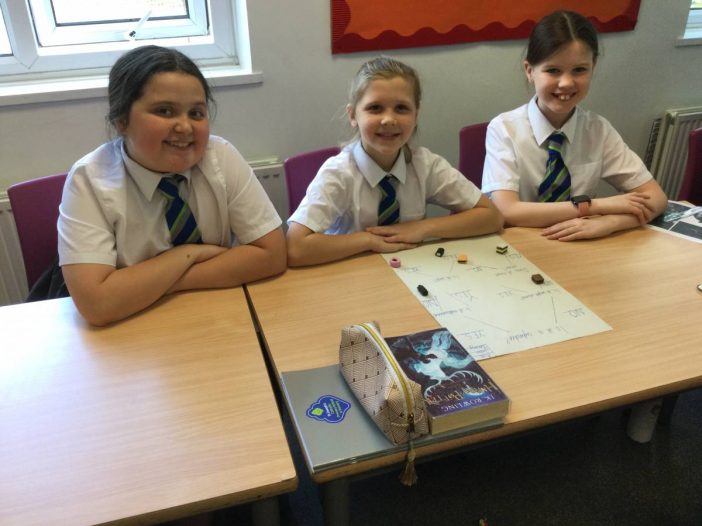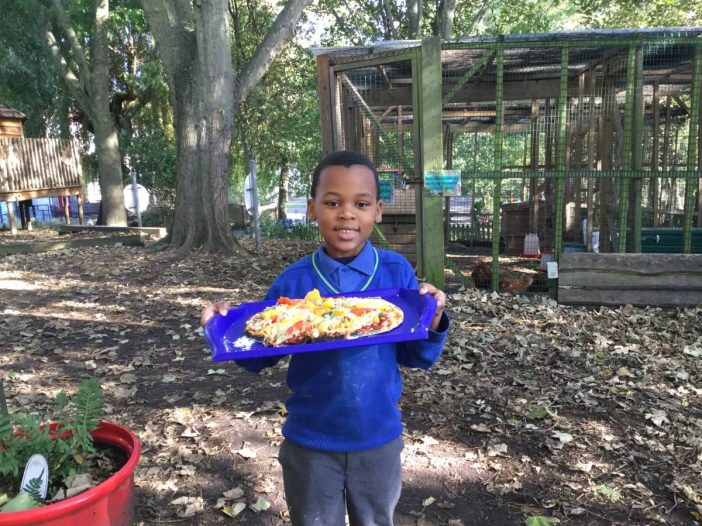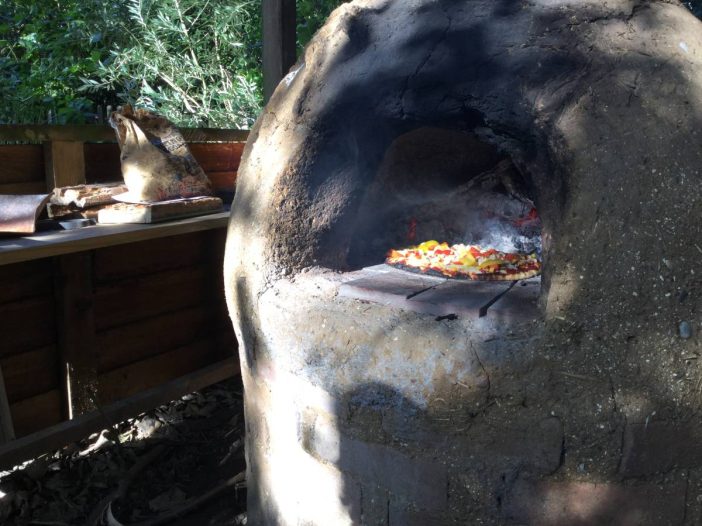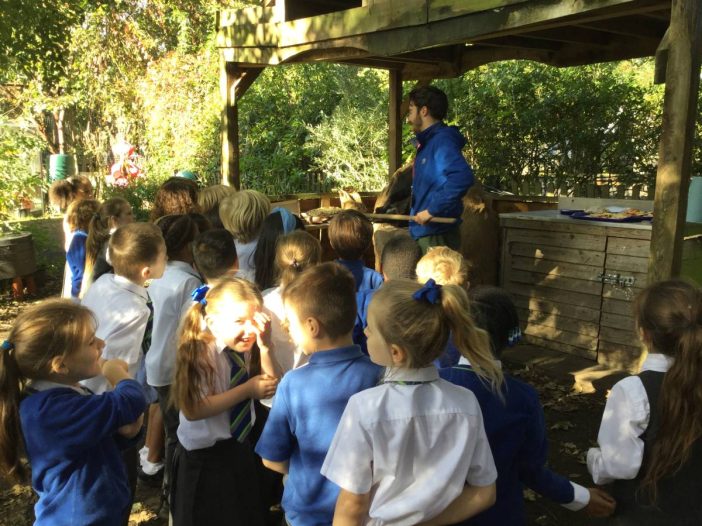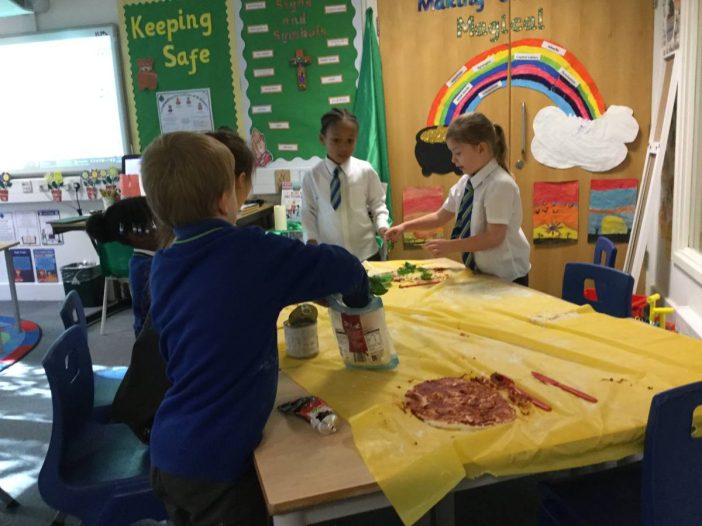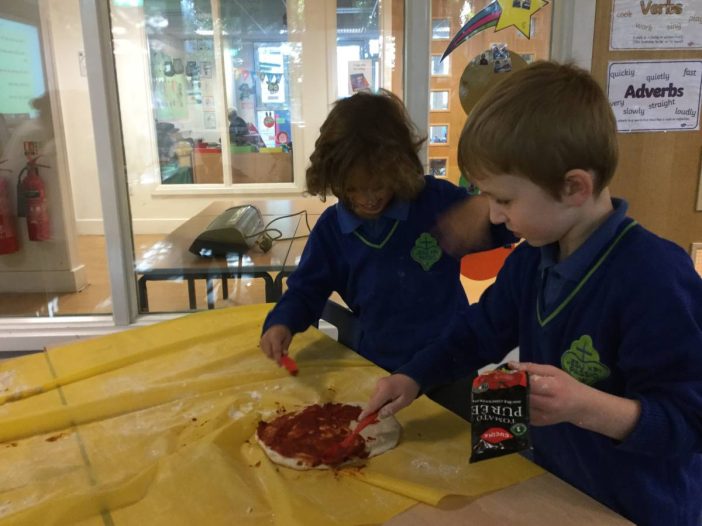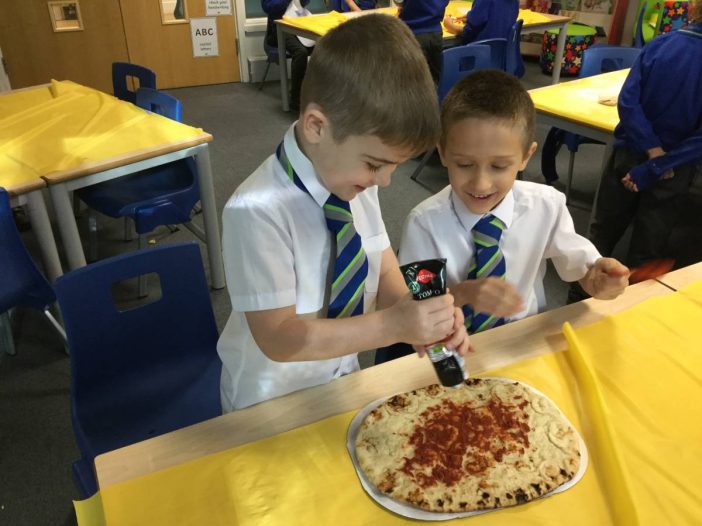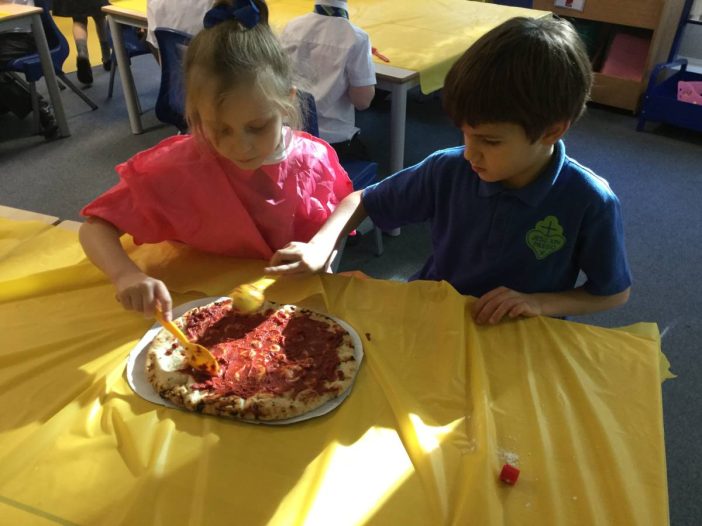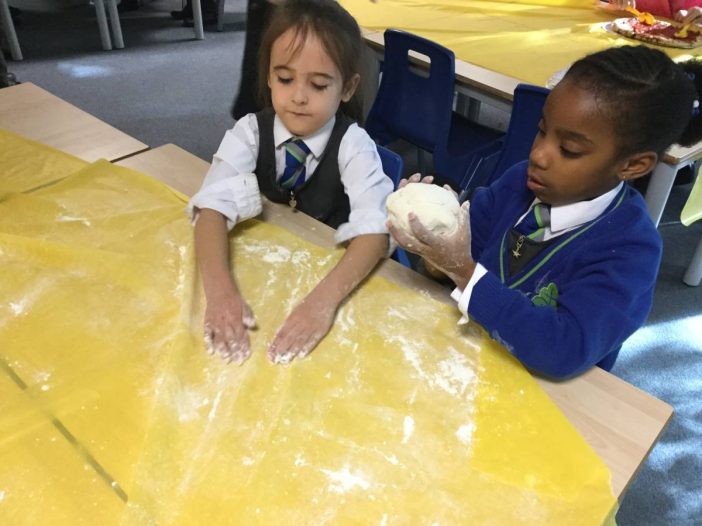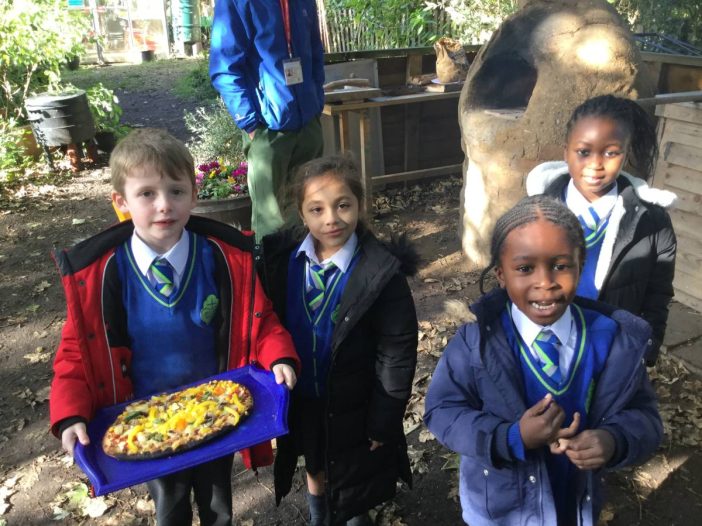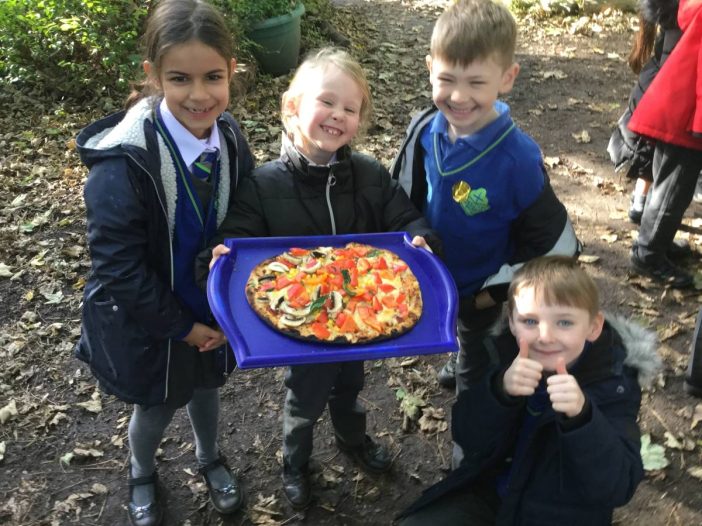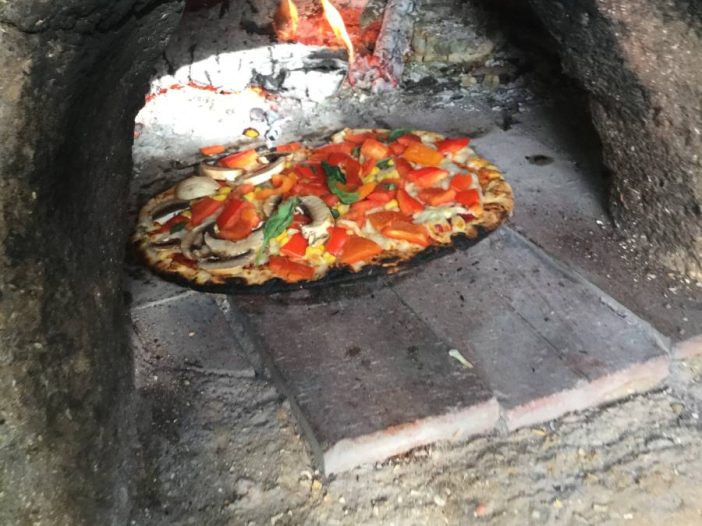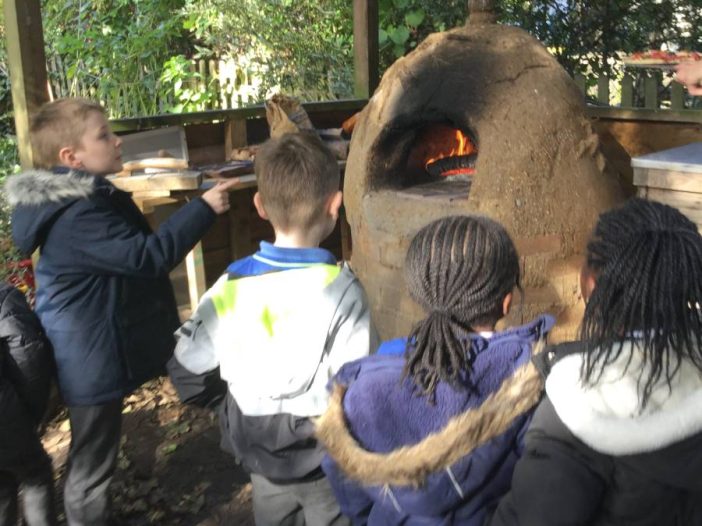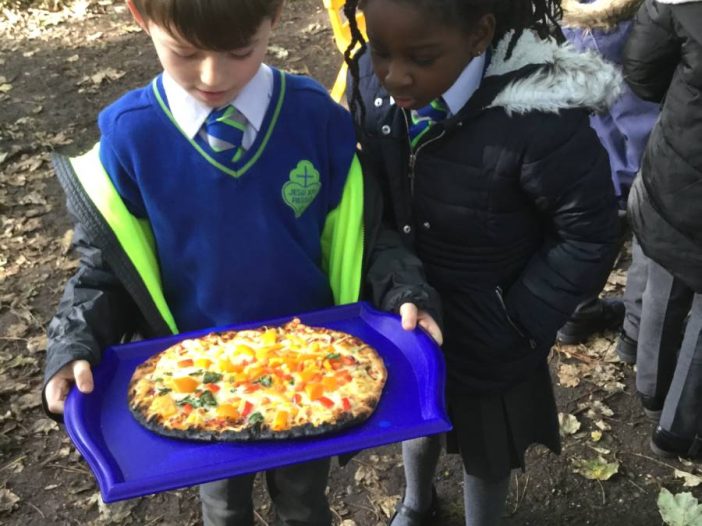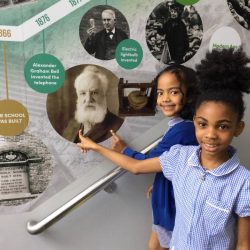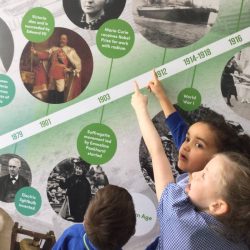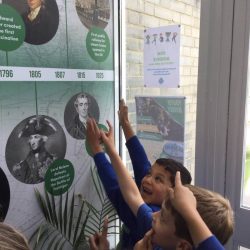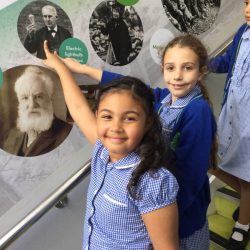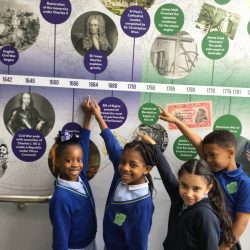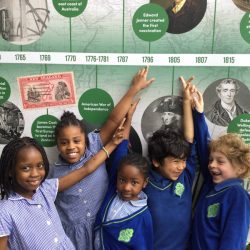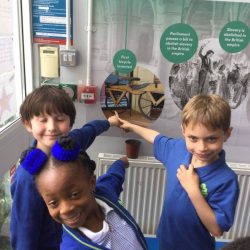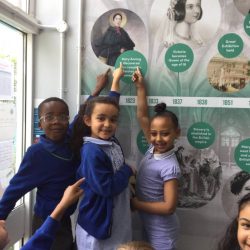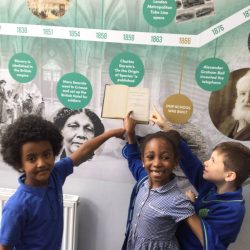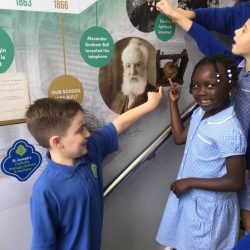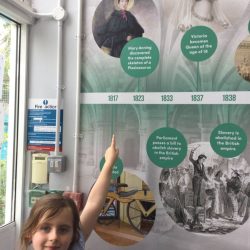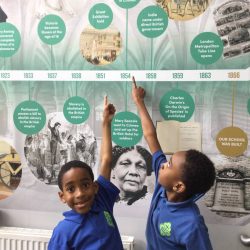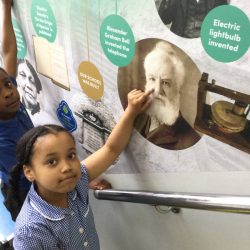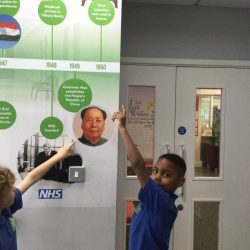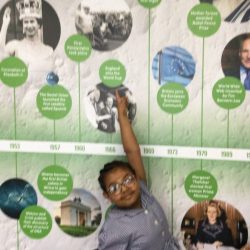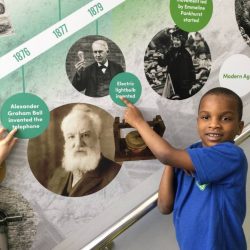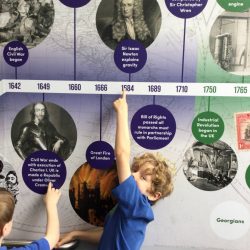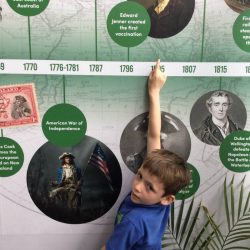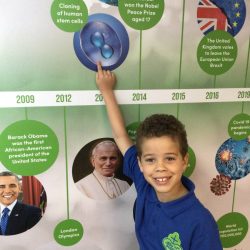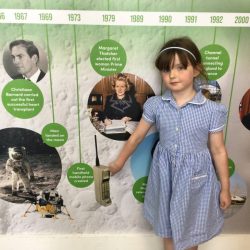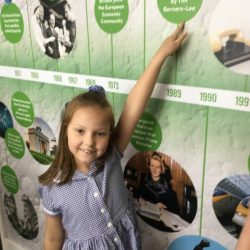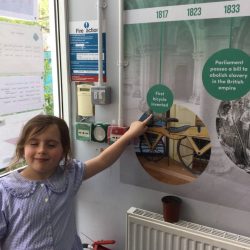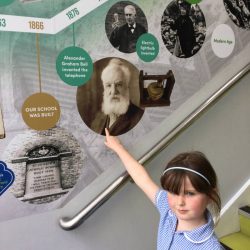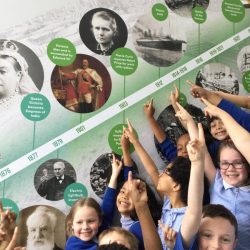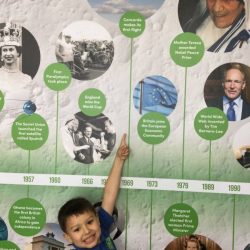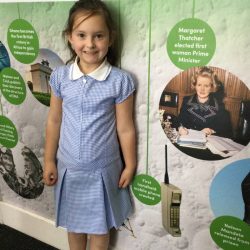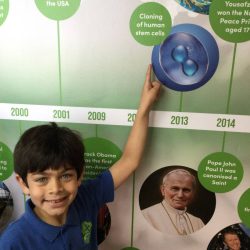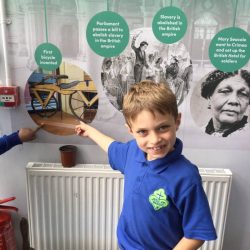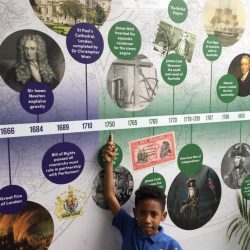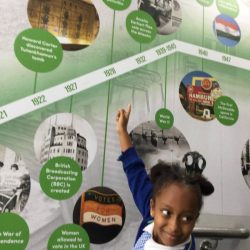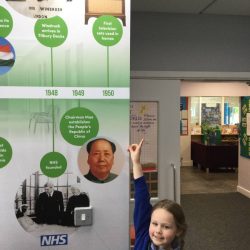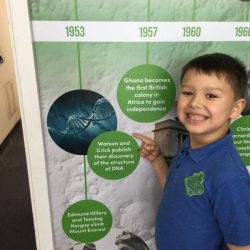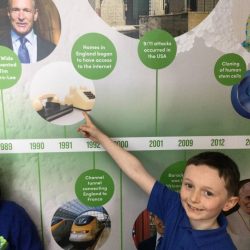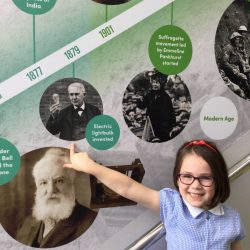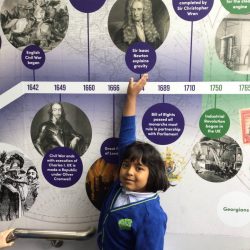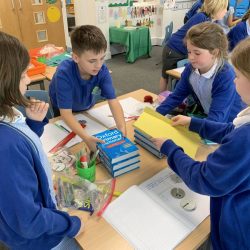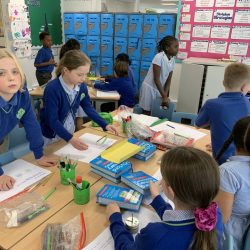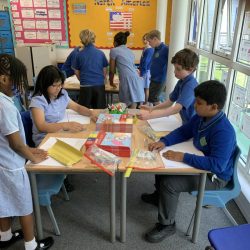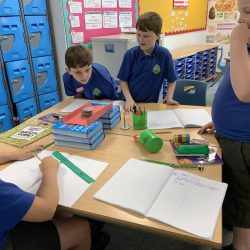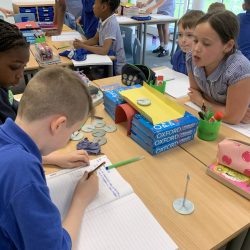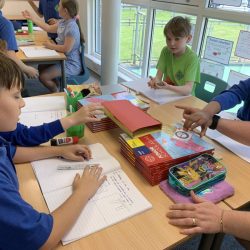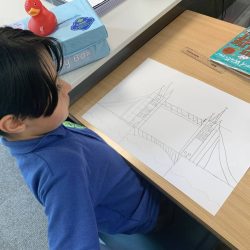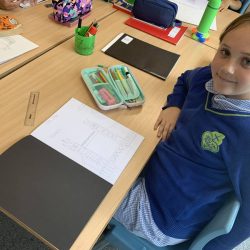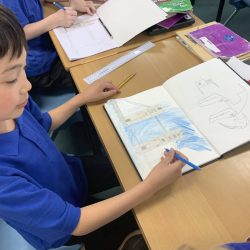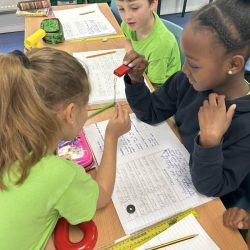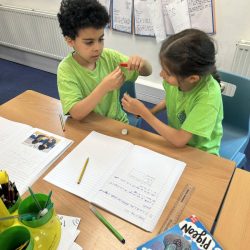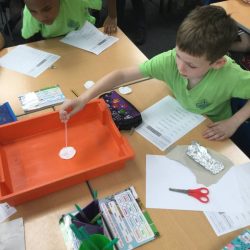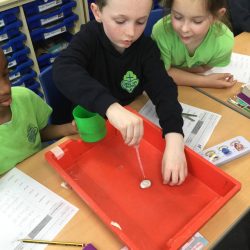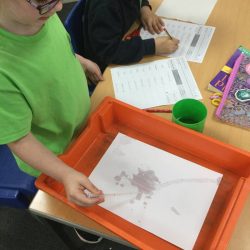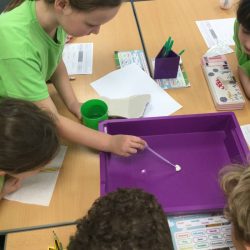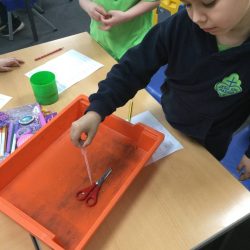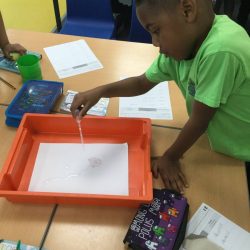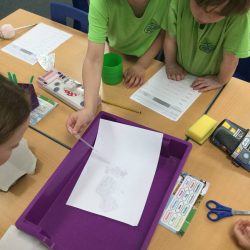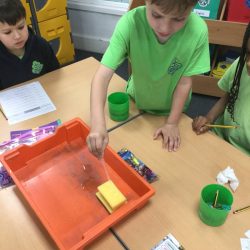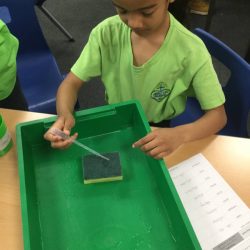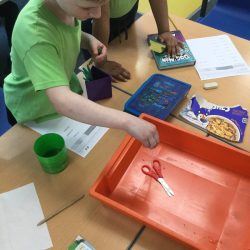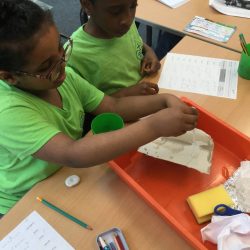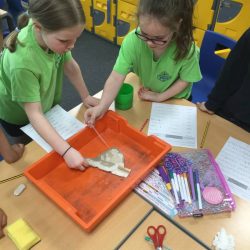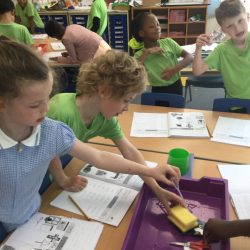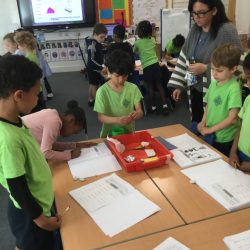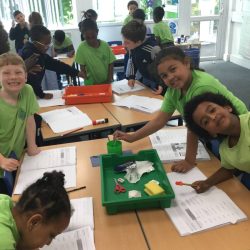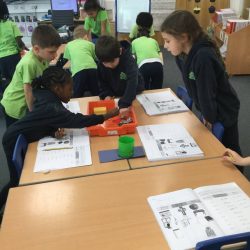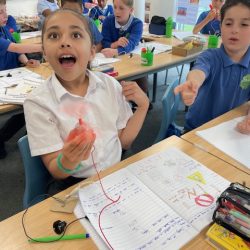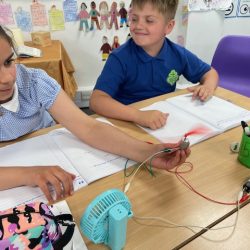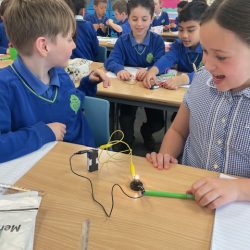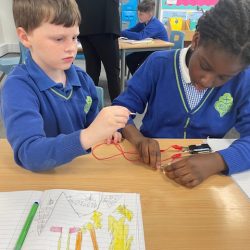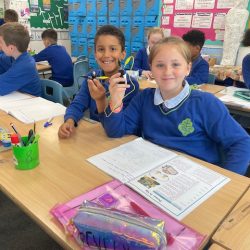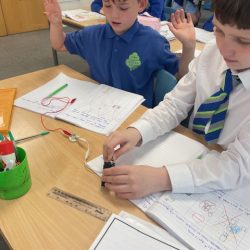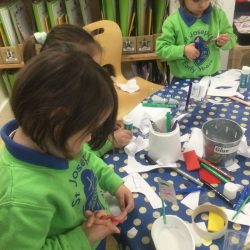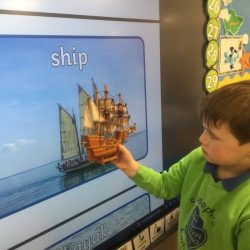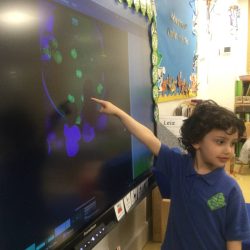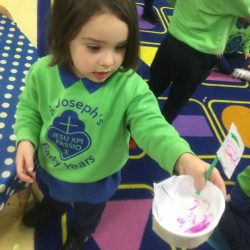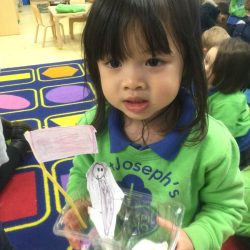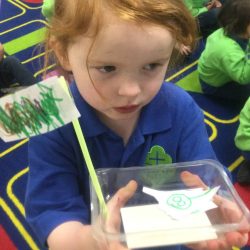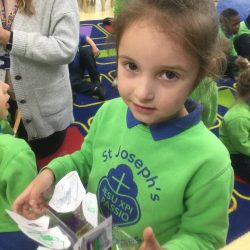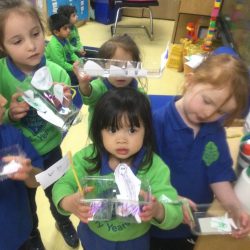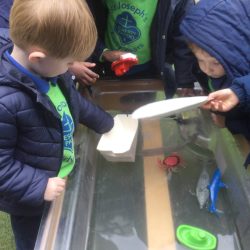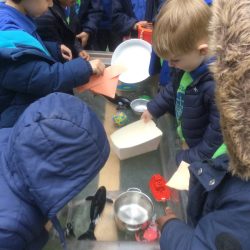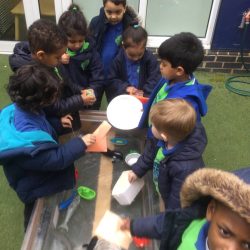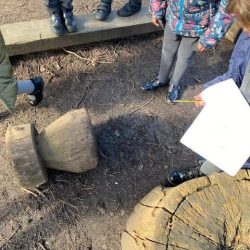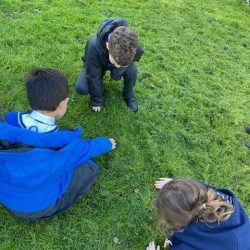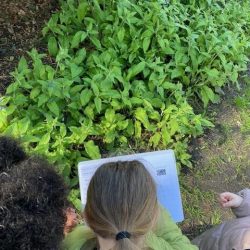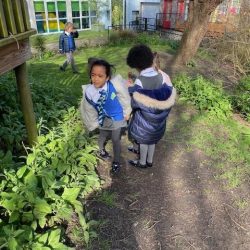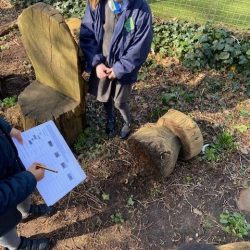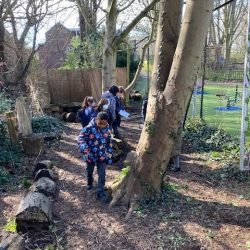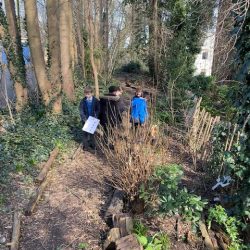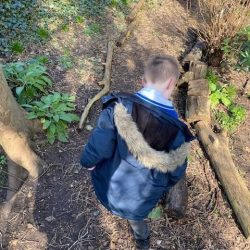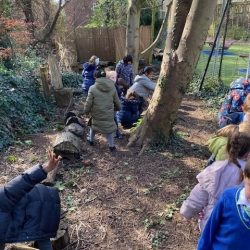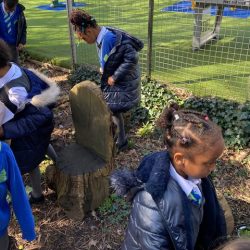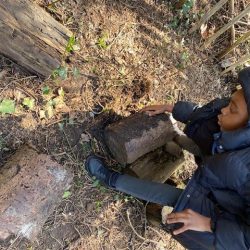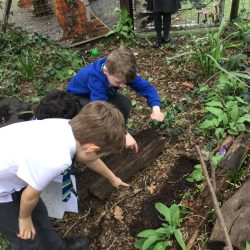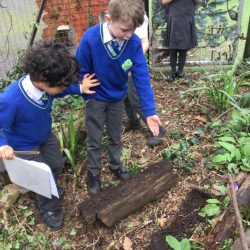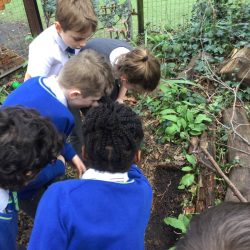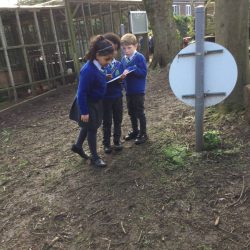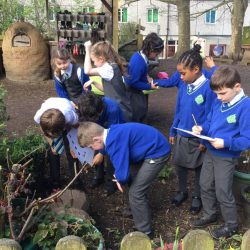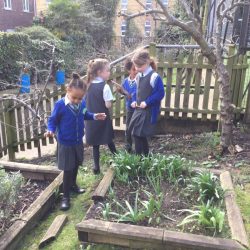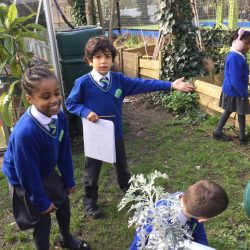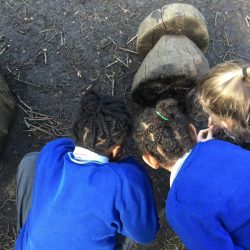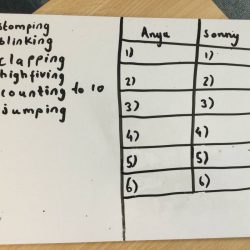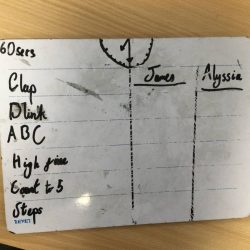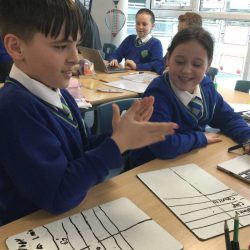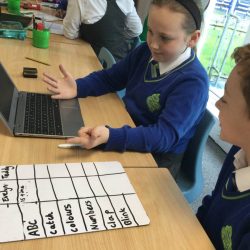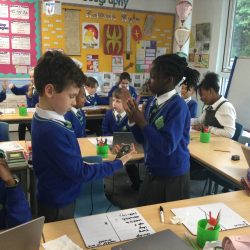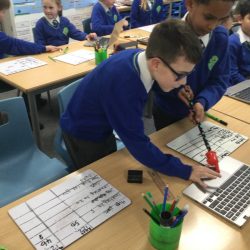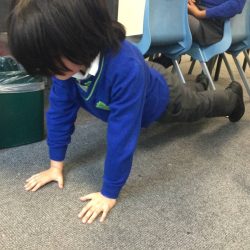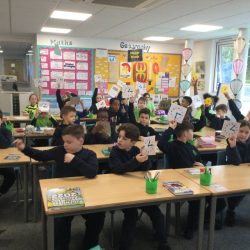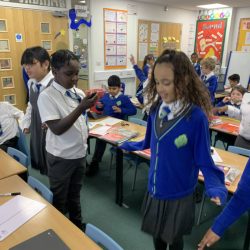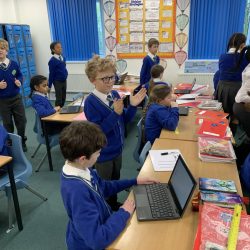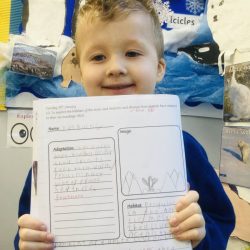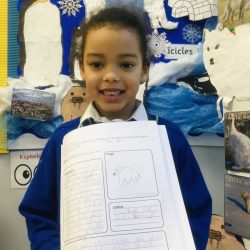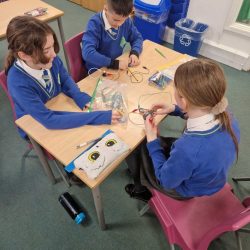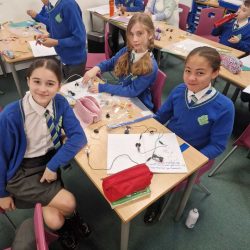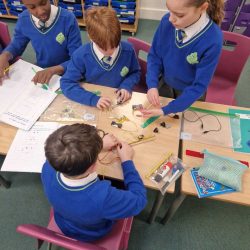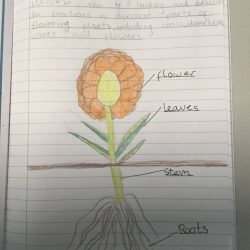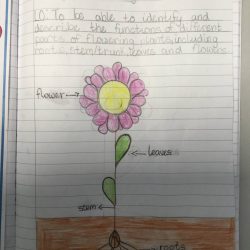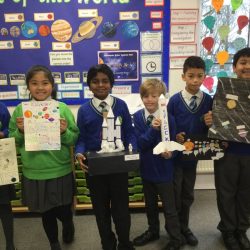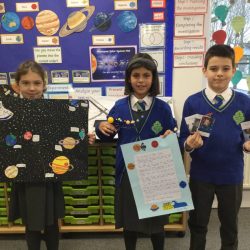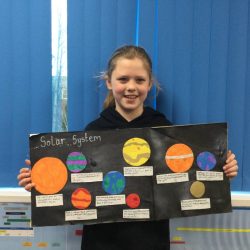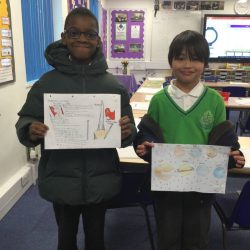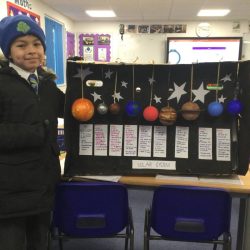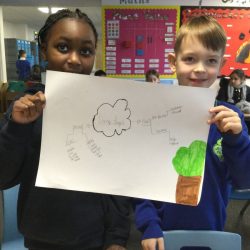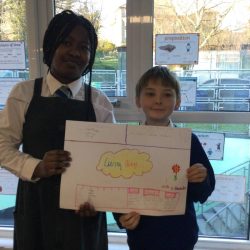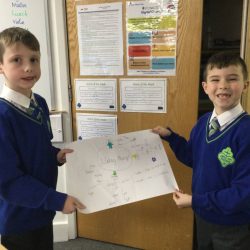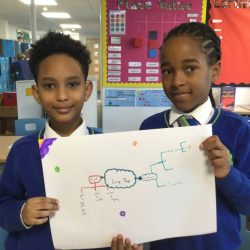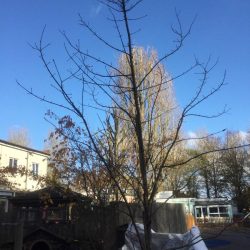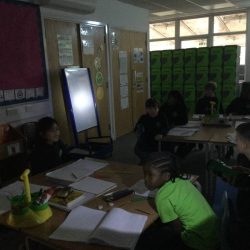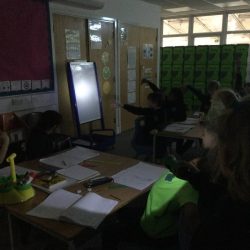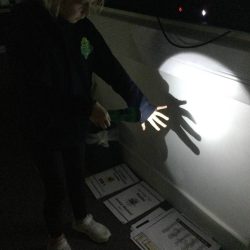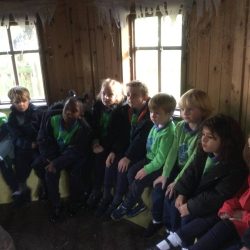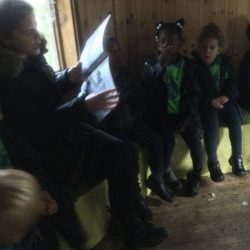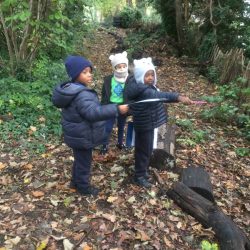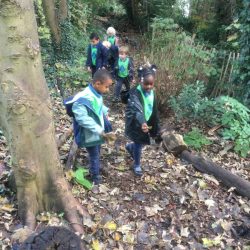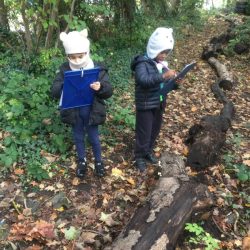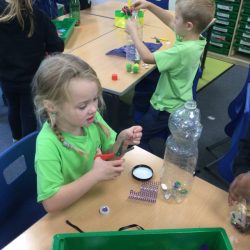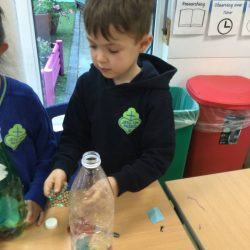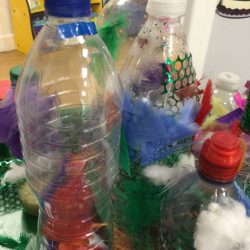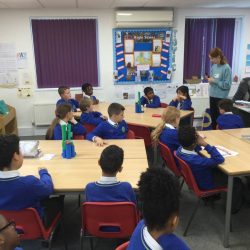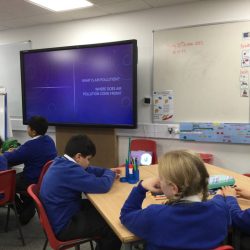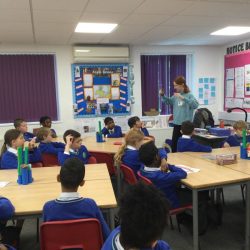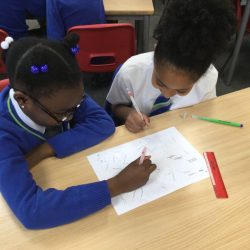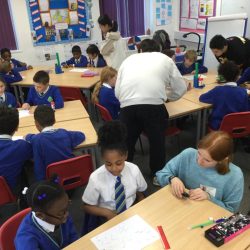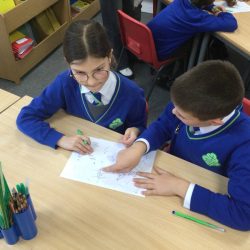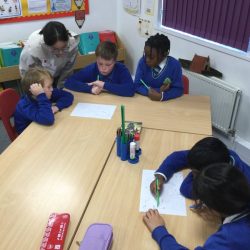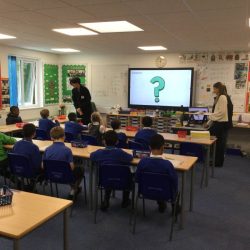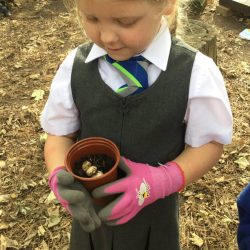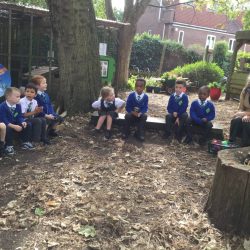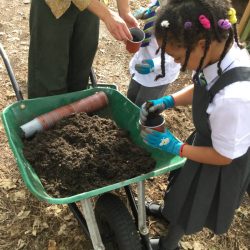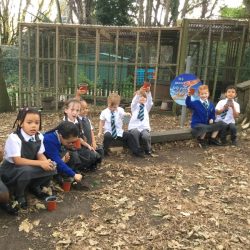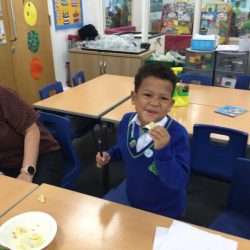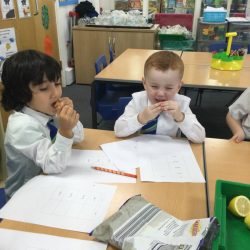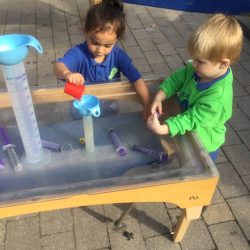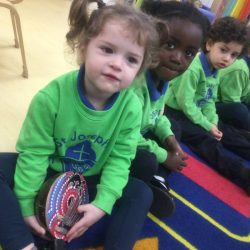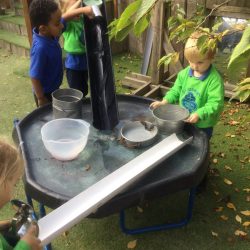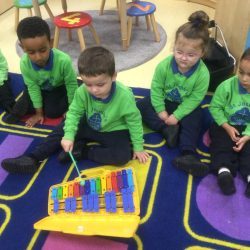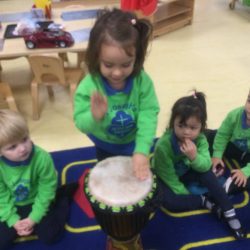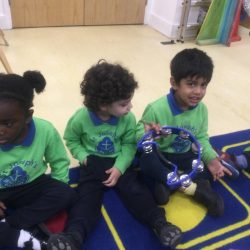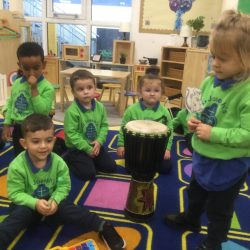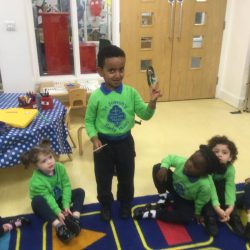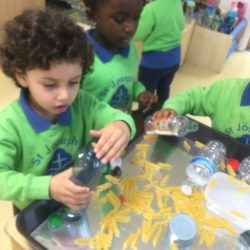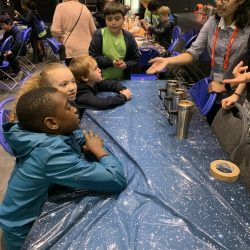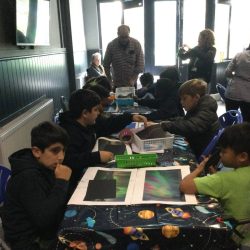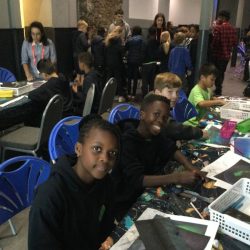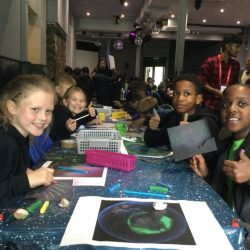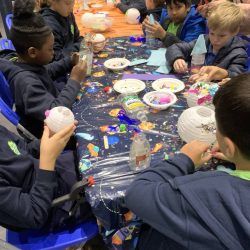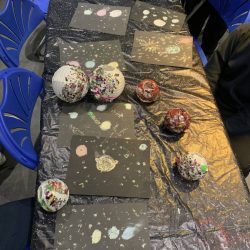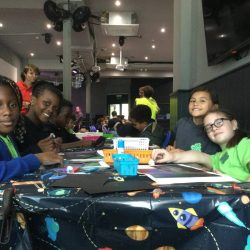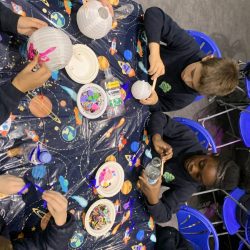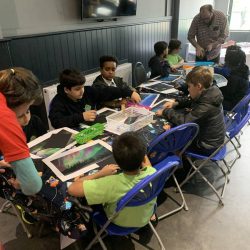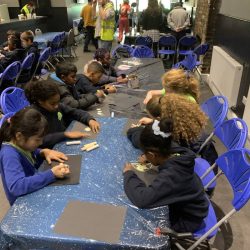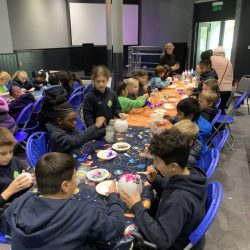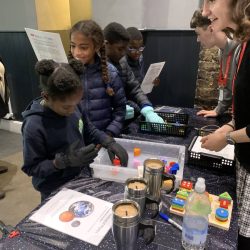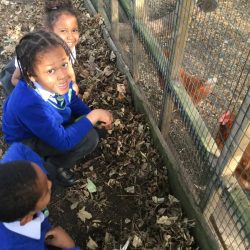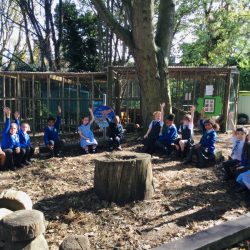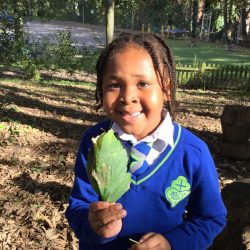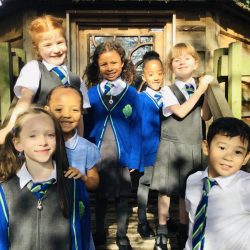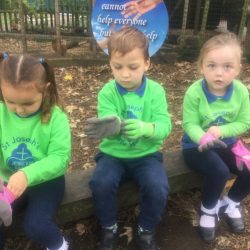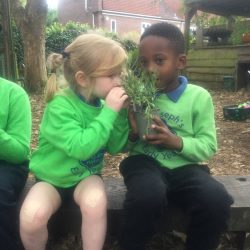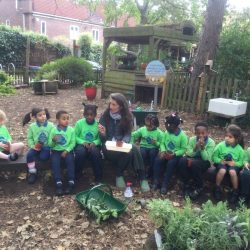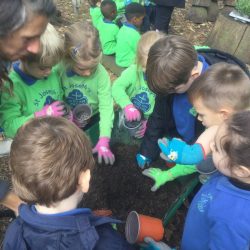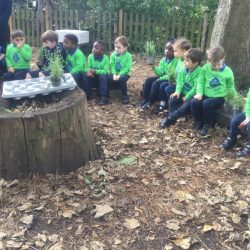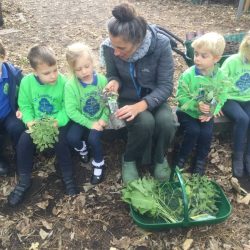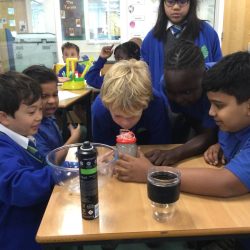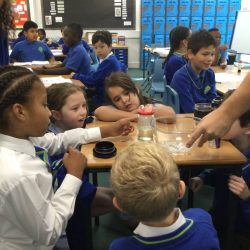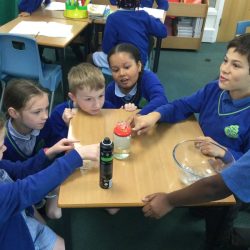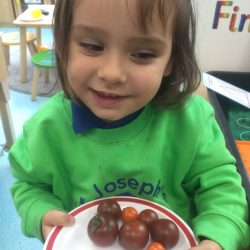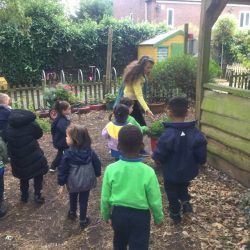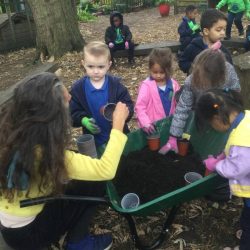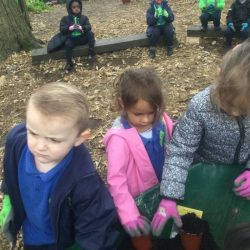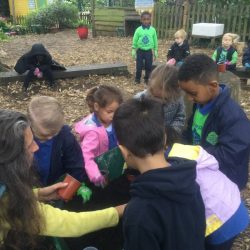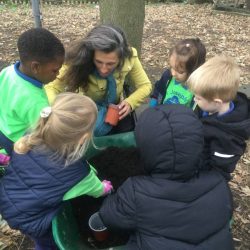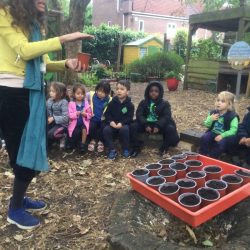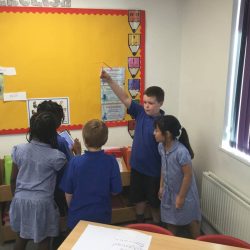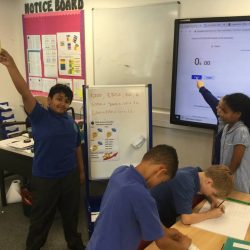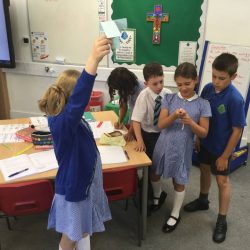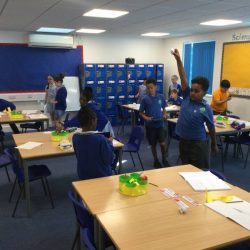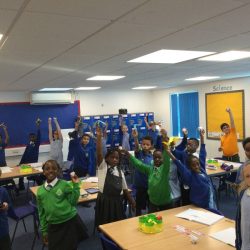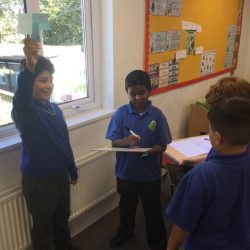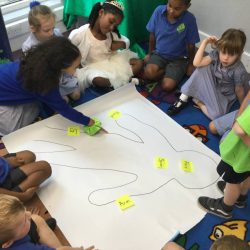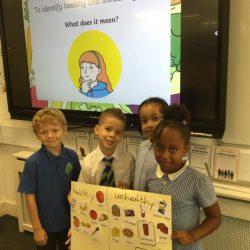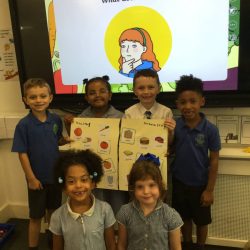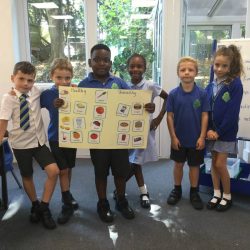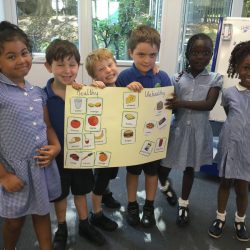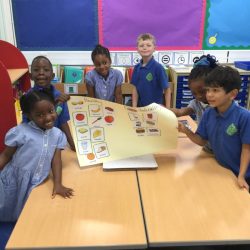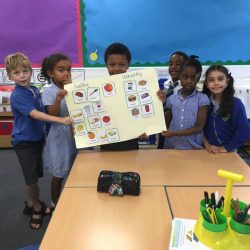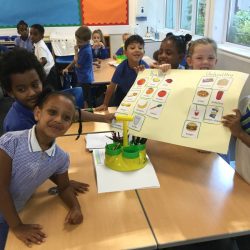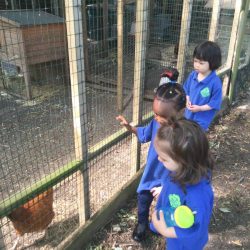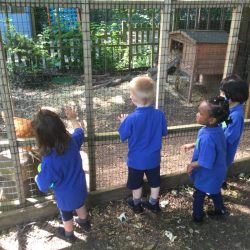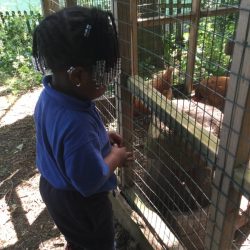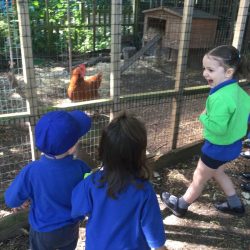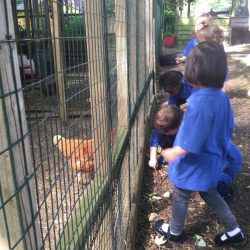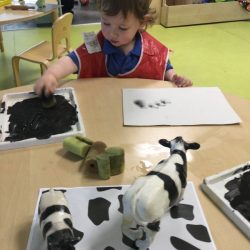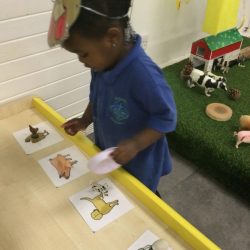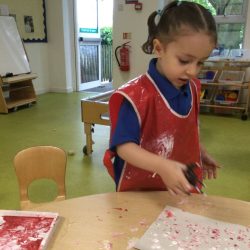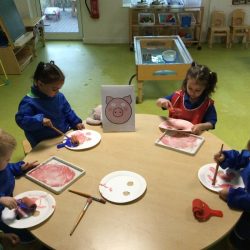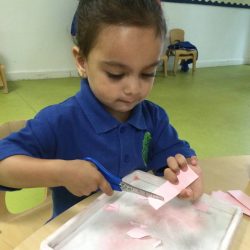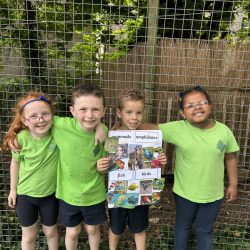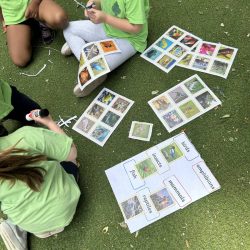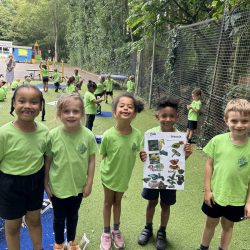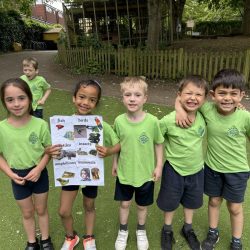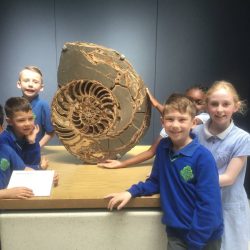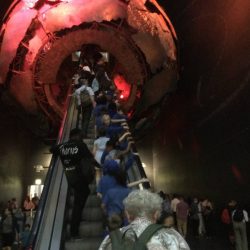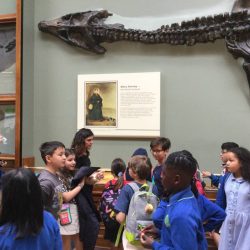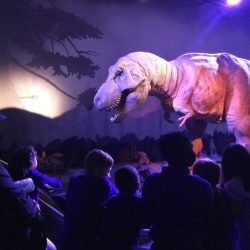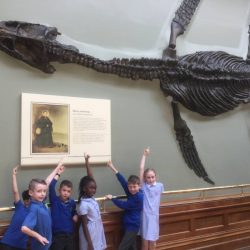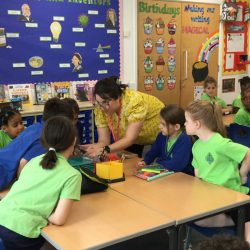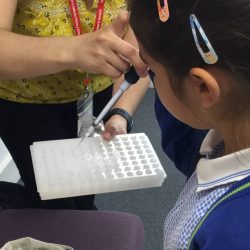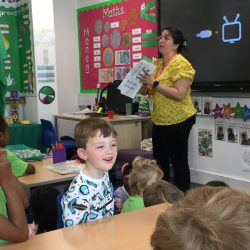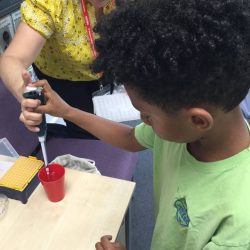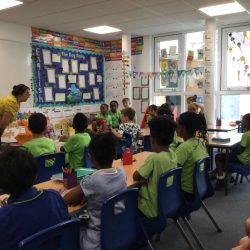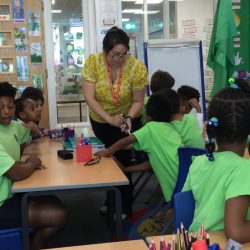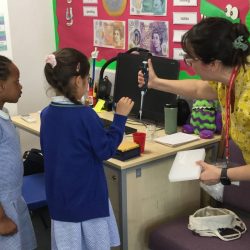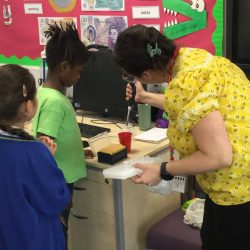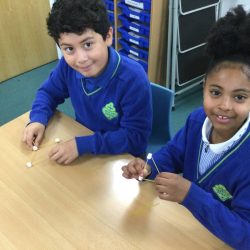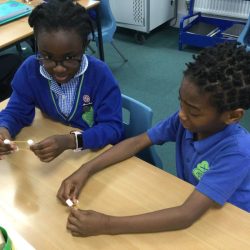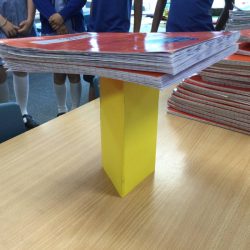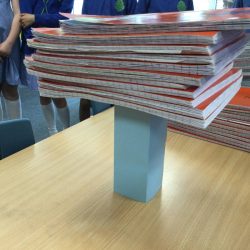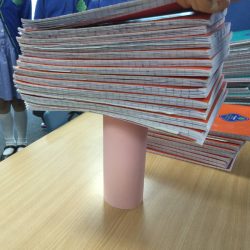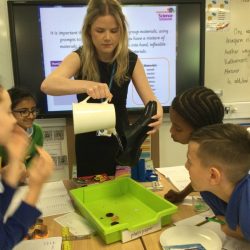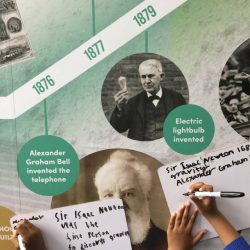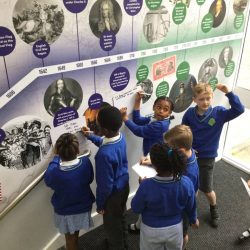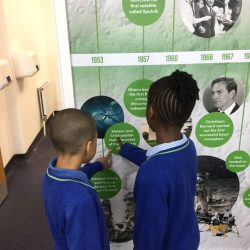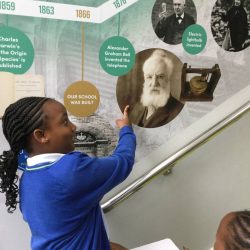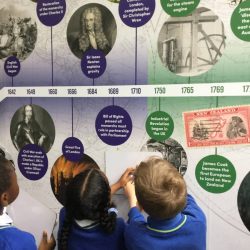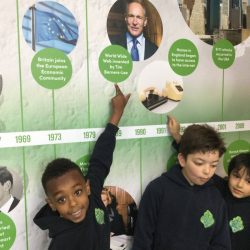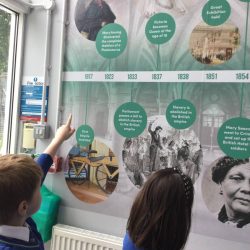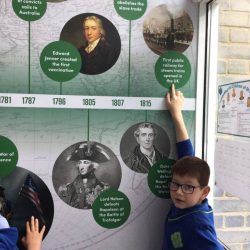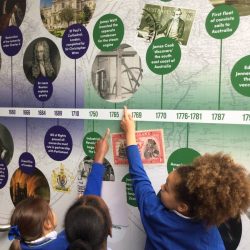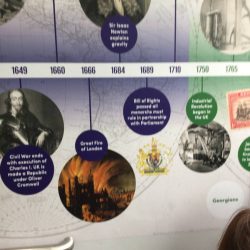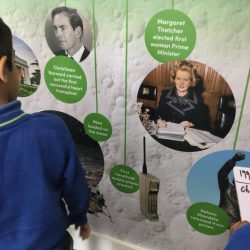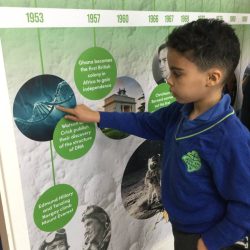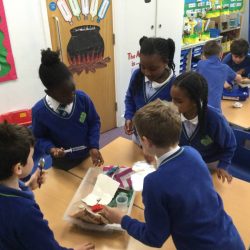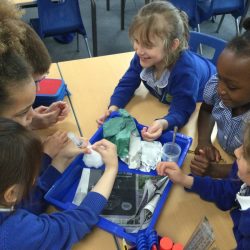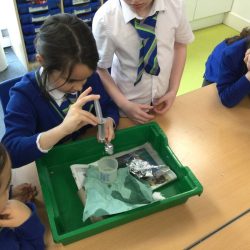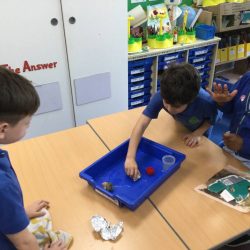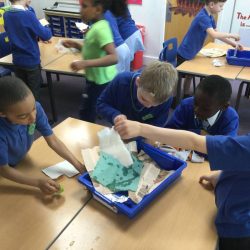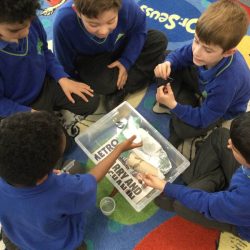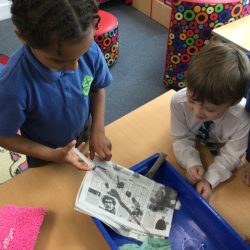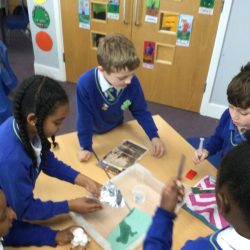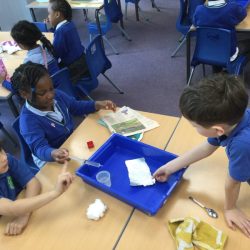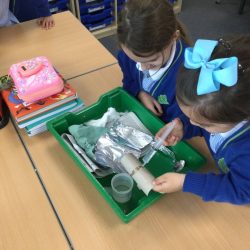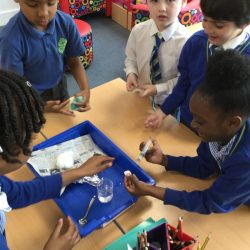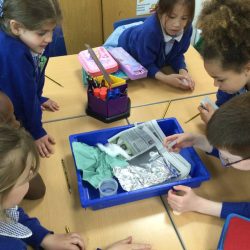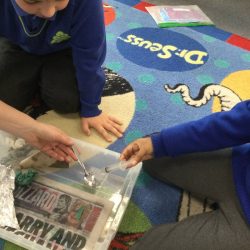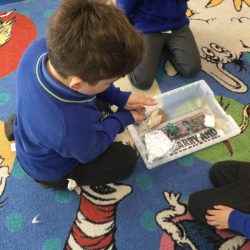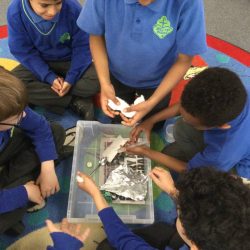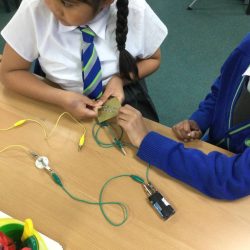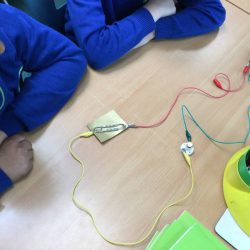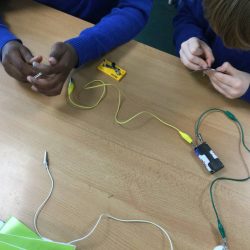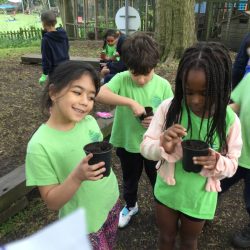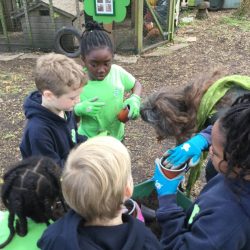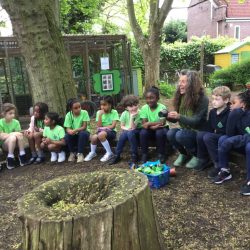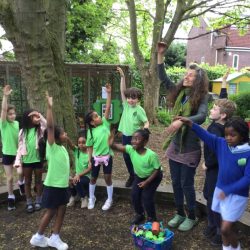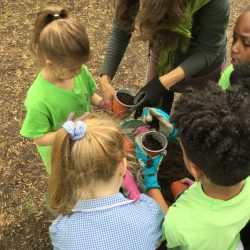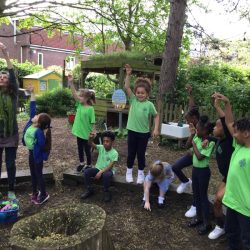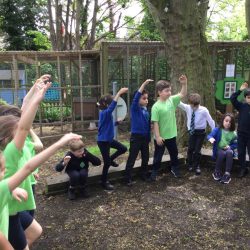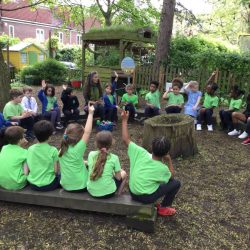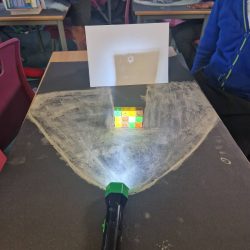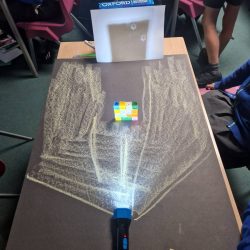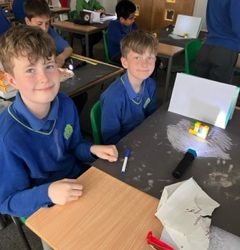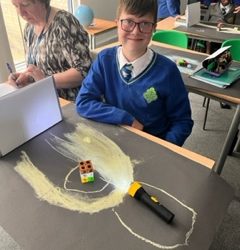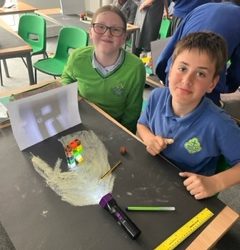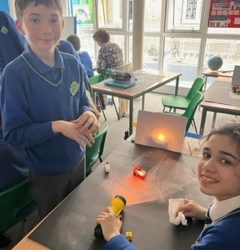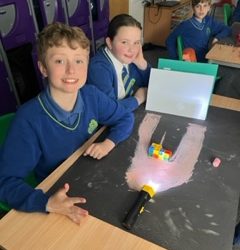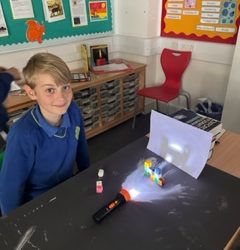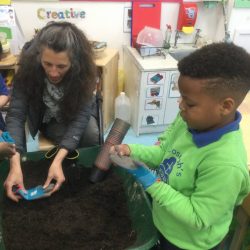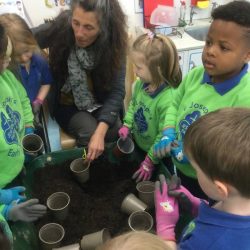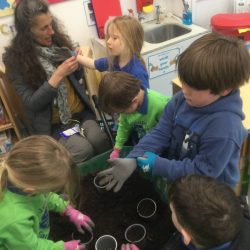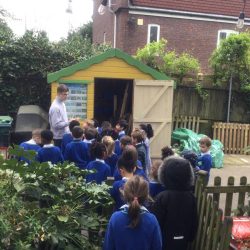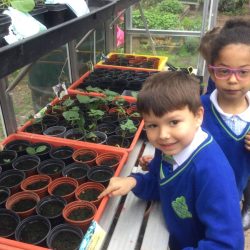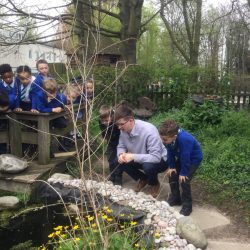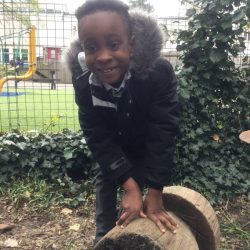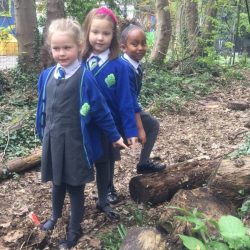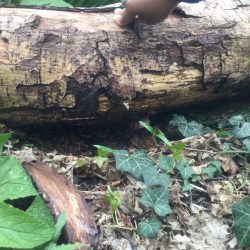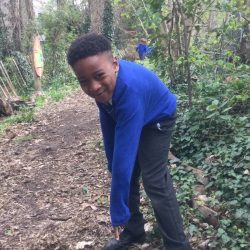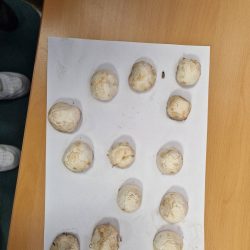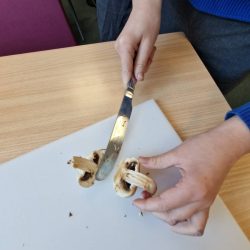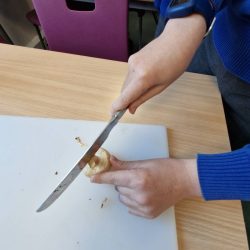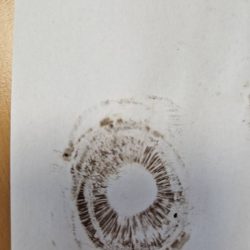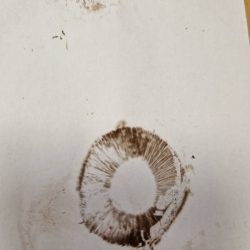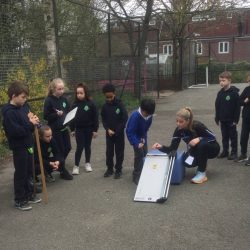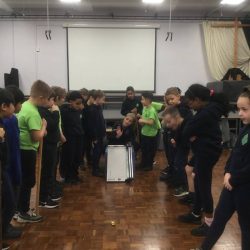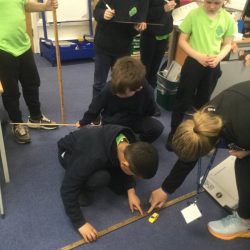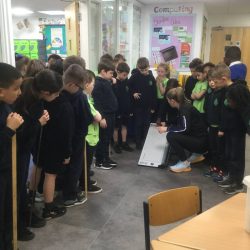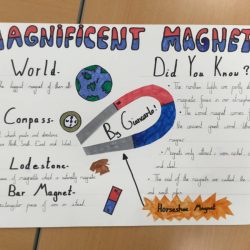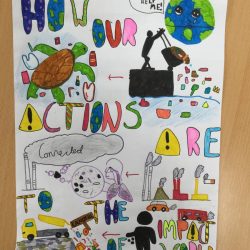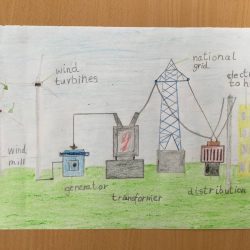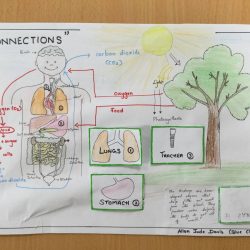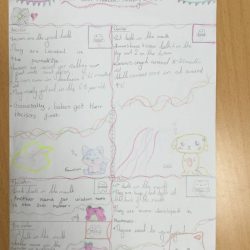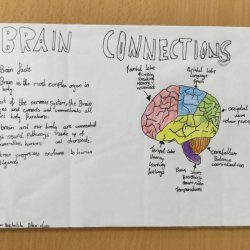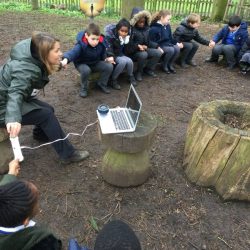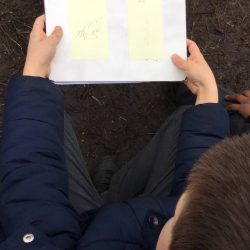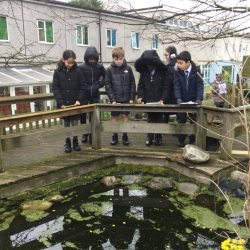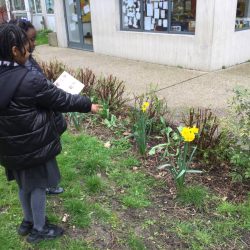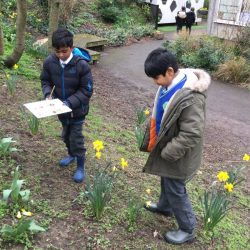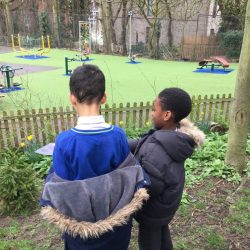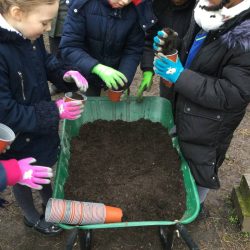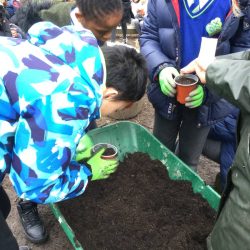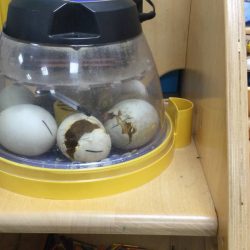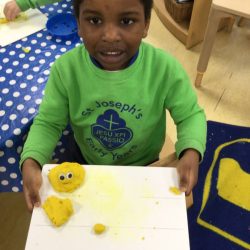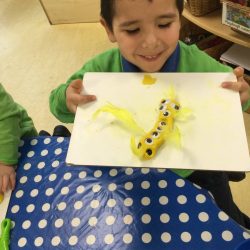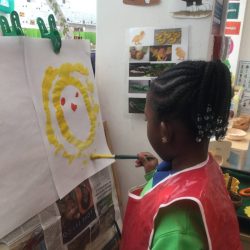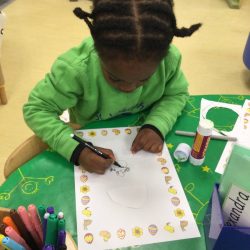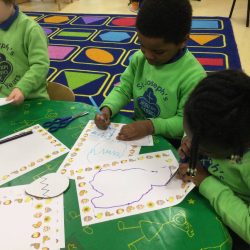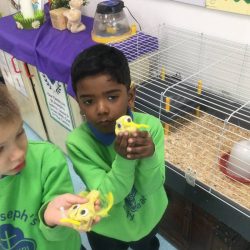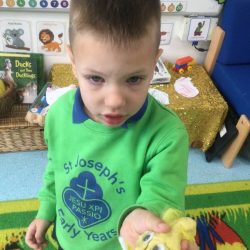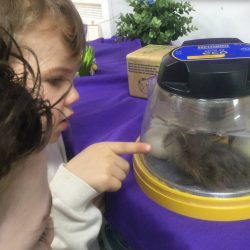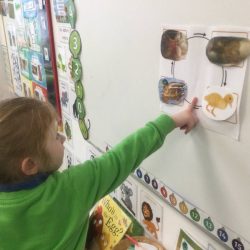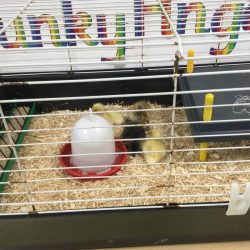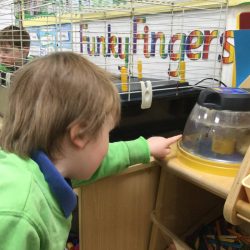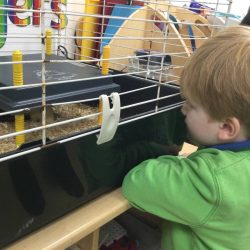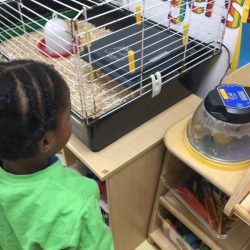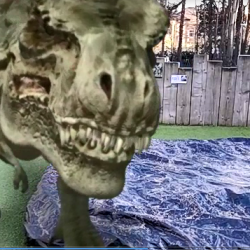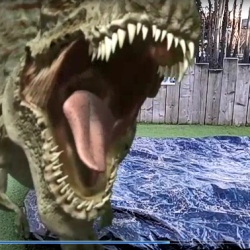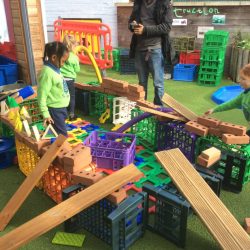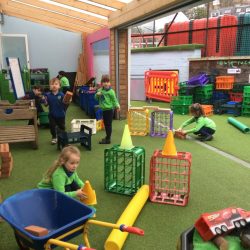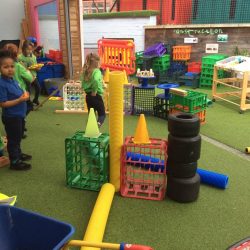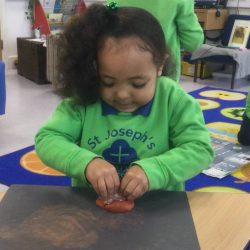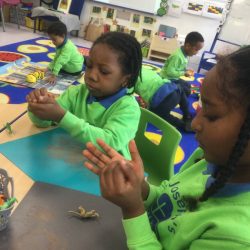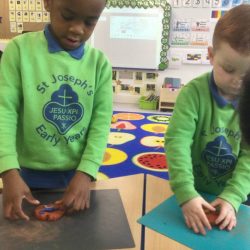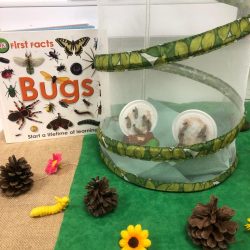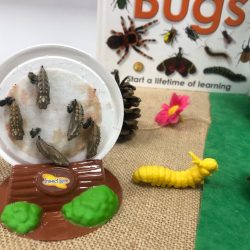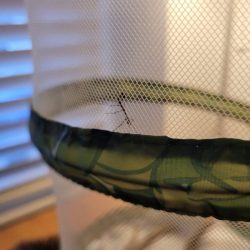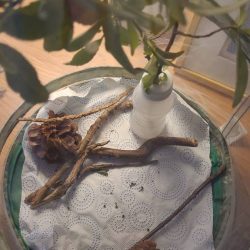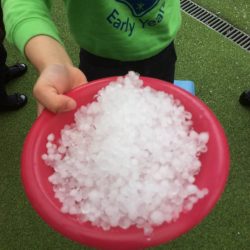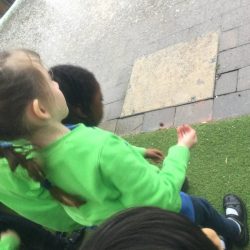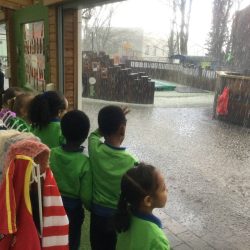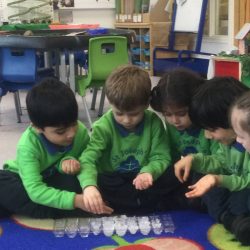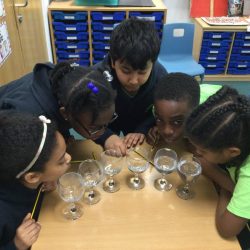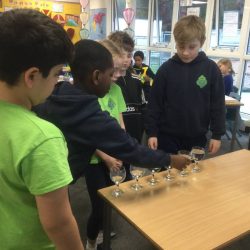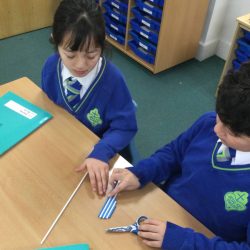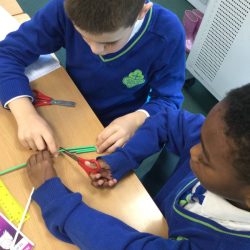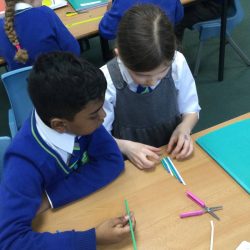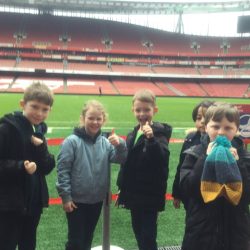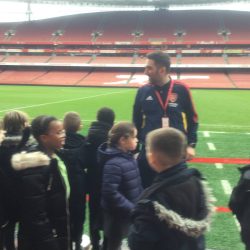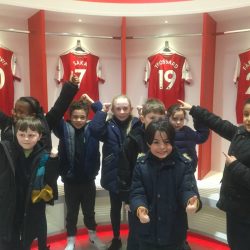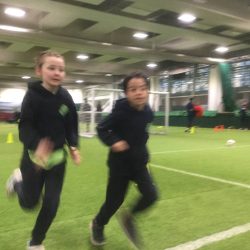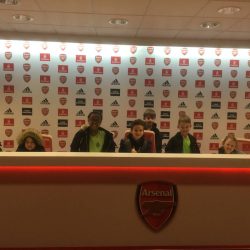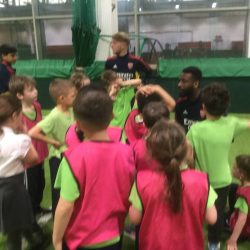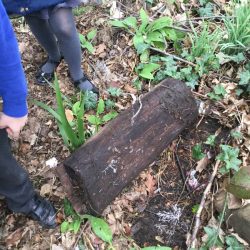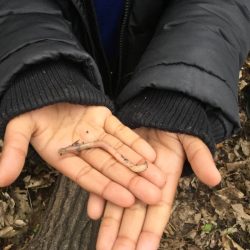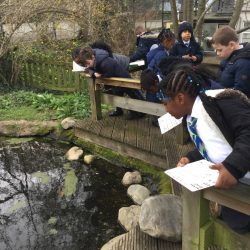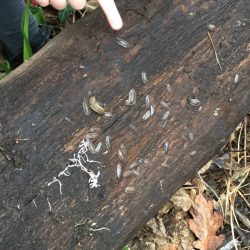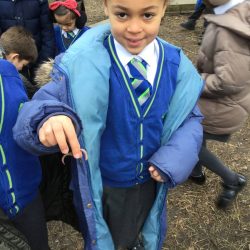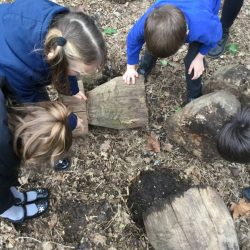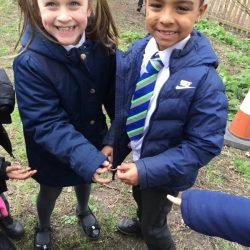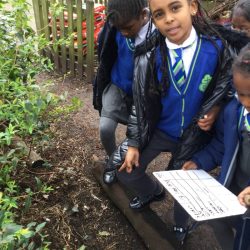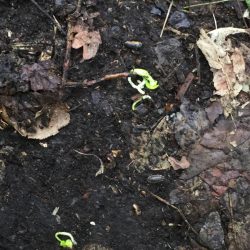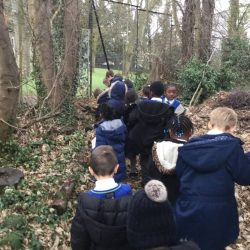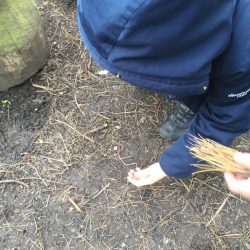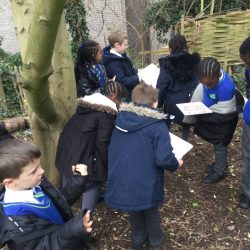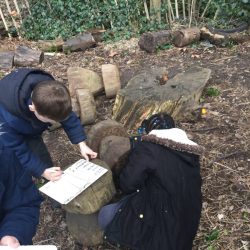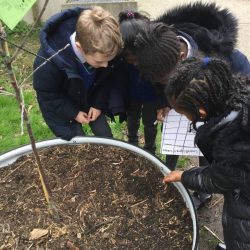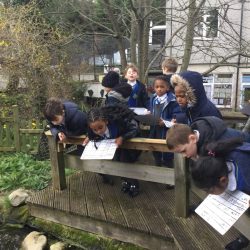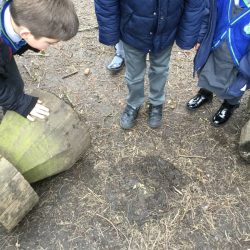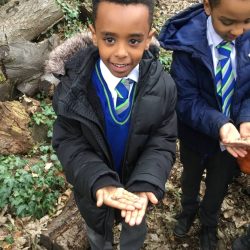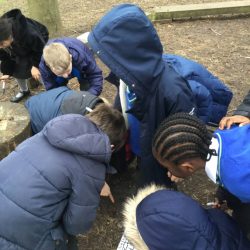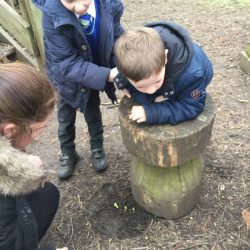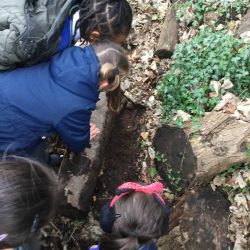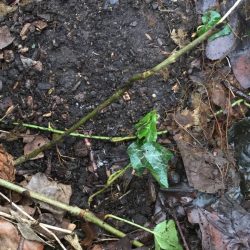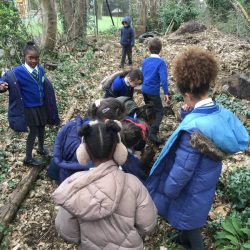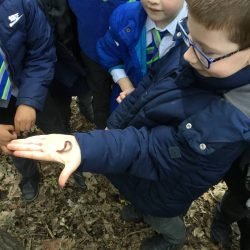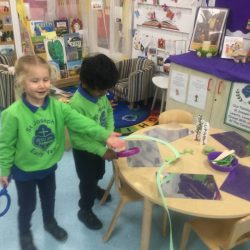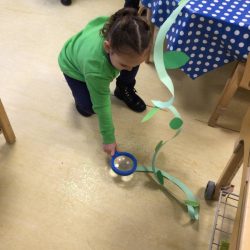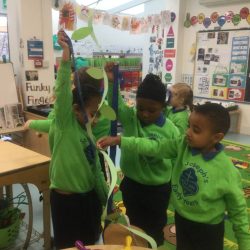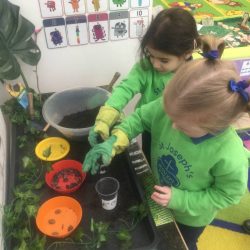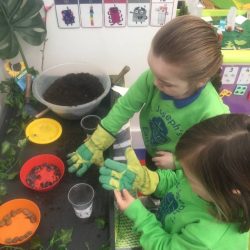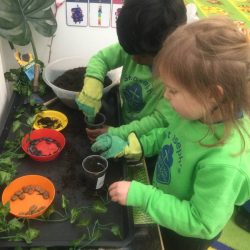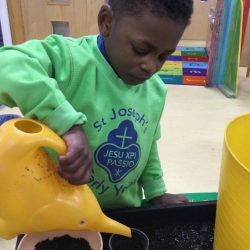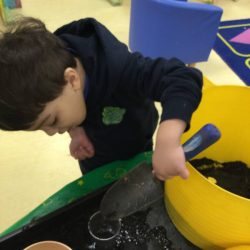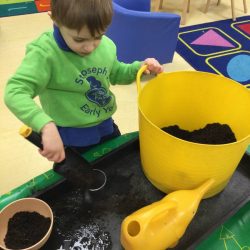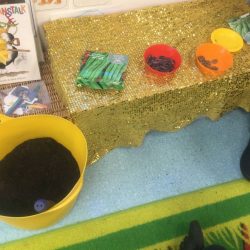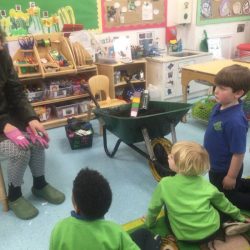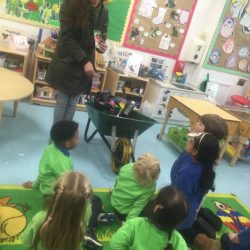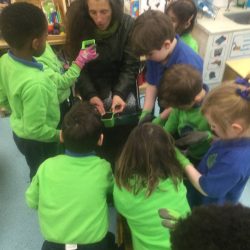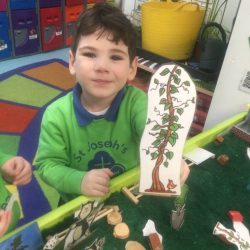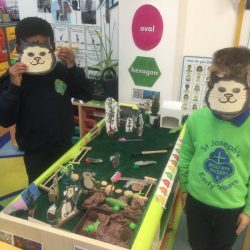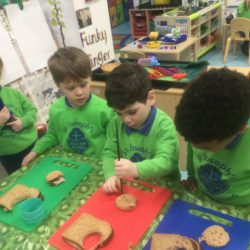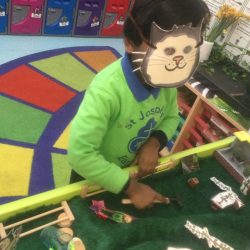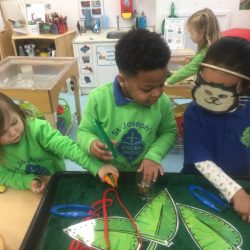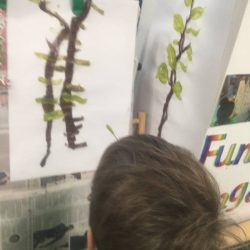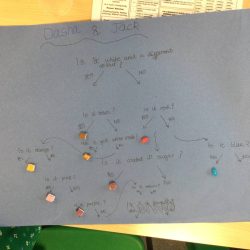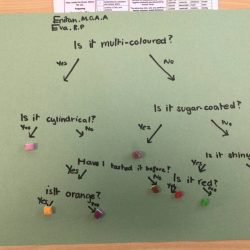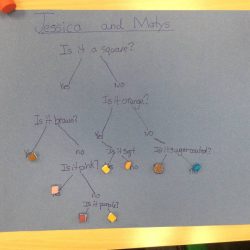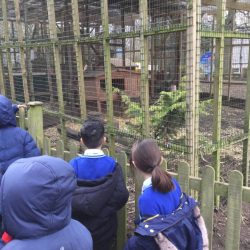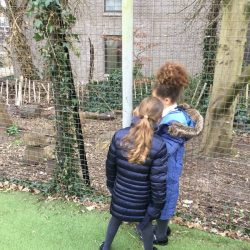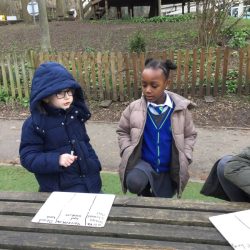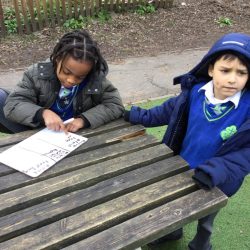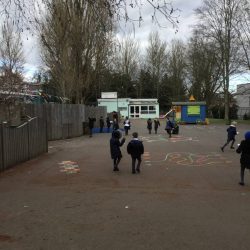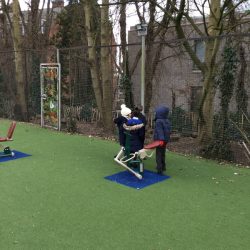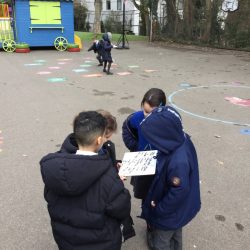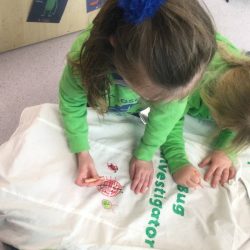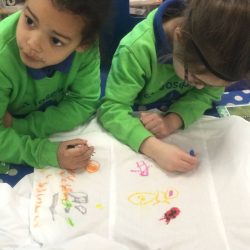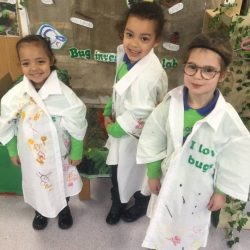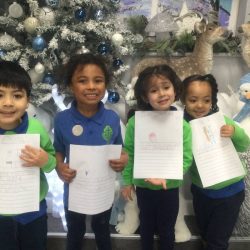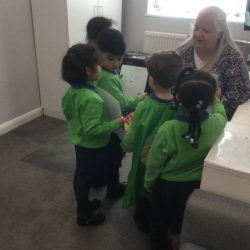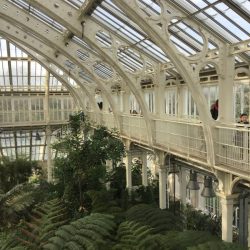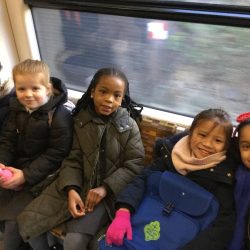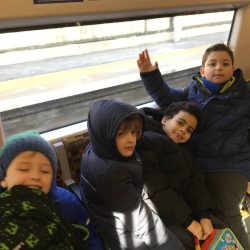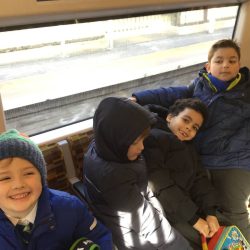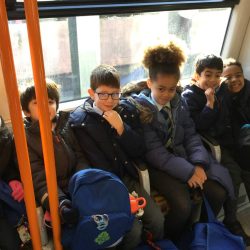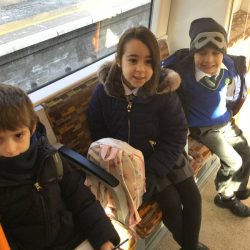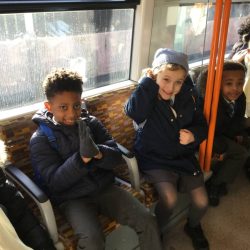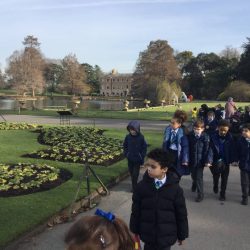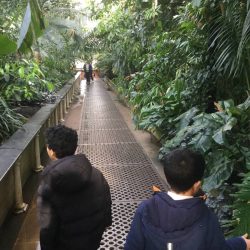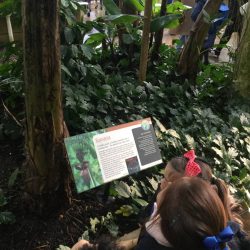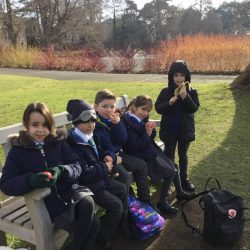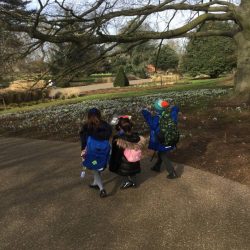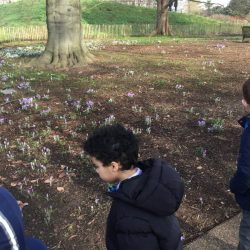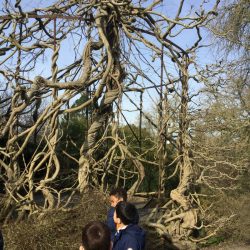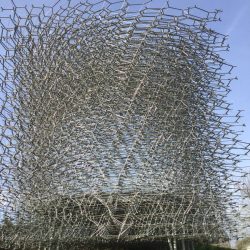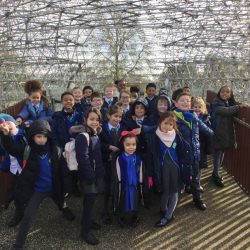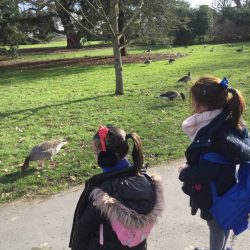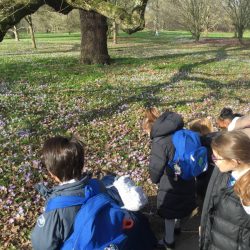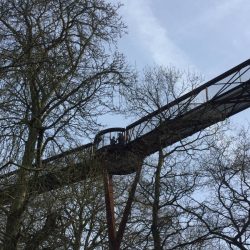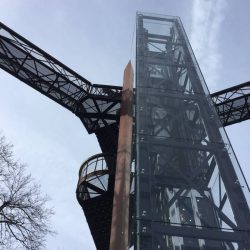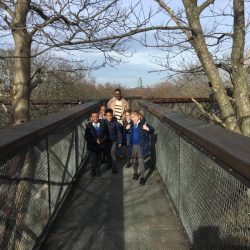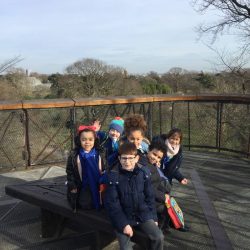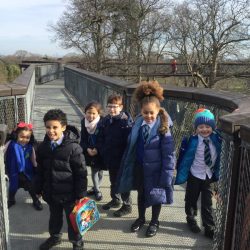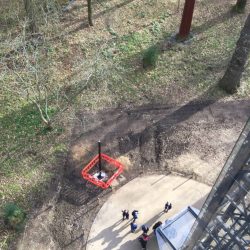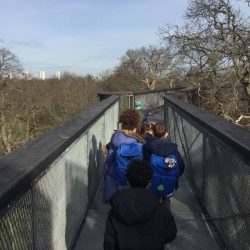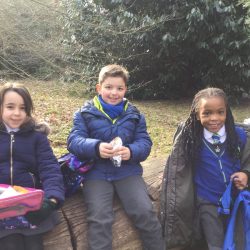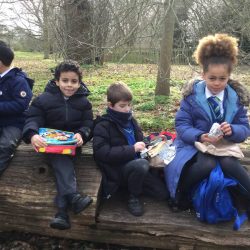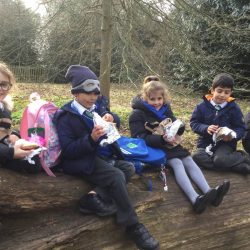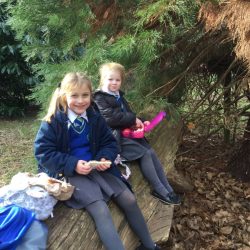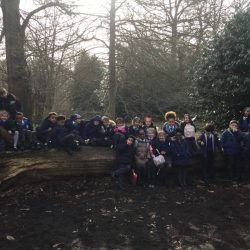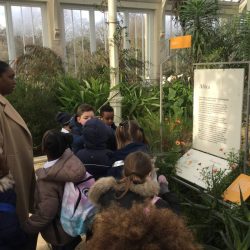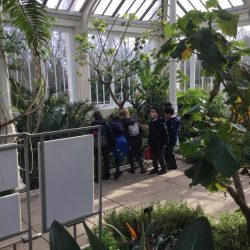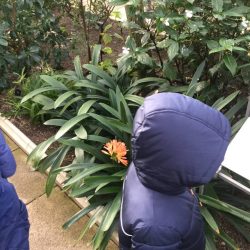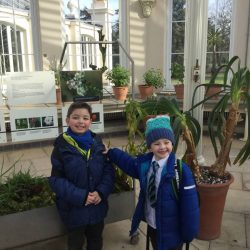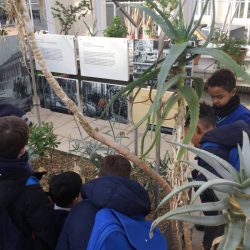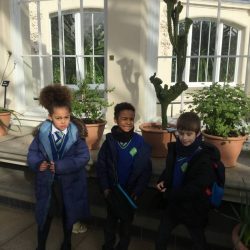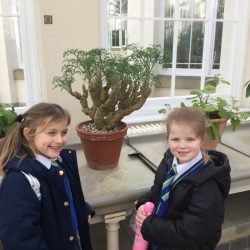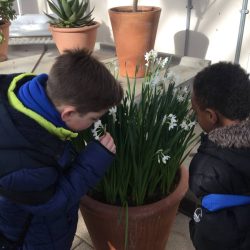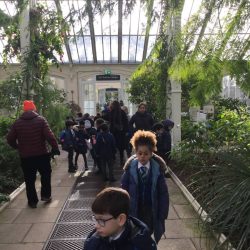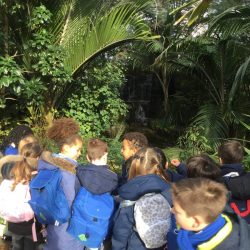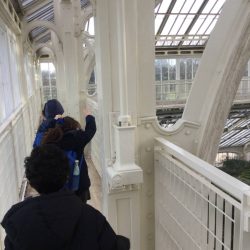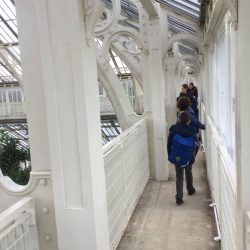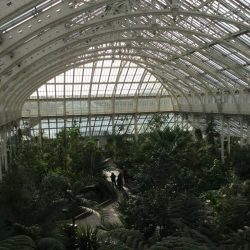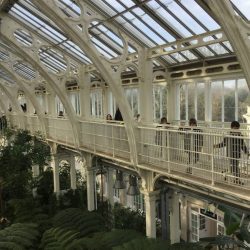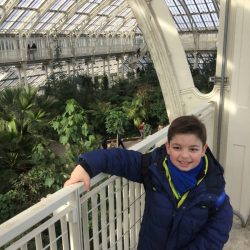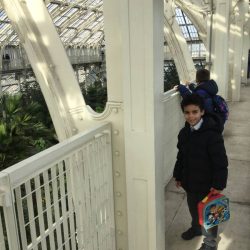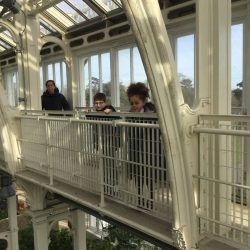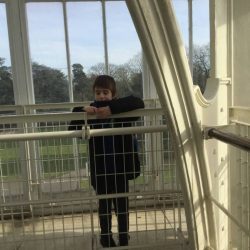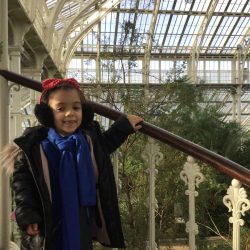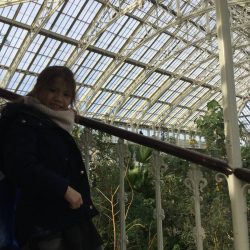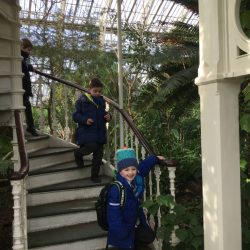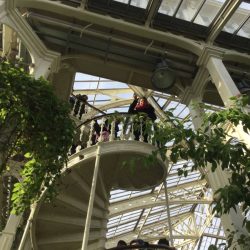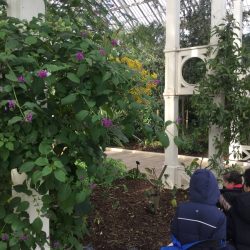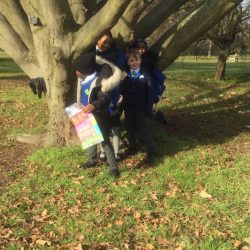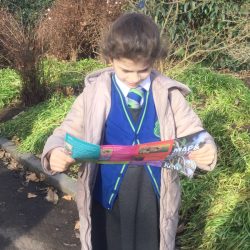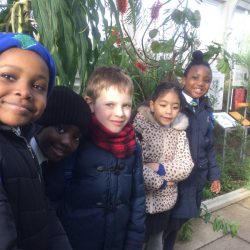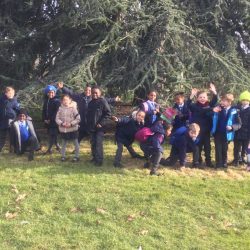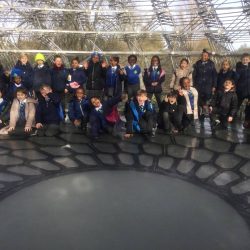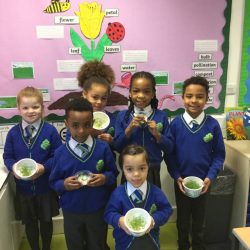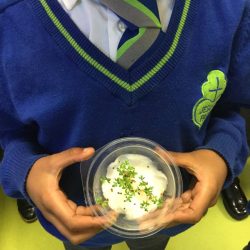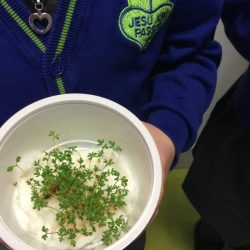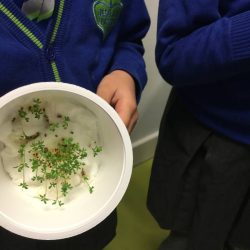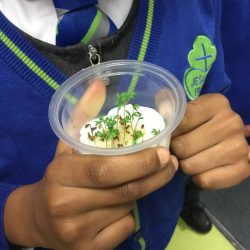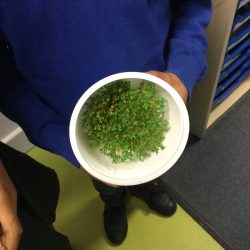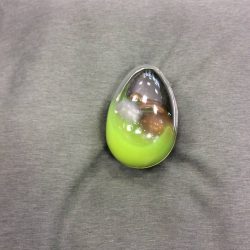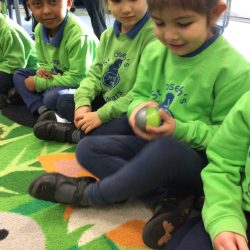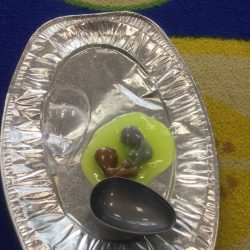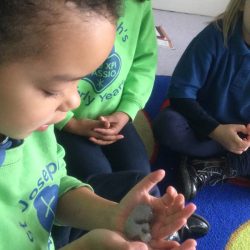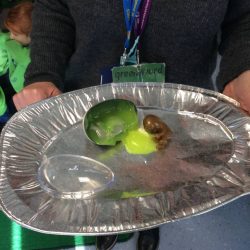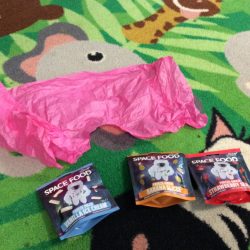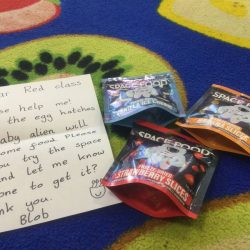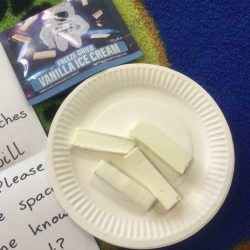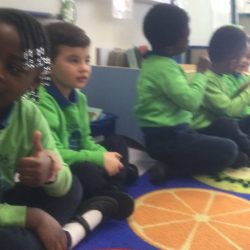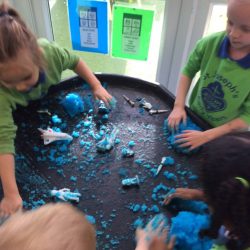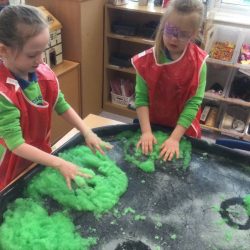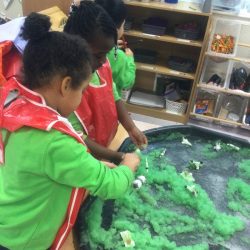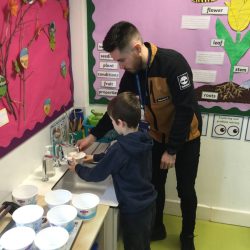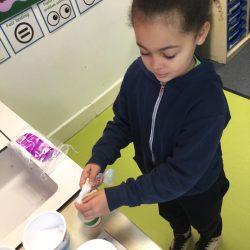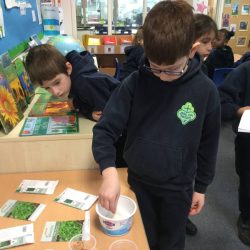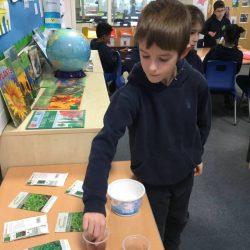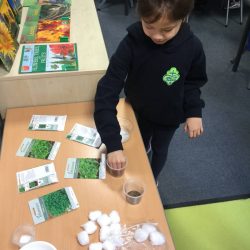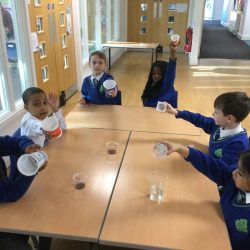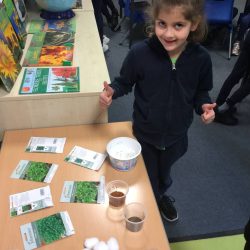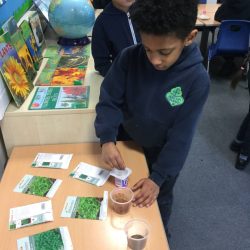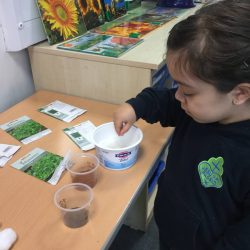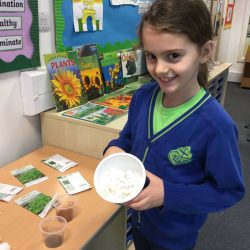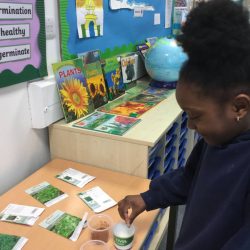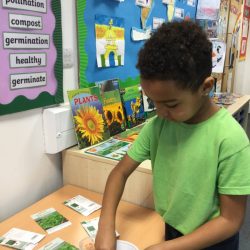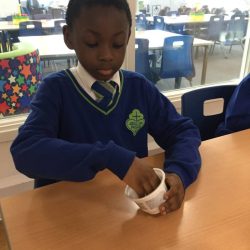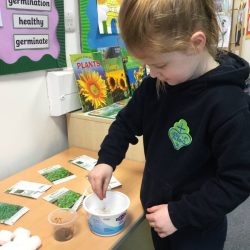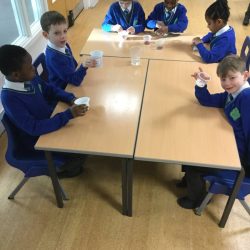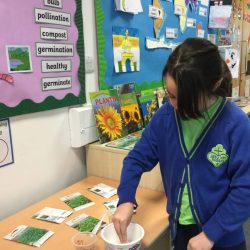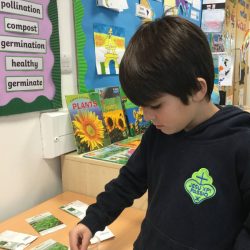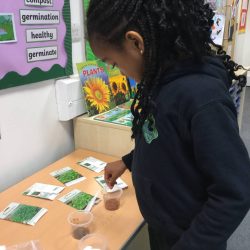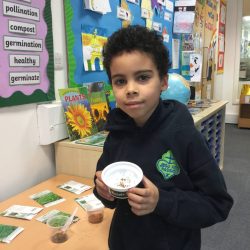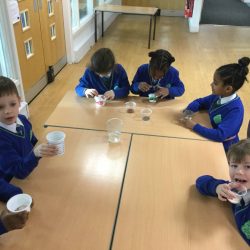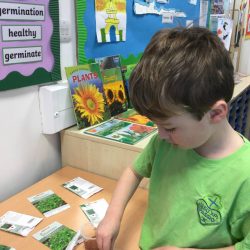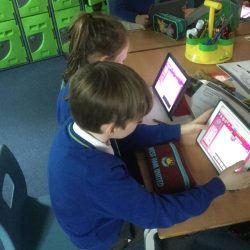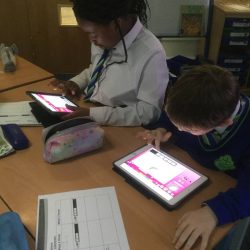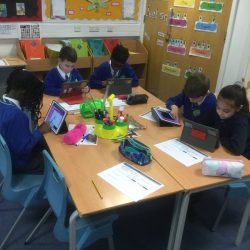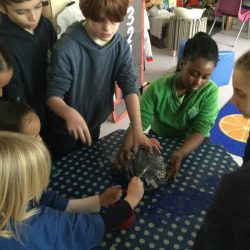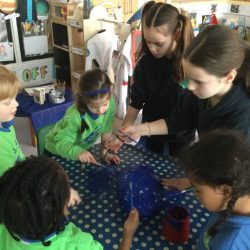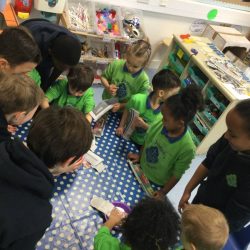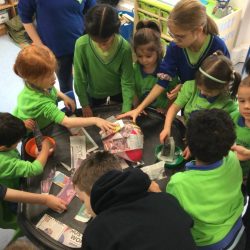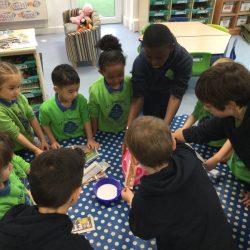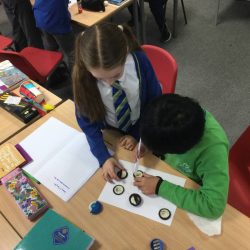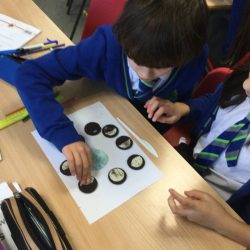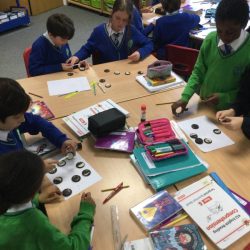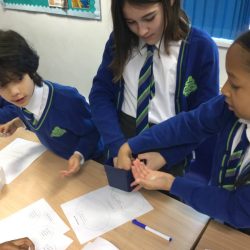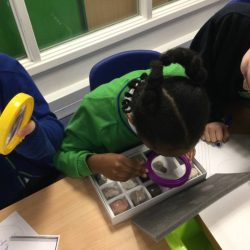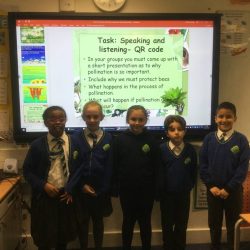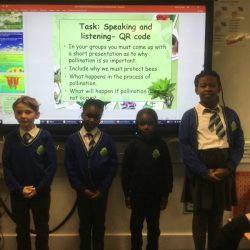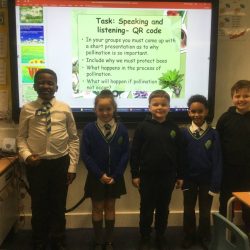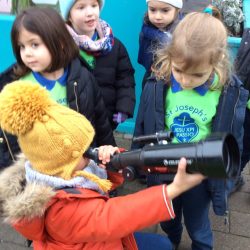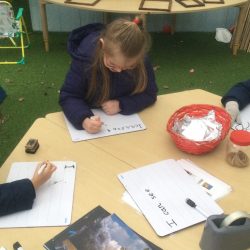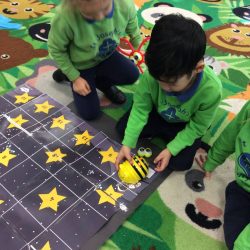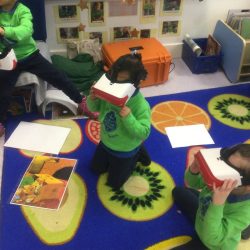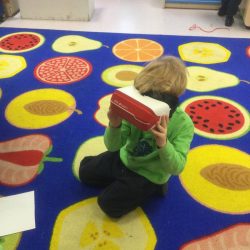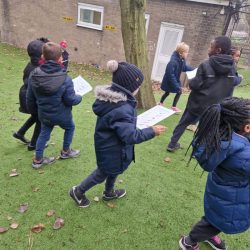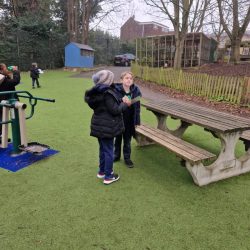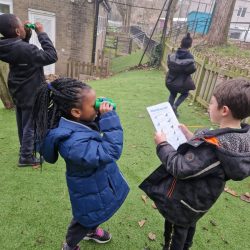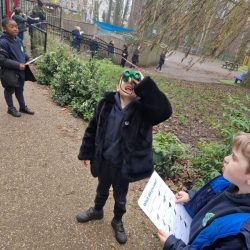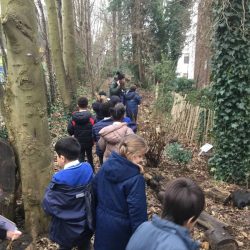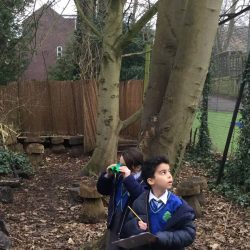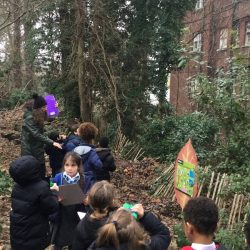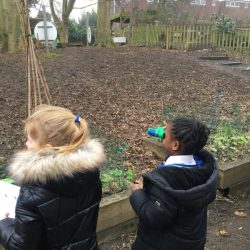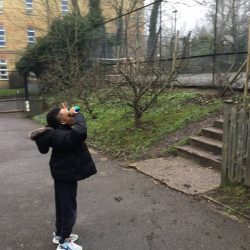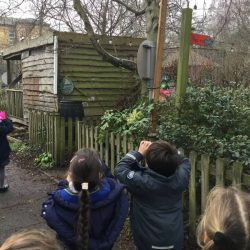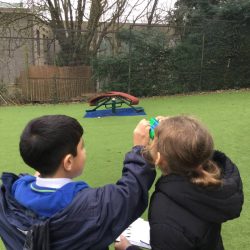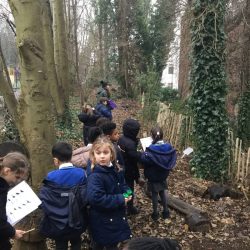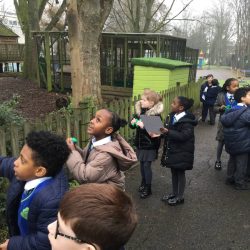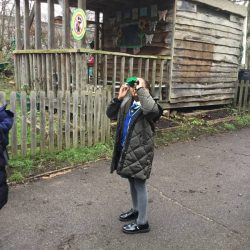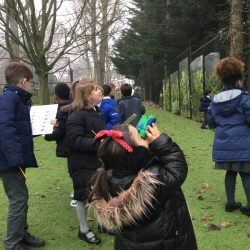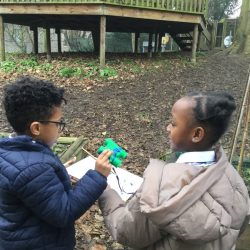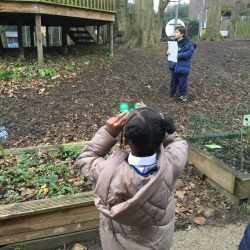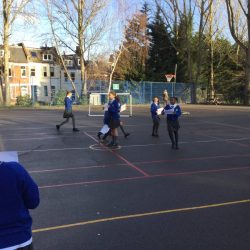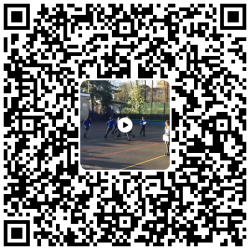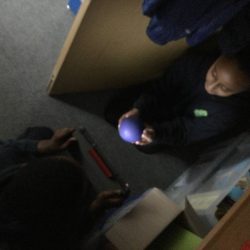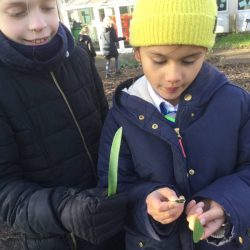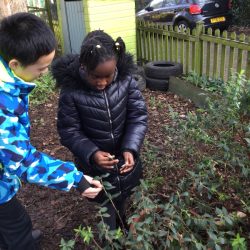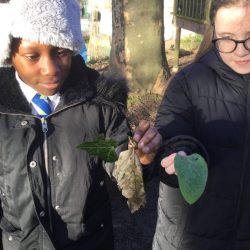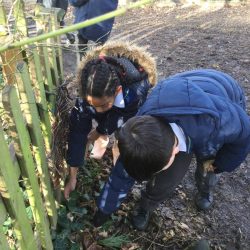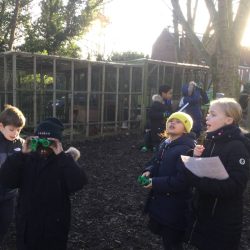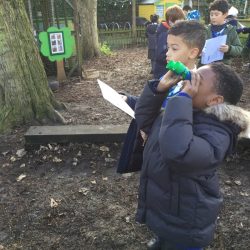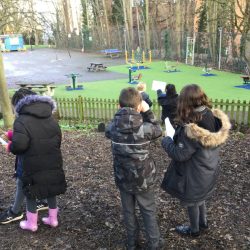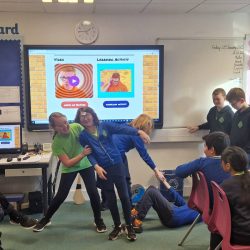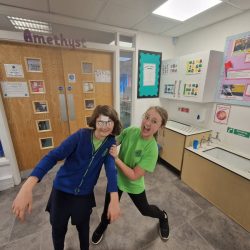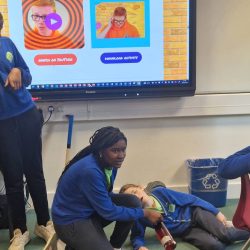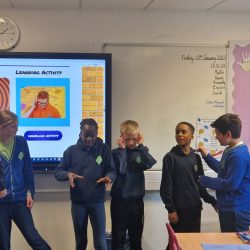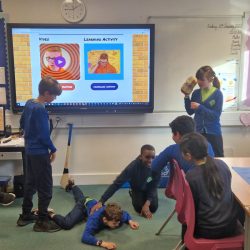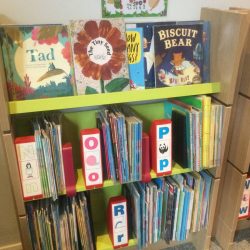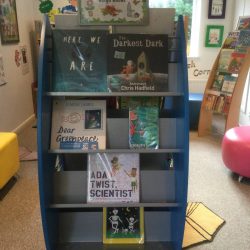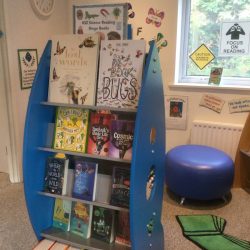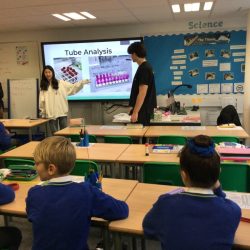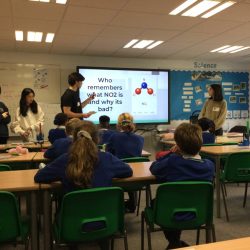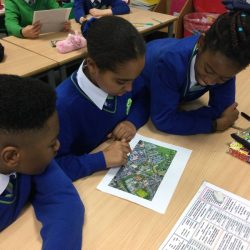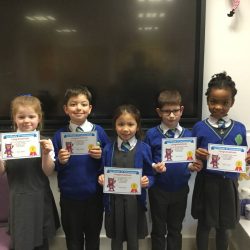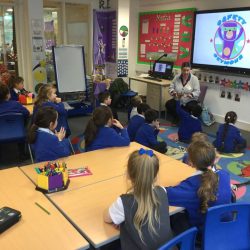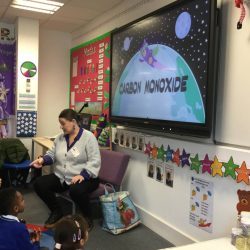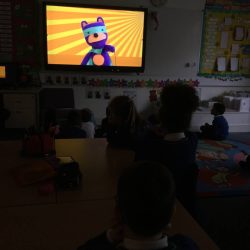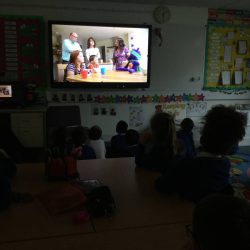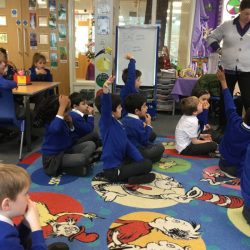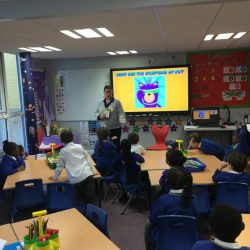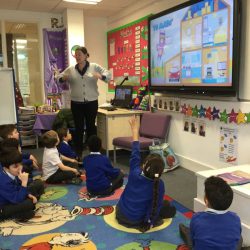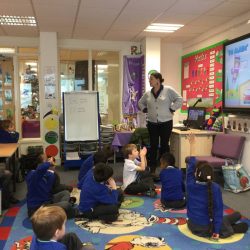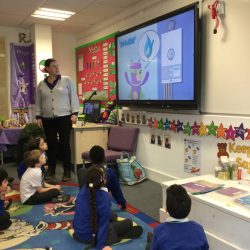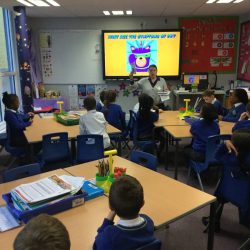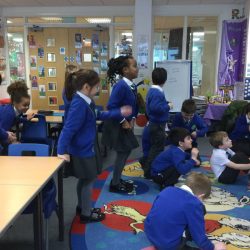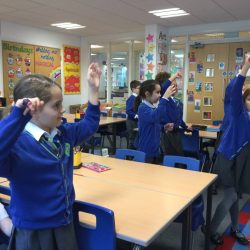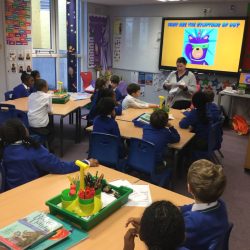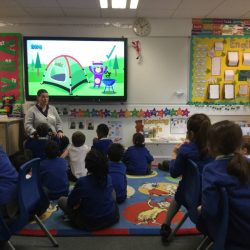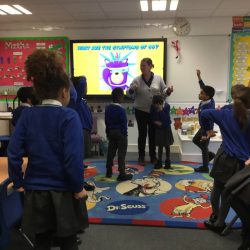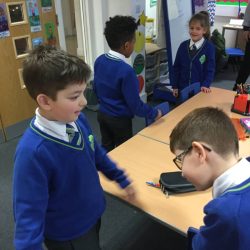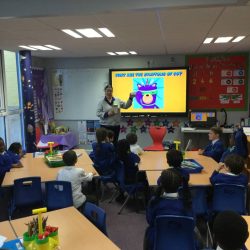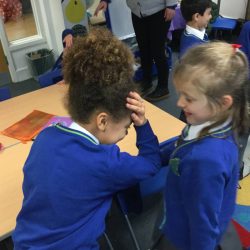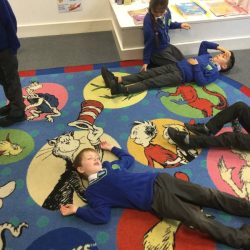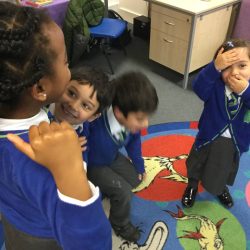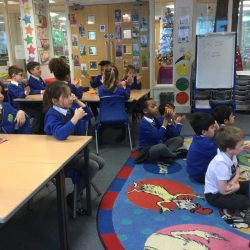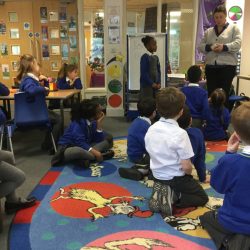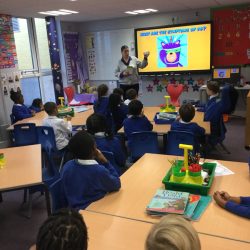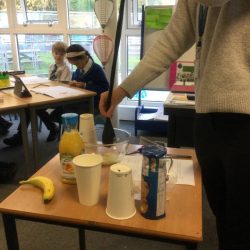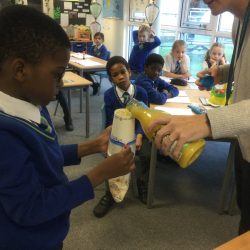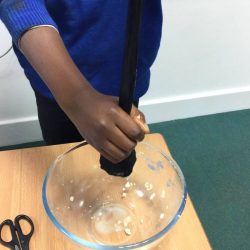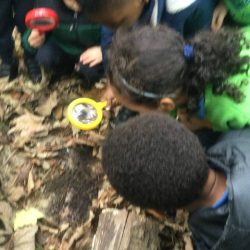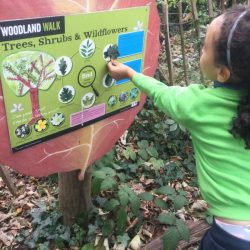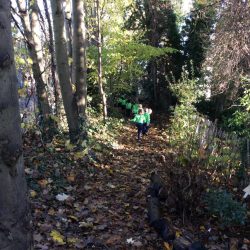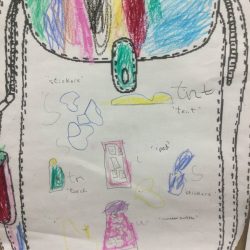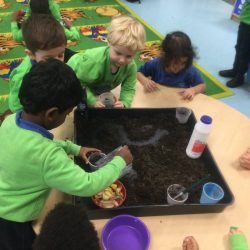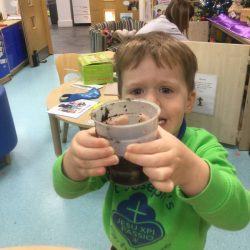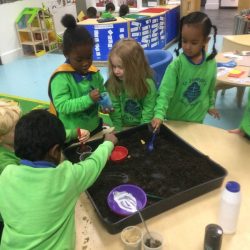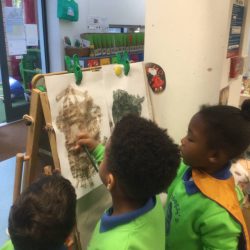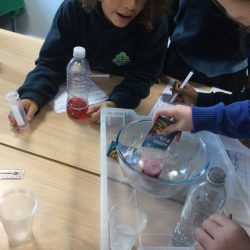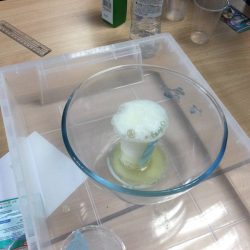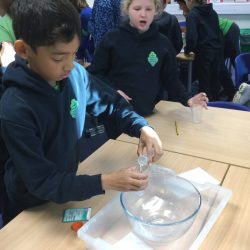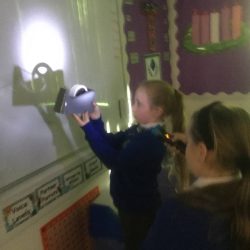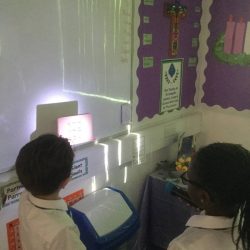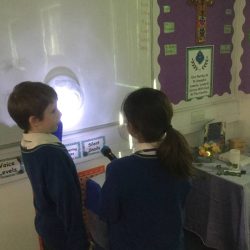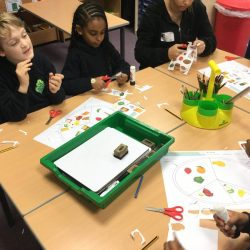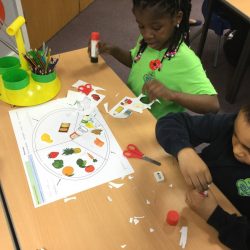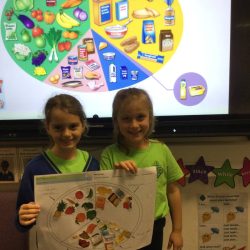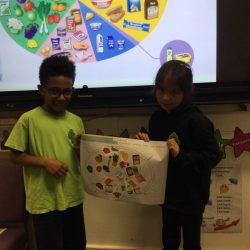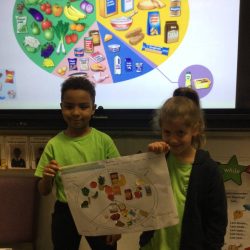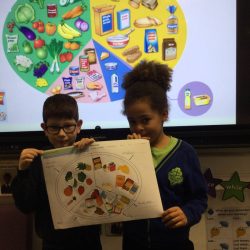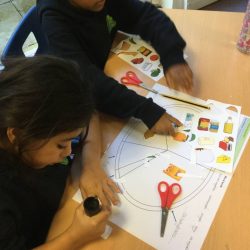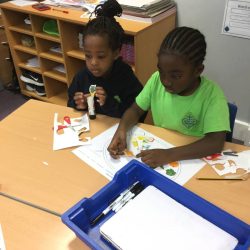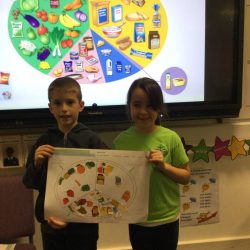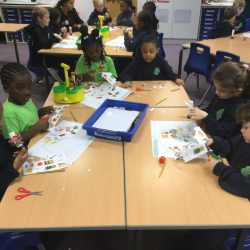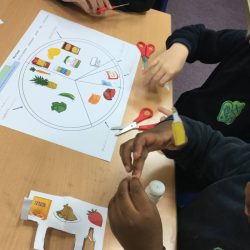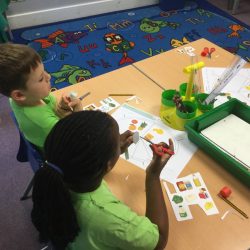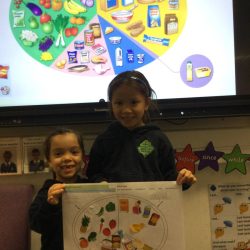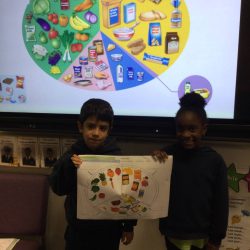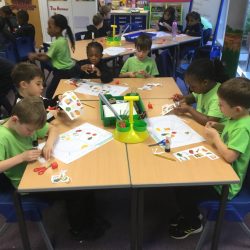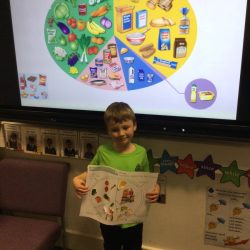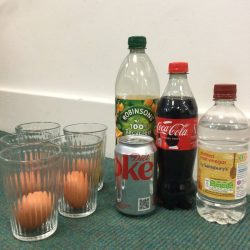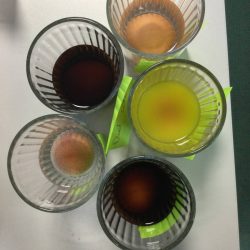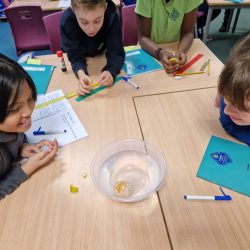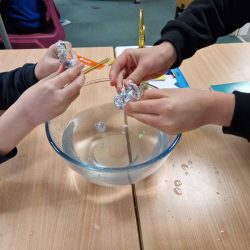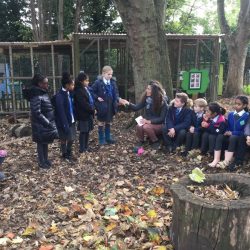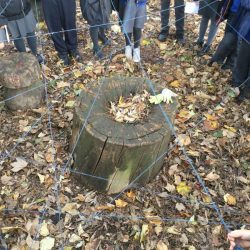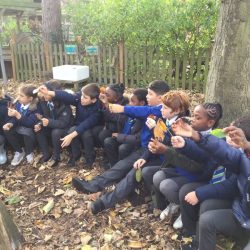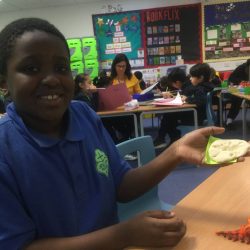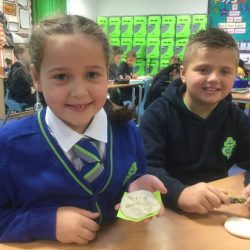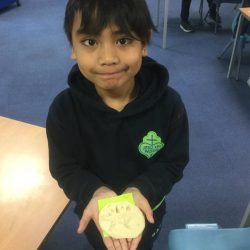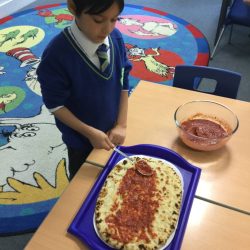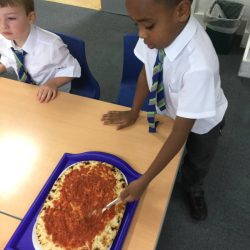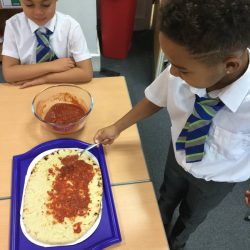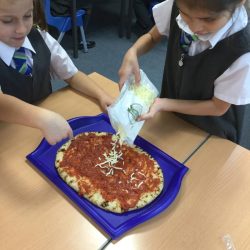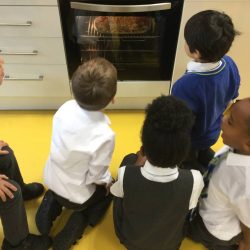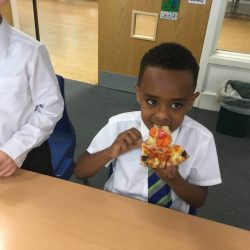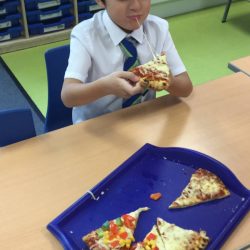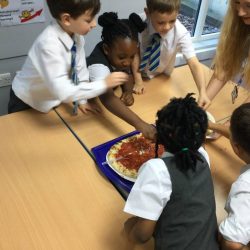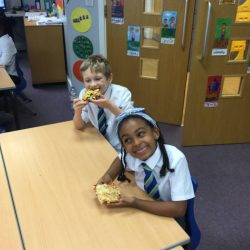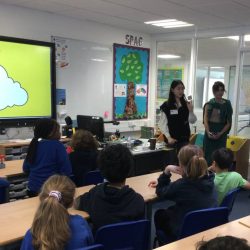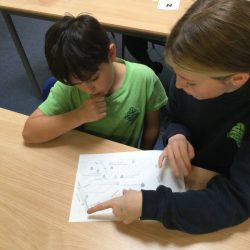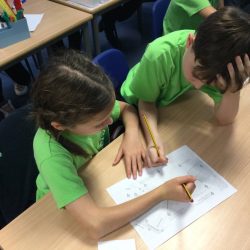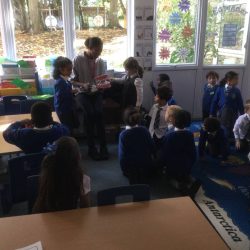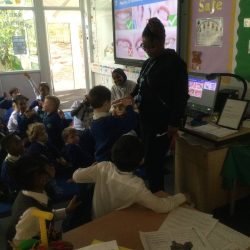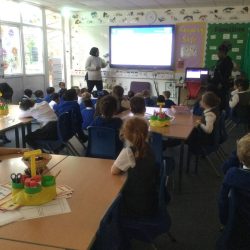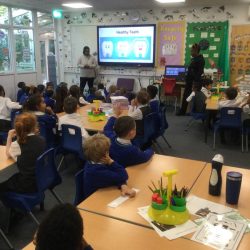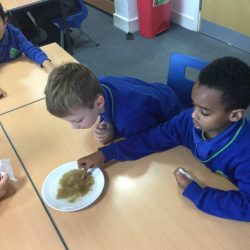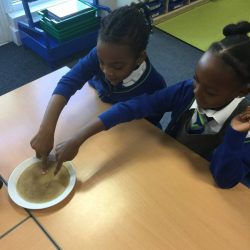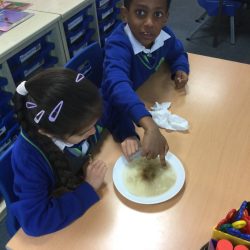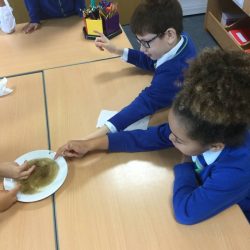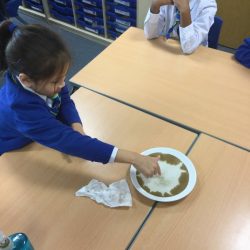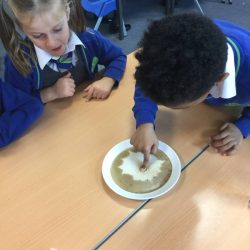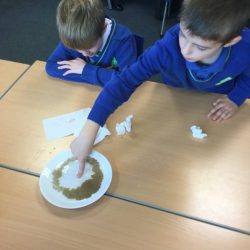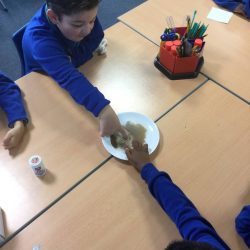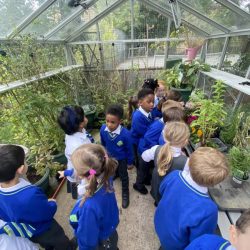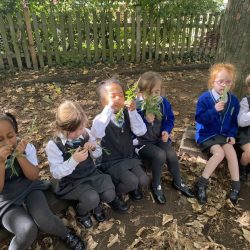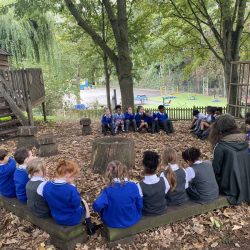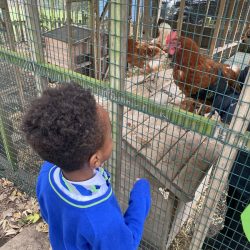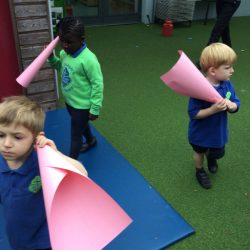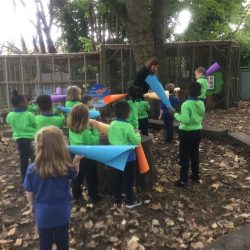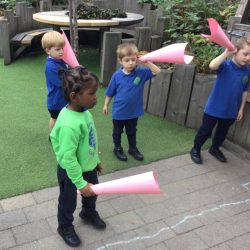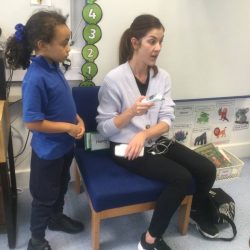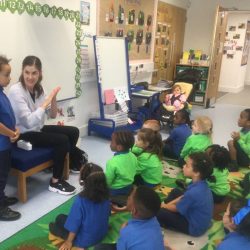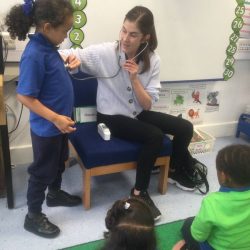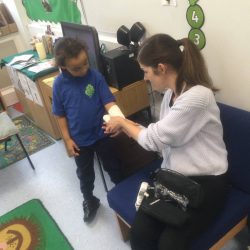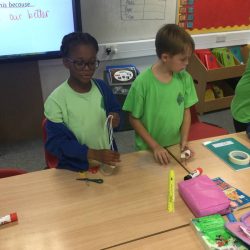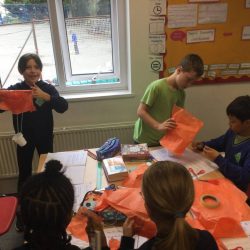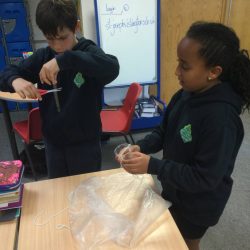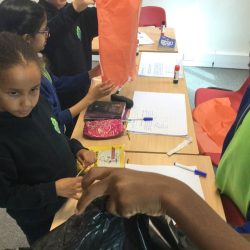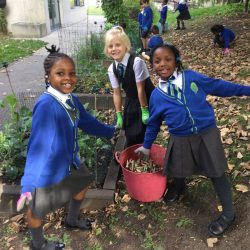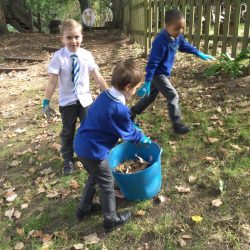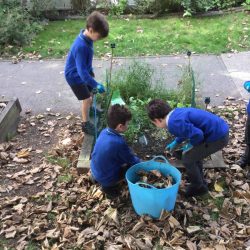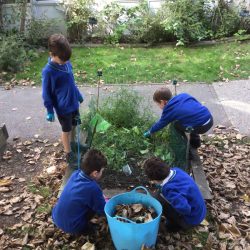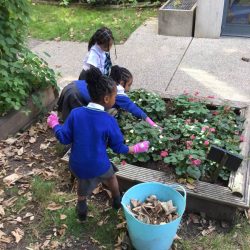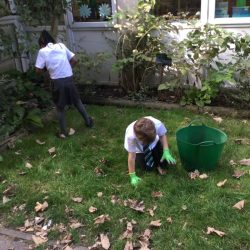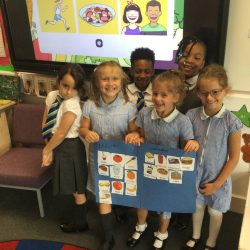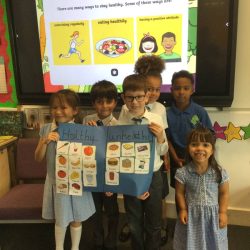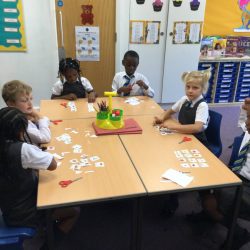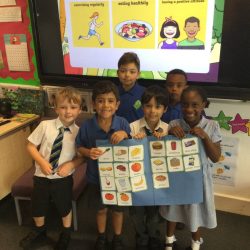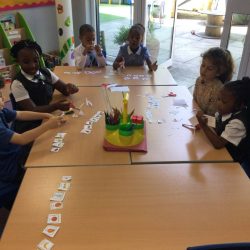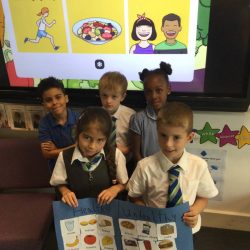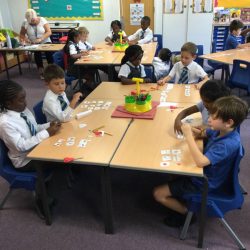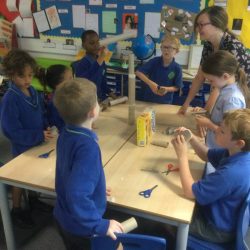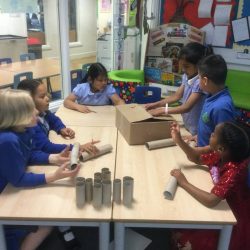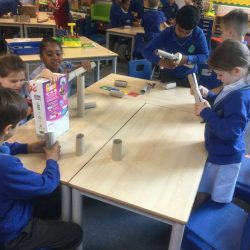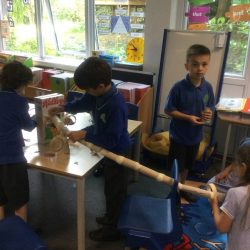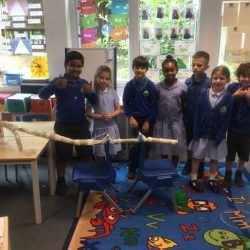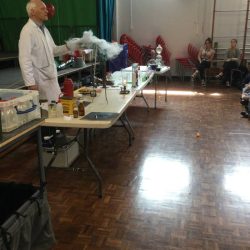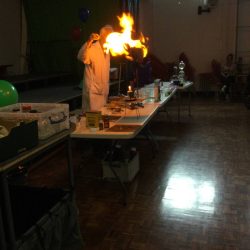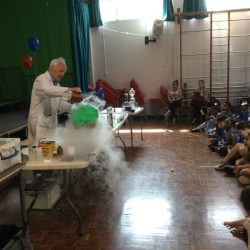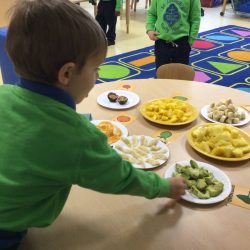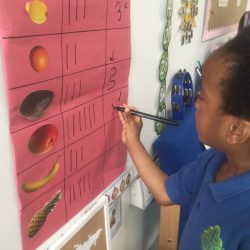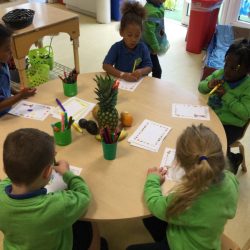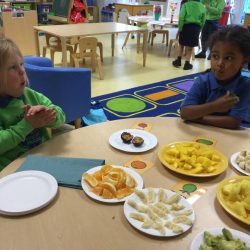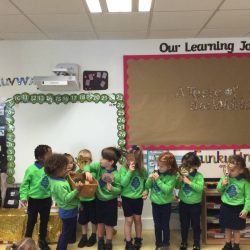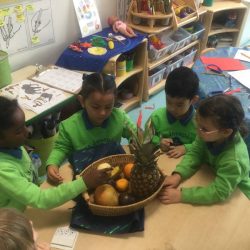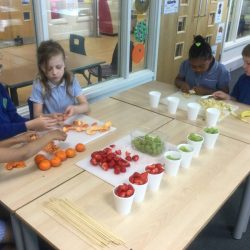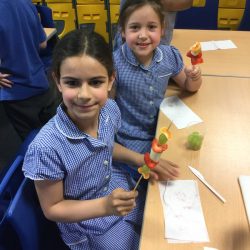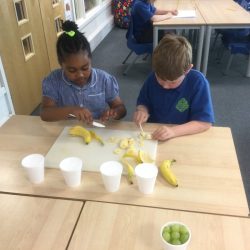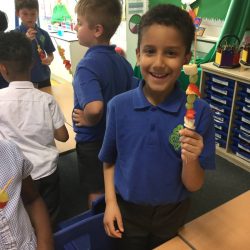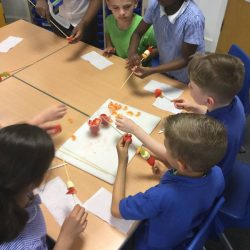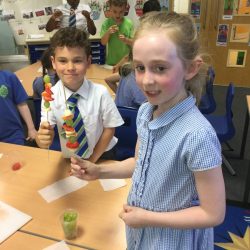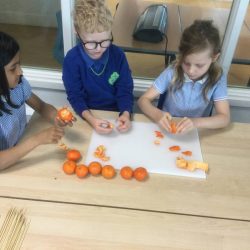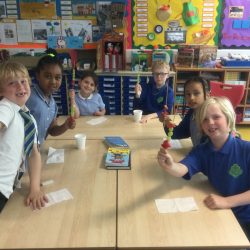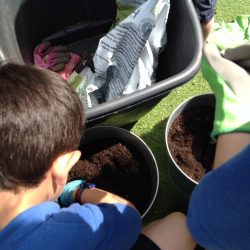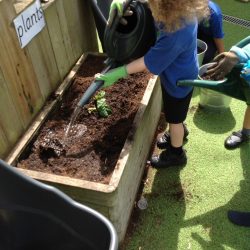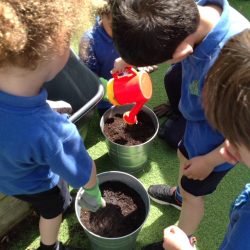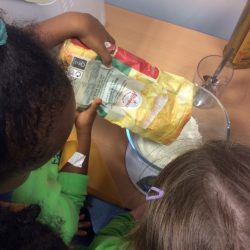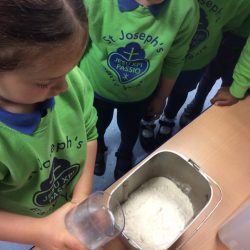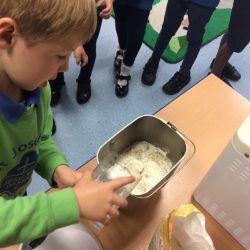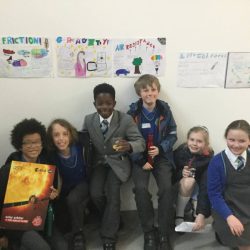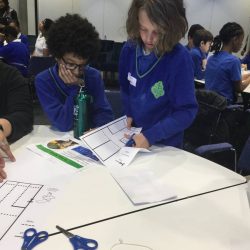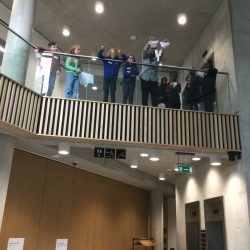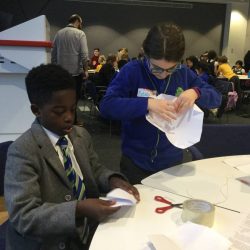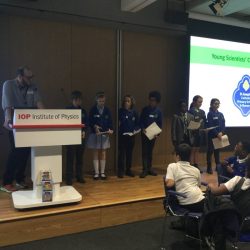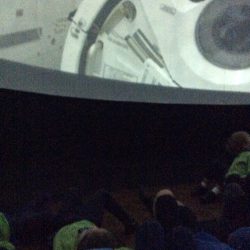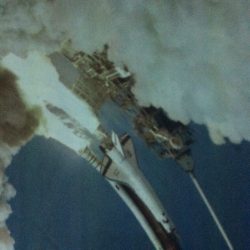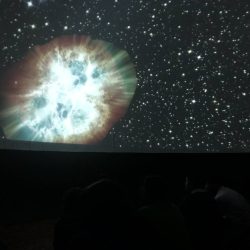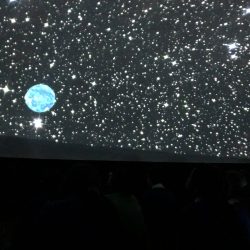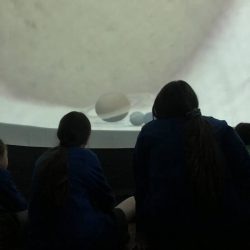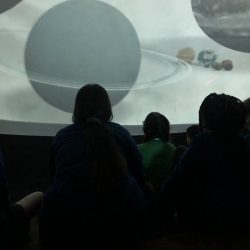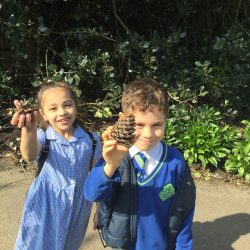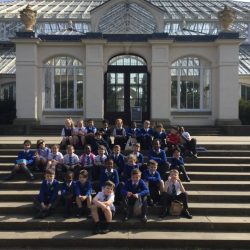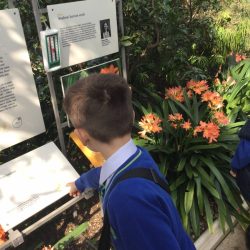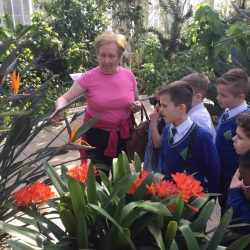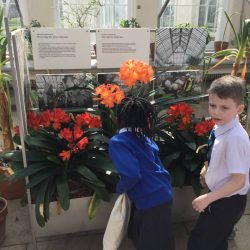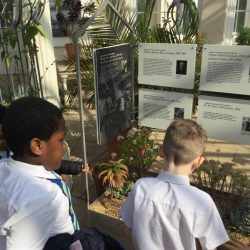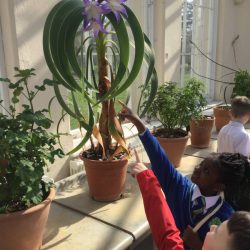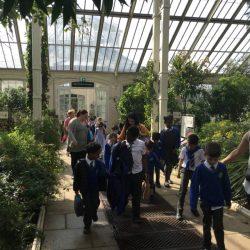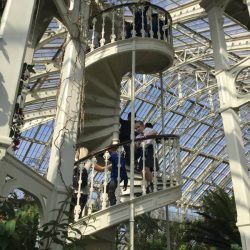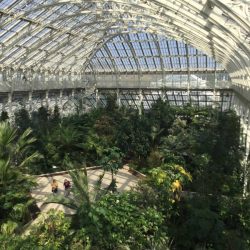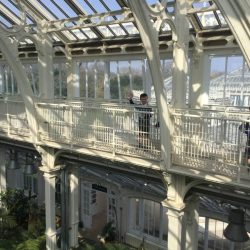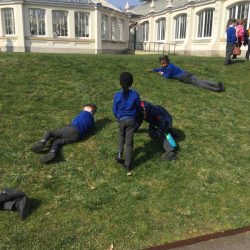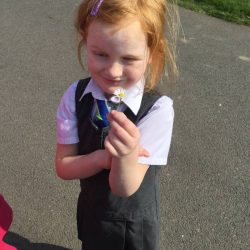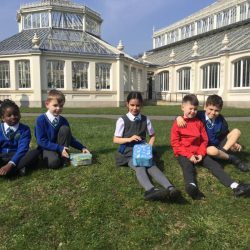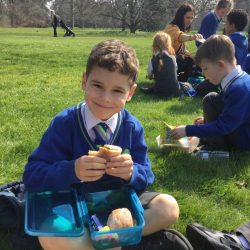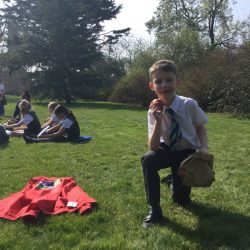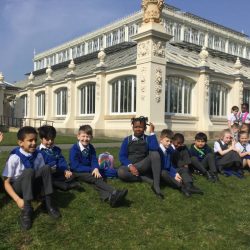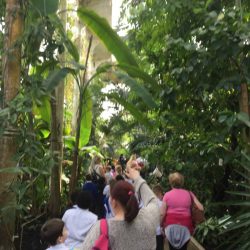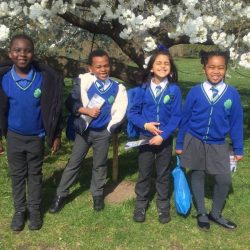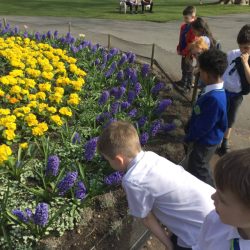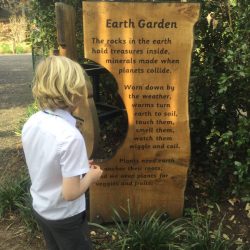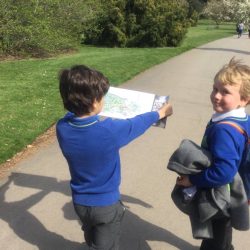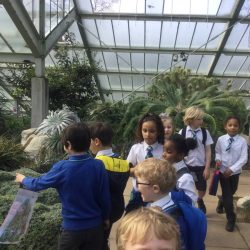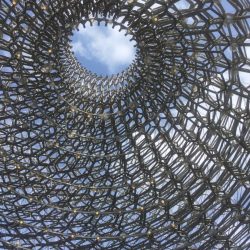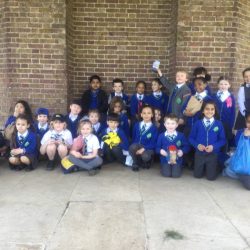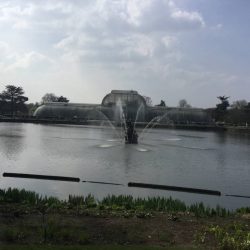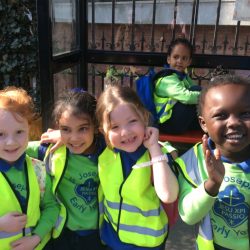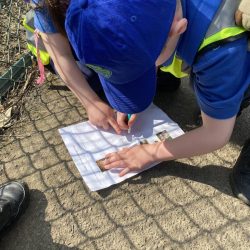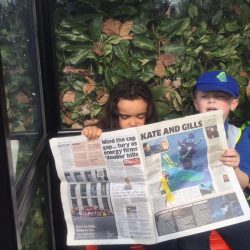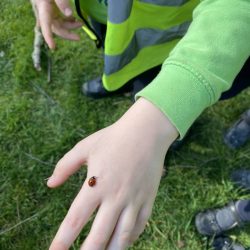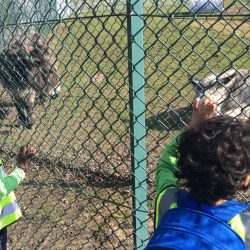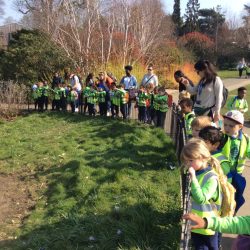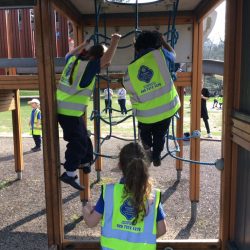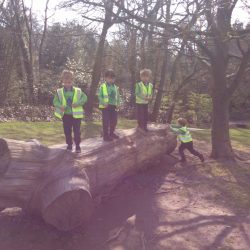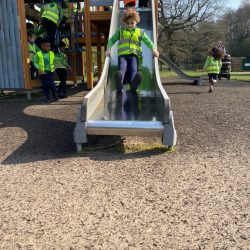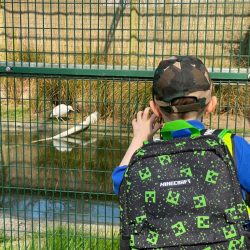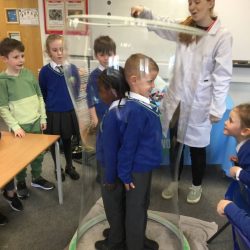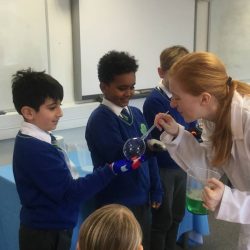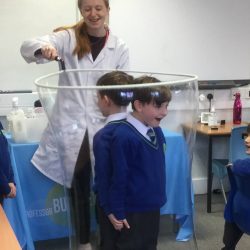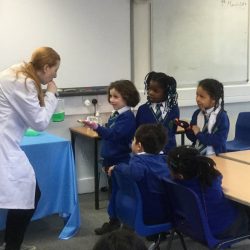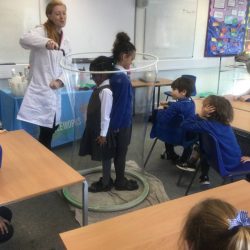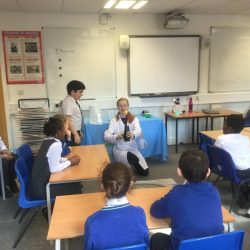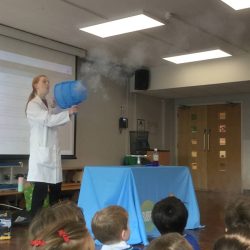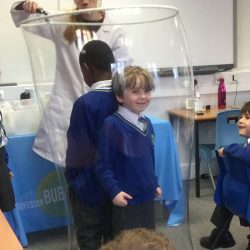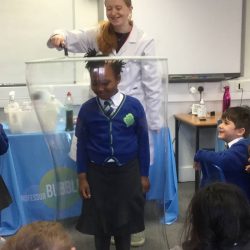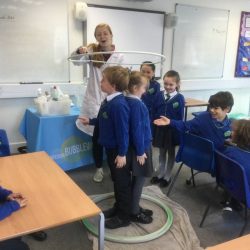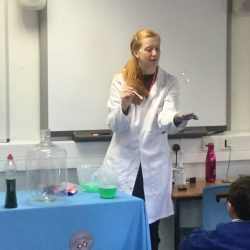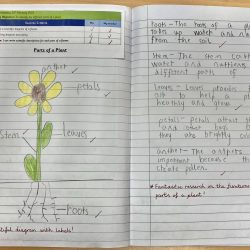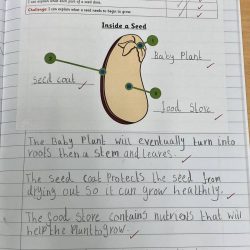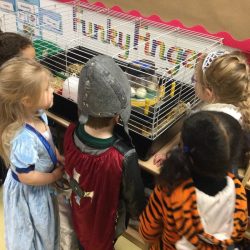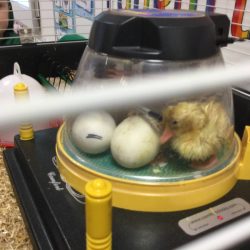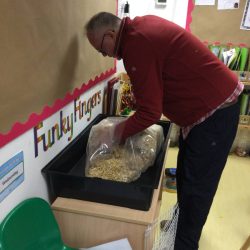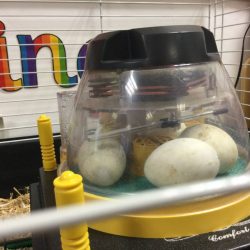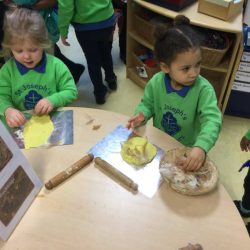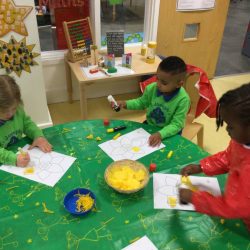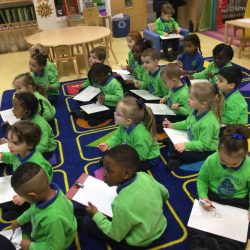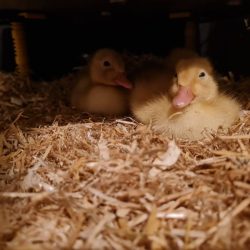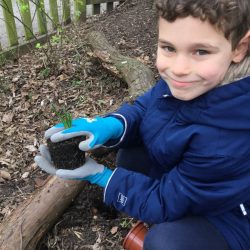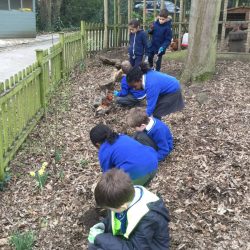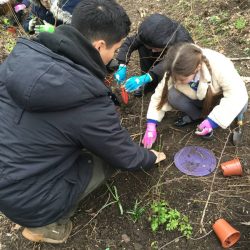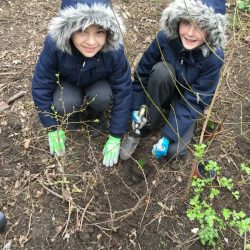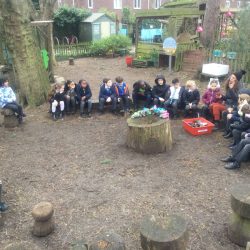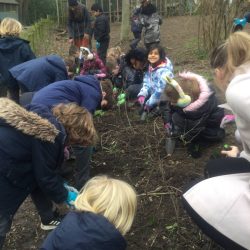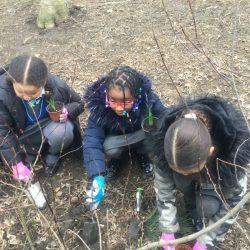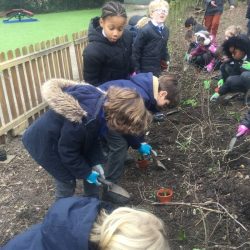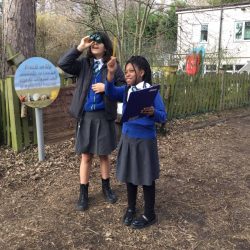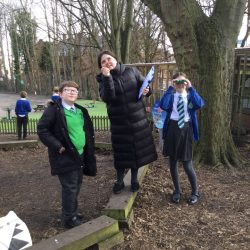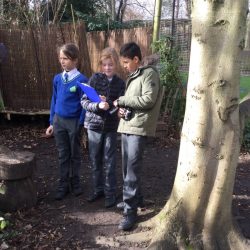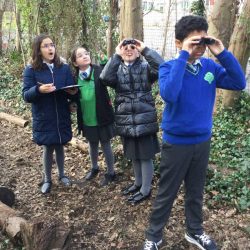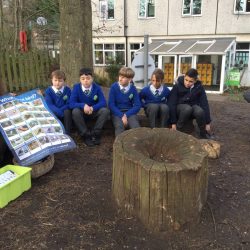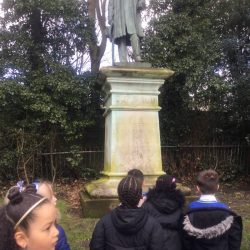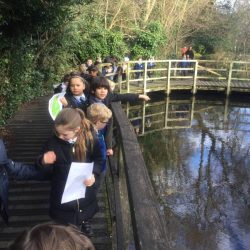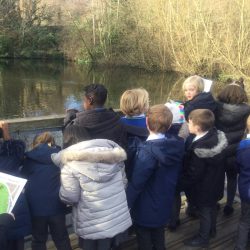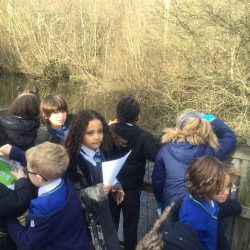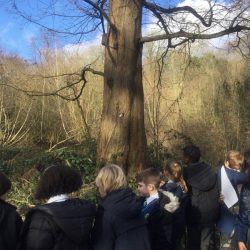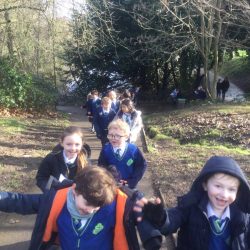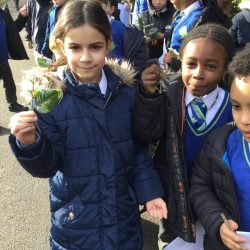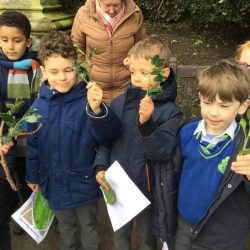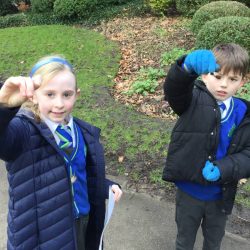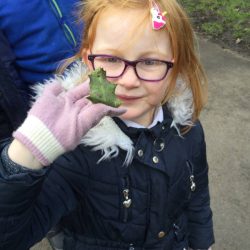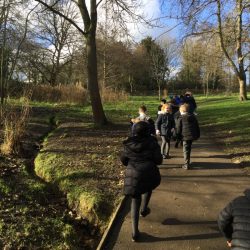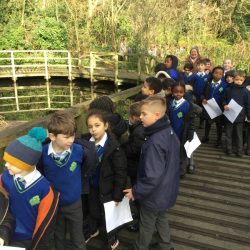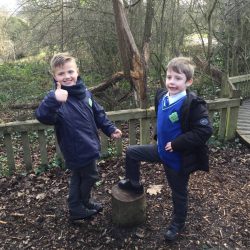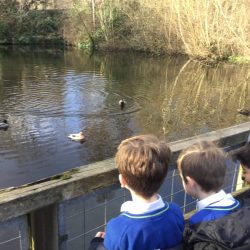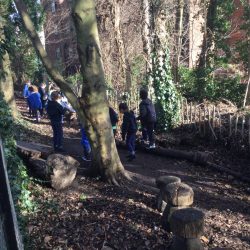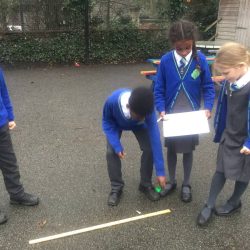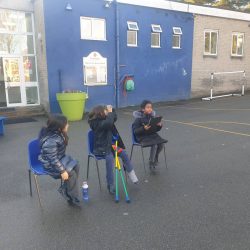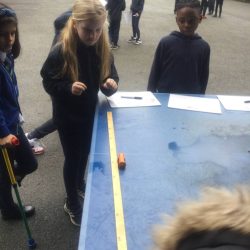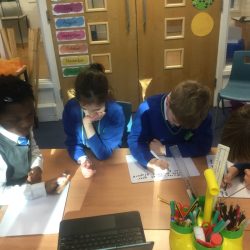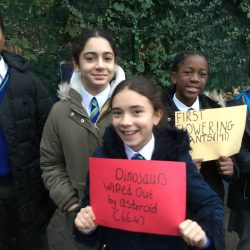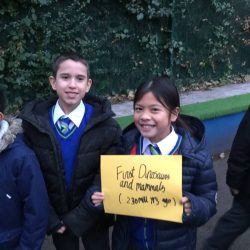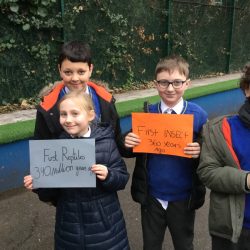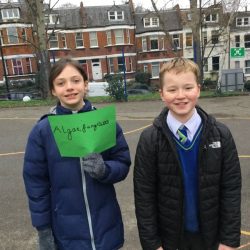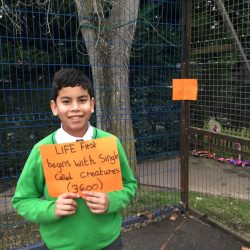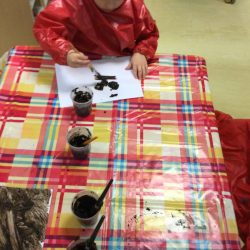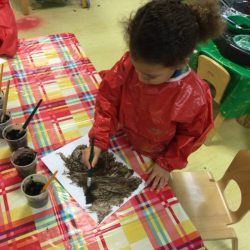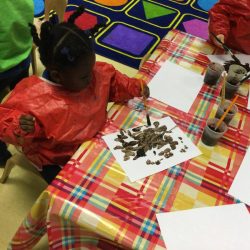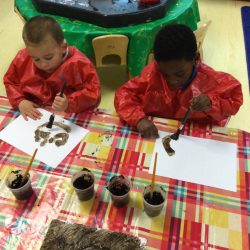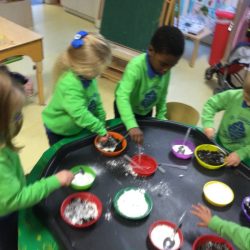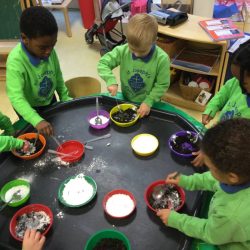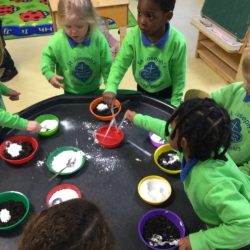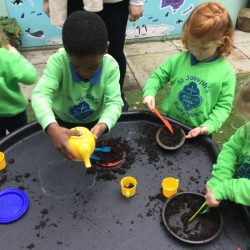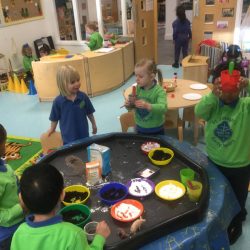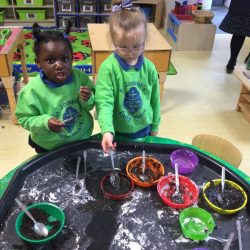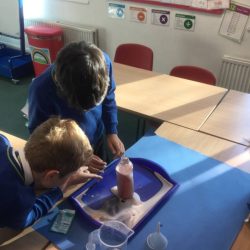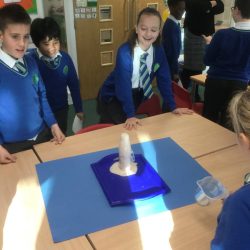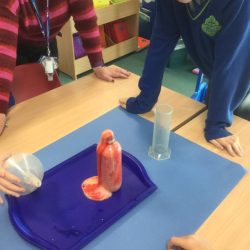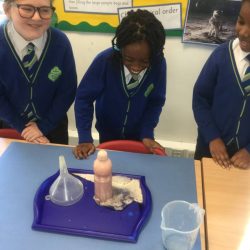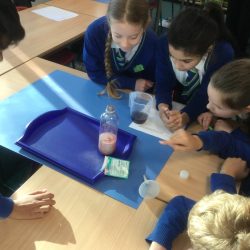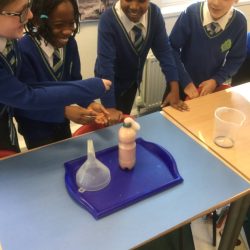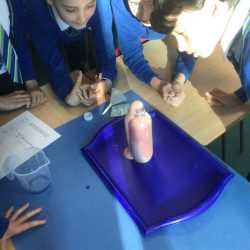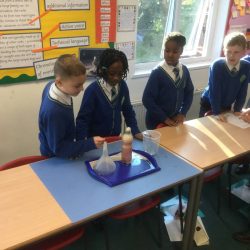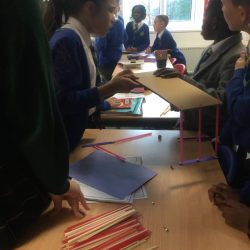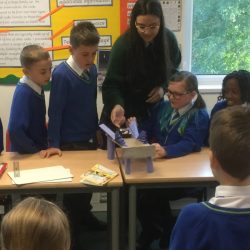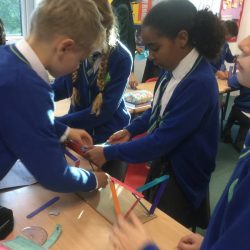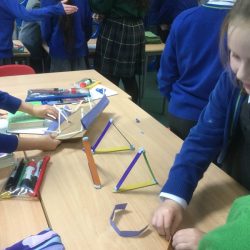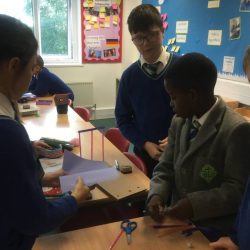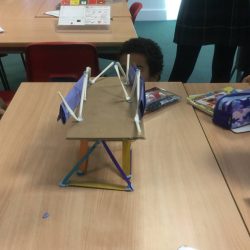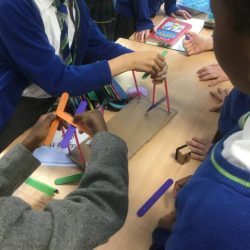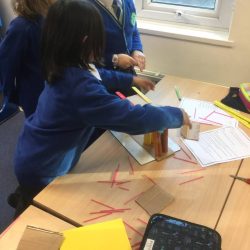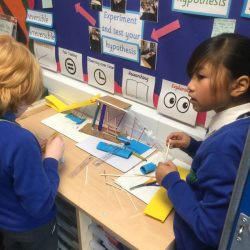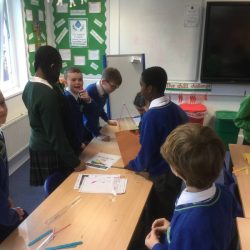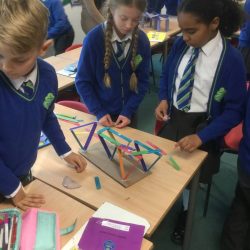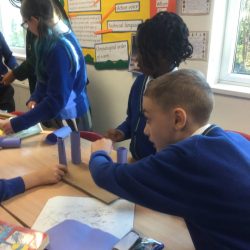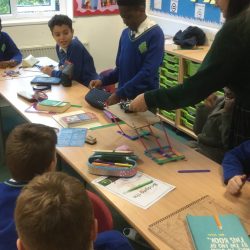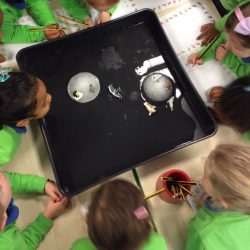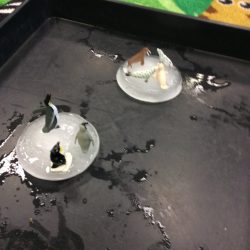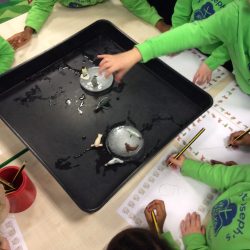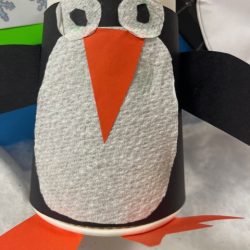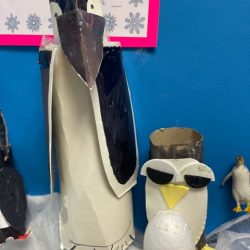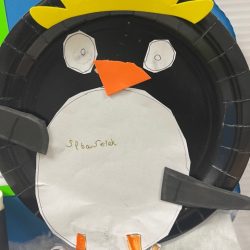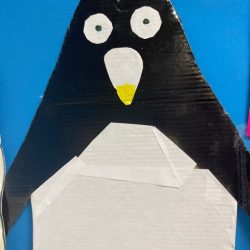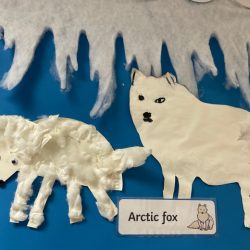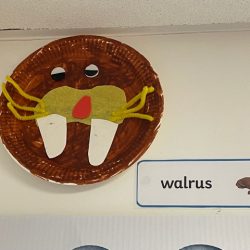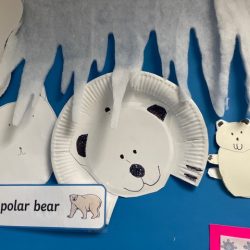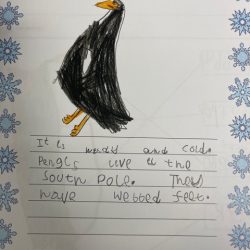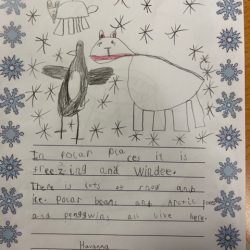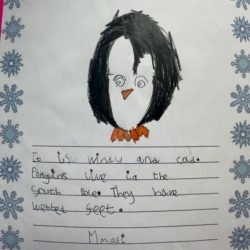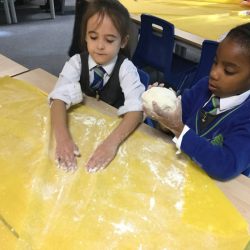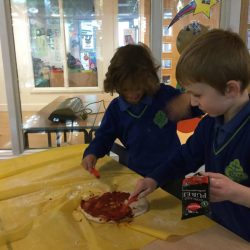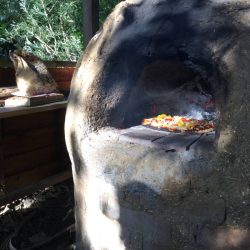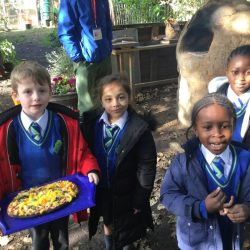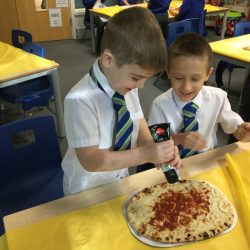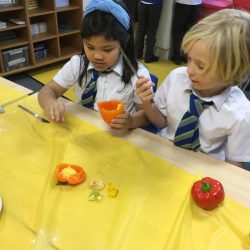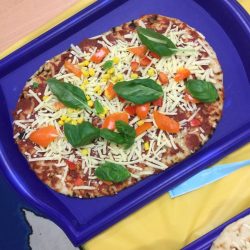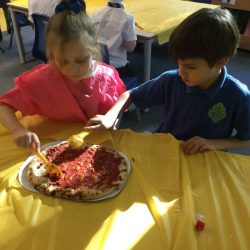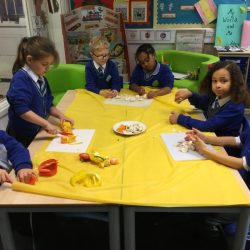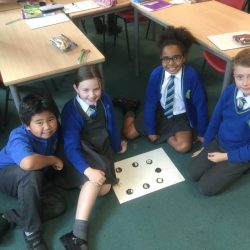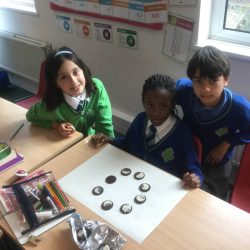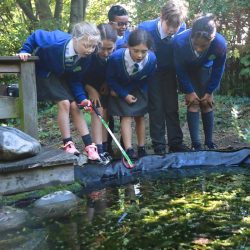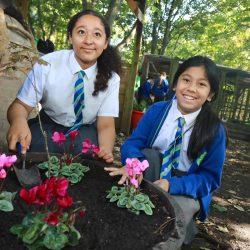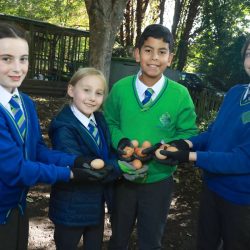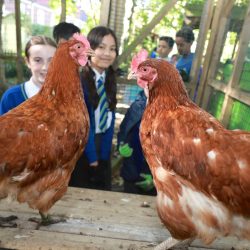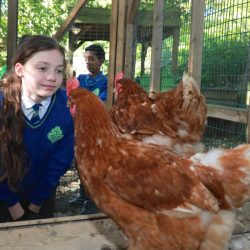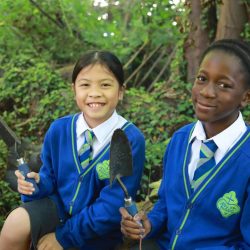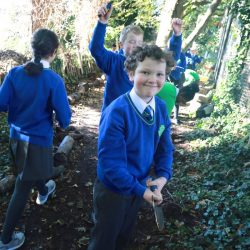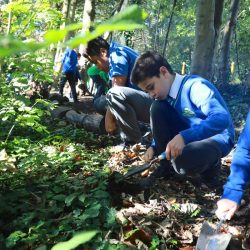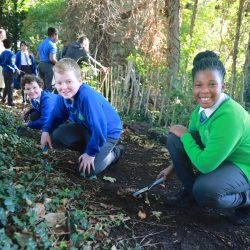Our vision is to provide children with a curriculum which sparks wonder and curiosity. We want to inspire the scientists of the future!
At St. Joseph’s, our intent is to give every child a broad and balanced Science curriculum which enables them to confidently explore and discover what is around them so that they can develop a deeper understanding of the world we live in. We want to equip our children with not only the minimum statutory requirements of the Science National Curriculum but also prepare them for the opportunities, responsibilities and experiences of later life. In order to achieve this, we incorporate a range of exciting, practical experiences and encourage scientific curiosity and questioning.
We have a coherently planned and sequenced curriculum which has been carefully designed and developed with the need of every child at the centre of what we do. Where possible, we strive to make meaningful links with topics taught in other subjects such as Geography and History. Our themed gardens and grounds provide a beautiful, stimulating outdoor learning environment where much of the curriculum can be enhanced through practical activities. Our specialist Environmental Tutor visits each Wednesday afternoon to provide an outdoor, nature-themed workshop to all classes on a rota basis every half term.
The Switched on Science scheme of work is used as a starting point for planning and teaching Science but we have adapted and enhanced it in order to meet the needs of our children as well as to utilise our local area. With investigative learning at its core, our Science offering at St. Joseph’s ensures that pupils have ample opportunities to develop their understanding of the topics whilst also deepening their enthusiasm for this wonderful and crucial subject.
Please click on the links below to see our Science curriculum in more detail
Science whole-school curriculum map
7th June 2024: Scientists and inventors
In Science, Year 2 started their brand new topic ‘Scientists and Inventors’. The children used the school’s History timeline to find some key discoveries and inventions that have been made over time. They worked in groups to spot various examples. When we got back to class, they shared everything they found and we compiled a list together.
7th June 2024: Building bridges
This week in Year 4, the children have been exploring our new topic in Science called: ‘The Big Build’! They started the topic by investigating different types of bridges and how they are constructed. After they looked at different types of bridges such as: arch, beam, girder, and corrugated bridges! Pupils then experimented using books, cards and weights to mirror the different types of bridges and to see how much weight each bridge could hold.
After this, they compared different types of bridges in real life and understood the choice of bridge type depends on factors such as the span length, traffic volume, and environmental considerations.
Following this, in Art we have connected the topics and begun sketching in detail London Tower Bridge, taking into consideration the different structures required to build the famous bridge. Take a look below at some of our photos to see how we got on!
17th May 2024: Magnet magic
In Science, Year 3 have continued studying magnets and how they work. To measure the strength of various magnets, they held a paper clip to the magnet so that it was attracted to it. Then pupils continued adding paper clips until no more were attracted to the chain. The children were amazed that the magnetic force could work through paper clips. “It looks like magic!” one child remarked.
17th May 2024: Waterproof or absorbent?
This week in Science, Year 2 learned about waterproof and absorbent materials. If a material is waterproof it keeps water out but if it is absorbent then it will soak up liquids such as water. After learning the meaning of these two words, the children made predictions as to whether certain materials were likely to be absorbent or waterproof. These included: tin foil, cardboard, newspaper, plastic, tissue, metal, rubber and cotton wool. Once they made their predictions, the children worked together in small groups to test the materials using a syringe filled with water to squirt the various materials. The children worked well and took turns. In the end, we discovered that each group had the same result when we discussed the test as a whole class. The children finished the lesson by recording their results in a table.
17th May 2024: Constructing circuits
This week, Year 4 have had their Science hats on by creating simple series circuits. Pupils looked at the function of each component such as what the battery does, the connecting wires and the light bulb. They then progressed this further by adding in switches and a propeller!
We understood that a series circuit is a type of circuit where devices are connected one after the other, like a chain. In a simple series circuit, only one path is available for the electricity to flow through. This means that if one device is connected in the circuit, it affects the whole circuit. If you turn on a light bulb in a series circuit, it will not work if the switch is not also turned on. If you try to connect another device, like a toy, it will not work either because the electricity has already been used up by the light bulb. The electricity flows through each device one after the other, so if any of the devices are faulty or broken, the whole circuit will not work. Series circuits are important because they help us understand how electricity flows and how we can use it to power our devices.
To finish of the week, we also looked at good conductors of electricity and insulators. We experimented with this idea through the use of different materials and objects and adding them into our circuits to see if they were a conductor or insulator!
26th April 2024: There’s friction in Year 3
This week, Year 3 began learning all about forces in Science, starting with friction. They now know that friction is the force that can slow objects down so we put different surfaces to the test, to see which surface caused the most friction. Green and Emerald classes found that concrete created the most friction because the car that we pushed travelled the shortest distance on this surface.
They were also fortunate enough to work with Miss Sophia this week, using a new app to identify plants and animals in our outdoor areas. The children were amazed that the app could identify the plants from just one photo. Our pupils are so lucky to have such an exciting outdoor area to explore, including the woodlands and the pond area!
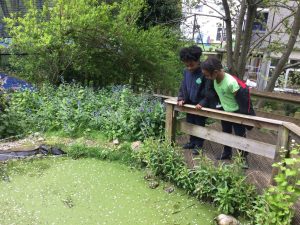
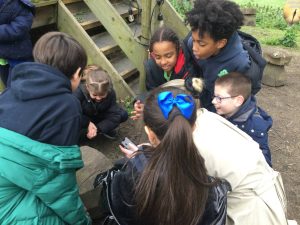

26th April 2024: ‘Xplore’ workshop
This week, Year 5 were lucky enough to have a visit from Xplore, and took part in a Science workshop. Xplore came in to teach our children all about Rare Earth Element (REE) Extraction.
During this engaging and hands-on experience, our children learned about:
- What Rare Earth Elements are and where they come from
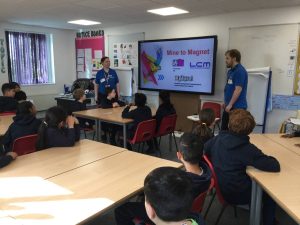
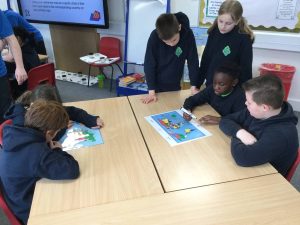
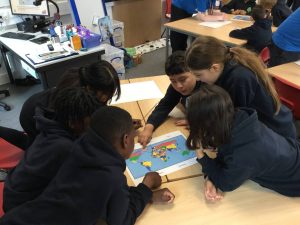
- Processing of the raw materials and production of magnets and the use of magnets in everyday technology
- How they are applied to find greener solutions.
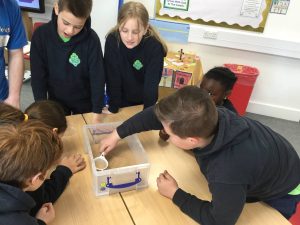
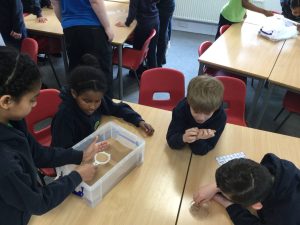

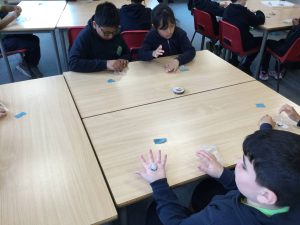
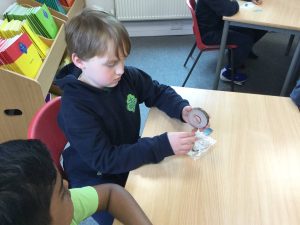
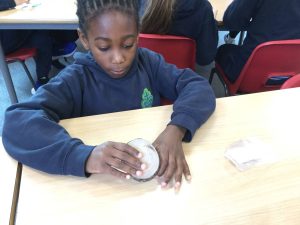
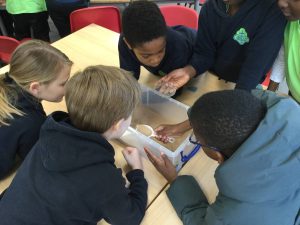
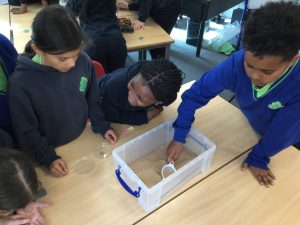
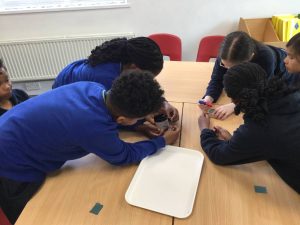
In the session, the children took part in ‘extracting’ elements from the earth, they ‘crushed’ the elements and were then able to create their own magnet by the end! It was a fantastic session and the children of Year 5 were so engaged and felt very lucky to be able to have this experience!
25th April 2024: Row, row, row your boat
We learnt the nursery rhyme, ‘Row, row, row your boat’, and shared our own experience of boats – and even submarines. As part of our ‘Switched on Science’ learning we decided to investigate which kind of materials might make a good boat. We tried some of our ideas out on the water. and made some fantastic boats out of junk modelling materials.
15th March 2024: Searching for minibeasts
As part of British Science Week 2024, the children in Year 2 learned about habitats, microhabitats and how they change over time. ‘Time’ is this year’s theme and pupils were able to confidently talk about how the changing of the seasons as well as night and day may affect habitats and the creatures found there. They also know that a habitat is a large area where a living thing can live because it has all the things it needs to survive such as food, water and shelter.
Additionally, the children also learned that a microhabitat is a smaller, special version of a habitat where living things such as ants, caterpillars, woodlice, worms and spiders live. Examples of microhabitats include piles of leaves, a patch of grass, a fallen log, loose rocks and even the cracks in a pavement.
Afterwards, the children had an opportunity to explore the school grounds to search for minibeasts in their microhabitats. They managed to find a lot, especially in the woodland area. The most common was minibeast was woodlice… many of these were hiding underneath the wooden stools near the treehouse. Some children also found worms wriggling around as well as ants and spiders crawling all over the place.
14th March 2024: British Science Week in Year 4
This week in Year 4, pupils have been working extremely hard! They have been completing a range of tests in mathematics, reading, punctuation, and grammar. The progress since the autumn term is evident, with the children super focused and making great progress across the curriculum.
As it is Science Week with the theme of ‘Time’ it was only right the pupils partake in some activities after our hard-working efforts! They came up with several different activities and partners timed for 1 minute to see how many they could complete. After they swapped roles and compared results. Some of the activities included:
How many times could you blink in 60 seconds?
How many press-ups could you do in 60 seconds?
How many hi’5s could you complete in 60 seconds?
Feel free to try some of these at home! 😊
They also began to think about time on a deeper level, discussing evolution and things such as: lifecycles, technology, clocks, age, etc. Some fascinating conversations and a great way to spark ideas for the Science competition!
2nd February 2024: Polar habitats
Year 1 have been working very hard in their Science lessons this week. The children have been exploring the habitats of the Arctic and Antarctica to discover how animals have adapted to their surroundings. Year 1 have identified that polar bears have adapted to their cold habitat in the Arctic because of their thick, white fur which keeps them warm and helps the polar bear to camouflage in the snow and ice. Year 1 have also discovered that Penguins have blubber under their skin to help keep them warm in their icy habitat in the Antarctic, as well as webbed feet so that they can walk on the slippery ice. Year 1 have made some fantastic fact files to show their learning!
19th January 2024: Electricity
This week in Year 6, our pupils carried on with their electrifying topic of “Electricity” in Science. The pupils were prompted with the question, “Is there a relationship between the amount of batteries used in a circuit and the brightness of a bulb?” The pupils had to plan, carry out, observe and record their findings. They did find that there was indeed a relationship between batteries and lightbulbs, mainly that the more batteries, the brighter the bulb. They furthered the investigation by applying the same concept to motors and buzzers.
12th January 2024: Flowers
Our Year 3 pupils have started off the Spring term with a bang! These beautiful illustrations in Science, introduced our new topic ‘How Does Your Garden Grow’. Over the coming weeks students will be doing a number of hands on experiments in the school gardens. These experiments will further students knowledge on the key role flowers play in our day to day lives.
12th January 2024: Earth and space
Year 5 have started their new Science and Writing units which are on Space, and we have been so impressed with all of the AMAZING Science projects that the pupils have taken the time to work on over the Christmas holiday. In Science, they have started looking at our solar system and how all planets orbit the Sun, but they learnt that this wasn’t always what people thought!
Please take a look at some of the children’s’ excellent projects below:
12th January 2024: Living things
In Science, Year 4 started their new topic ‘Living Things’. The pupils incorporated all of their prior knowledge onto a poster to create a mind map. They noted things such as different animal groups, plant groups, invertebrates, vertebrates and remembered different characteristics of why living organisms belong to a certain group.
17th November 2023: Wild and garden plants
In their Science lessons this week, Year 1 have been looking at the difference between wild plants and garden plants. They went on a nature walk to the woodland areas around the school to see if we could identify any wild or garden plants. The children also managed to spot a lot of deciduous trees around the school and were able to identify these because they lose their leaves in the colder seasons of Autumn and Winter.
10th November 2023: Let there be light!
This week in Science, our Year 3 classes conducted an experiment which measured the intensity of light. The children’s observations concluded that the intensity or brightness of light can be impacted in many ways. Factors such as transparent and opaque objects can influence how bright light can be.
3rd November 2023: Into the woods…
What a first week back Reception have had! It is safe to say that the children have fully immersed themselves in their new theme “Into the Woods” and excitedly engaged with the activities set for them. The children started the week listening to their focus text ‘Little Red’ in the school treehouse.
After the story, Reception then went over to explore the woodlands and investigate whether they could spot the Big Bad Wolf lurking amongst the trees. When they couldn’t find him, the children decided to use their senses to describe the woodlands and eagerly talked about the things that they noticed and what they could see and hear in the environment. The children used different media to create artwork representing the autumn trees that they observed and talked about the different colours of the leaves.
20th October 2023: Sensory bottles
This week in Science, Year 1 have used all of their knowledge and learning in their topic ‘Who Am I?’ to create sensory bottles. The challenge was that their bottles had to target three of the five senses: touch, hearing and sight.
The children used a range of different materials to create their unique bottles. Everyone is very proud of them and cannot wait to put them up on display for next term. Year 1 have worked really hard all half term and have enjoyed learning about the human body, joints and the five senses.
20th October 2023: UCL students visit Year 5
Year 5 were really lucky to have some UCL Chemistry students come in and talk to them all about air pollution in their local area. The pupils helped them with their investigation by suggesting places in and around Archway where they predicted pollution might be highest and lowest. In December, the UCL students will return to inform us of their findings.
13th October 2023: Sensational senses
This week, Year 1 had a fantastic outdoor, environmental lesson with Miss Sophia. The children learned about the season of Autumn and observed changes with their sense of sight. They had a lovely time planting daffodils and learning about the different parts of a bulb.
Also this week, Year 1 put their senses of smell, touch and taste to the test! The children went around the different stations where they could guess the scent in the smell jars, describe the feel of different materials and do a taste test. I think it’s safe to say that the least popular taste was lemons!
12th October 2023: Sound collectors
Nursery have been exploring sounds this week, as part of their Science topic ‘Sound Collectors’. The children have been listening carefully to sounds all over their environment. They listened to the sounds of nature, people and even the different ways that water moves around.
They were then introduced to a range of musical instruments and talked about how sounds are made from them. They also learnt how sounds can be changed. The children discovered that some instruments can make high notes and low notes. They investigated how we can change sounds to make them louder, quieter, faster or slower. Nursery did this by playing the instruments, singing and clapping in different ways. Pupils took turns to decide how the class should play! Finally, they also had a go at making their own instruments to help us with our learning.
6th October 2023: Stargazers
This week, Year 5 were incredibly lucky to be invited down to Archway Library to participate in some space activities. They were able to take part in an exciting art session and either created their own solar system, planet, or rocket using lots of different materials. Looking at the photos, I think you will agree they have turned out brilliantly. Also, our pupils had the opportunity to speak to space experts and ask them lots of questions. It was a fantastic afternoon out!
5th October 2023: Identifying outdoor sounds
In their Science lesson this week, Year 1 have continued learning about their senses with a focus on ears and listening. They went outside on a listening walk in order to identify lots of different sounds. Pupils could hear “wind blowing”, “children playing”, “building tools” and lots of “laughing”. They also discussed the changing of the seasons and what happens to the trees so they explored our woodland area to investigate for any signs of autumn.
4th October 2023: Planting salad leaves with Ms Sophia
On Wednesday afternoon, Reception had a visit from Ms Sophia for their environmental lesson. The children used their senses to explore different types of herbs and some of the children were able to talk about a human’s sense of smell. Ms Sophia showed the children lettuce leaves and talked about how we can eat them and that they are usually used in salads. The children listened carefully to the instructions and planted their own salad leaves and talked about how they can care for them at home. Reception can’t wait to observe them growing over time!
22nd September 2023: Solids, liquids and gases
In Science, Year 4 have been exploring states of matter! They have already explored different types of states such as solids, liquids and gases. They now know that when a liquid turns into a gas, this is a process called evaporation. Also, when cooled gases turn back into a liquid causing condensation. The children experimented with this idea through the use of a jar, boiling water and ice!
22nd September 2023: Nursery explore the school’s outdoor environment
Nursery had their first visit of the year to the garden area of the school, where they met our Environmental Teacher, Ms Sophia. She gave us an exciting tour of the garden as well as the greenhouse. The children saw some tomato plants and were even able to pick a few!
After that, the children put on their gardening gloves and learnt how to plant some lettuce seeds. The Nursery pupils were excited to be given their very own pot to take home at the end of the week. Everyone is looking forward to helping the plants grow!
15th September 2023: Year 3’s live lesson with the experts at the Oxford University Museum of Natural History
To kick off their learning all about ‘Rocks, Soils and Fossils’, our Year 3 children watched an interactive live event all about rocks, fossils, and dinosaurs. They were amazed to learn many fun facts about fossils, one of which made them all gasp in horror! Did you know that there are dinosaur poos that have been fossilised over thousands of years? If you didn’t… well now you do!
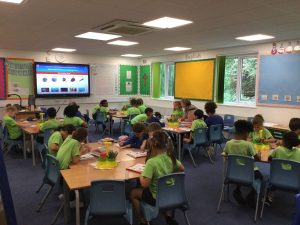
15th September 2023: All about air resistance
This week, Year 5 have been learning all about air resistance in their unit ‘Let’s Get Moving’. They learnt that air resistance is a type of friction between air and another material. We asked the question, will changing the size of the paper helicopter affect the descent time of the falling object? They found out that it did and those objects with a larger surface area in relation to their mass would fall at a slower rate! They really enjoyed taking part in this lesson. Great work Year 5!
15th September 2023: Super scientists in Year 1
This week, Year 1 were introduced to their Science unit for the half term – ‘Who am I?’. In their first lesson, the children learnt that vertebrates are animals with a backbone and humans have a backbone too. They also learnt that the backbone is also called the spine. The children felt their spines by running their fingers down their backs. They now know that having a backbone is one of the things that makes us similar to other vertebrate animals. They also discussed the human skeleton and learnt that is provides support and structure for the body. Finally, they worked together to label some key parts of the human skeleton such as the skull, spine, ribs, and leg bones.
8th September 2023: Sorting foods
After a busy first week back, our brand new Year 2 pupils have settled into their classrooms and already made a wonderful start to the school year! In Science, the children confidently identified healthy and unhealthy foods. They thought very carefully about where to place certain foods such as burgers, as some children said it really depends if you put lettuce and tomato on the burger or cheese and lots of bacon. Well done to everyone as you’ve made a fantastic start to your Year 2 Science learning!
7th July 2023: Little Gems on the farm
This half-term, our Little Gem children have been exploring animals that live on the farm. They have been making weekly visits to see the chickens and learn how to look after them.
They have also been looking at different animals each week, from cows to pigs. The children been looking at and discussing the patterns and colours on the animals’ skin recreated these using different art resources.
5th July 2023: Scientists in action
Our Year 1 pupils have been working very hard in their Science topic, learning about animals. The children sorted various animals into their animal groups while working together as a team and discussed which animals are herbivores, carnivores and omnivores.
3rd July 2023: Natural History Museum
On Monday, Year 3 travelled to the Natural History Museum in South Kensington to explore some of the exhibits on rocks and fossils. In addition, the children were able to explore other topics covered over the course of their time in school. They spent two hours exploring the amazing halls of this fascinating museum as it had lots of interactive activities for pupils to take part in. Pupils were amazed to make links to their previous Science learning from Autumn term about fossils, ammonites and Mary Anning.
23rd June 2023: A visit from a scientist
On Friday morning, Milo’s mum came in to talk to Year 2 about her job working in a lab. The children are currently learning about scientists and inventors in their Science topic so it was wonderful to hear some stories and interesting facts from a real scientist. The pupils listened with great curiosity and were keen ask many questions. Some of their questions were: ‘Do you work with DNA?’, ‘Do you ever make mistakes and have to start again?’ and ‘Do you use computers with science?’. Milo’s mum explained that there are many different types of Science such as Computer Science, Biology, Chemistry and Physics. She told the children that she works in Biology performing tests and she even showed the children some of the equipment she uses on a daily basis. A few children were able to use a pipette to measure very small amounts of liquid, just like Milo’s mum does at work! They loved the talk and we greatly appreciate your time!
21st June 2023: Comparative tests
Year 4 were mad for marshmallows this week as they continued their Science topic: ‘The Big Build’. Their aim was to carry out comparative tests to understand the use of triangles to support structures. First, they made a square and triangle using their spaghetti and marshmallows. When they applied force to one vertex of the square, the square changed shape and the size of the angles changed. However, this did not happen with the triangle. Triangles have fixed angles, making them stronger shapes.
Next, the children were asked to make a cube with their materials. When they put weights onto these cubes they fell immediately. Then the children added triangles to support the cube. The cubes were able to hold a significant amount of weight. This confirmed what we had learnt; that triangles are effective shapes to support structures.
16th June 2023: Perfect pillars
This week, Year 4 continued their Science topic ‘The Big Build’, focusing on bridge pillars. The children were tasked with planning a fair test to determine the strongest 3-D shape to make a bridge pillar. They discussed the variables they would need to keep the same and change, before deciding how best to carry out the test. The children decided to use books as weights, placing these on top of each pillar. Pupils made their own predictions about which shape might be the best pillar. Despite last week’s discovery of triangles being a very strong shape, the triangular prism did not hold the most books. The cylinder was the strongest shape, holding up a large number of books before collapsing. This will be very helpful information as Year 4 begin to plan their ‘Big Build’ project over the coming weeks.
9th June 2023: Materials and their properties
In Science this week, Year 5 classified materials by their properties – investigating which materials were magnetic, water resistant, flexible, rough or smooth. They discussed how the objects tested may have slightly different properties from other objects of the same material and why this might be the case (and when investigating leather, Mr Arnold had water poured into his shoes!)
7th June 2023: Scientists and Inventors
In Science, Year 2 started their brand new topic ‘Scientists and Inventors’. The children used the school’s History timeline to find some key discoveries and inventions that have been made over time. They worked in groups to spot various examples and then wrote some down on whiteboards. When we got back to class, they shared everything they found and we compiled a list together.
18th May 2023: Absorbent or waterproof?
This week in Science, Year 2 learned about waterproof and absorbent materials. If a material is waterproof it keeps water out but if it is absorbent then it will soak up liquids such as water. After learning the meaning of these two words, the children made predictions as to whether certain materials were likely to be absorbent or waterproof. These included: tin foil, cardboard, newspaper, plastic, tissue, metal, rubber and cotton wool. Once they made their predictions, the children worked together in small groups to test the materials using a syringe filled with water to squirt the various materials. The children worked well and took turns. In the end, we discovered that each group had the same result when we discussed the test as a whole class. The children finished the lesson by recording their results in a table.
12th May 2023: Power it up!
Year 4 have been exploring how we can use a range of components in an electrical circuit. The children were challenged to make a circuit with a lightbulb which could turn on and off. They worked together to add a switch, ensuring each part of the circuit was connected so the electricity could flow. Then, they began making their own switches using pins, metal paper clips and card. The children realised they needed to connect the wires to the metal paper clip as this is a conductor of electricity. To open the switch then moved the paper clip from the pin. This stopped the flow of electricity so the bulb turned off. When the circuits were complete, the children presented their findings in a presentation with their group. They discussed how they had created the circuit, why they used specific materials and how they could use the circuit for a lamp.
10th May 2023: Sowing sunflower seeds
This week, both Year 2 classes had environmental workshops with Miss Sophia. The children discussed seeds, plants and what they need to germinate and grow. This was good revision as they previously learned about plants in Science last term. Miss Sophia was very impressed with the children’s answers to her questions. After this, the they carefully filled plant pots with compost and then dug two small holes to plant their sunflower seeds. Fingers crossed they grow into tall, beautiful, golden sunflowers!
28th April 2023: Light and shadows
In Science this week, Year 6 explored their new topic ‘Light’. The pupils discussed how they could prove that light travels in straight lines. This led to further discussion as to how shadows are formed. The pupils then set up an experiment where they drew the direction the light of a torch travelled when faced with an opaque object.
26th April 2023: Sunflowers
On Wednesday, Nursery took part in a gardening workshop with Sophia. The children all hope that their sunflower plants grow in time for the competition.
24th April 2023: Hunting for invertebrates
The Year 1 children started the week back after the Easter holidays with some excellent Science work which included an outdoor hunt for invertebrates in the school grounds. They managed to find quite a few! Take a look below to see what they found:
21st April 2023: Dissecting mushrooms
Year 6 finished their topic on classifying living things this week. They looked at the 5 different kingdoms of life before taking a deep dive into fungi (it was more pleasant than it sounds!). The pupils looked at the anatomical features of a mushroom, then dissected the mushroom to observe the gills more closely. They explored how the gills spread spores to reproduce and tested this by placing the head of the mushroom on a piece of paper to see if any spores dispersed… and they did!
21st April 2023: Fantastic friction
This week in Science, Year 3 began their topic ‘Forces and Magnets’. Pupils carried out an investigation into how objects move on different surfaces. This process allowed pupils to gather and analyse results which helped them to identify which surfaces cause the most friction. Following this, they explored friction and how friction occurs in everyday life. Pupils were then able to think about jobs or sports that may require different amounts of friction.
31st March 2023: British Science Week 2023 poster competition
A big thank you to all of the children who submitted their entries to the British Science Week 2023 poster competition. The theme this year was ‘Connections’ so the children were able to explore lots of different STEM topics. You can see some of the wonderful submissions below. We’ll be keeping our fingers crossed that the judges select a winner from St. Joseph’s!
29th March 2023: Super sowers
Year 4 enjoyed their Environmental class this week, which involved planting and appreciating the sounds of nature. The children began the lesson by discussing how sounds occur and creating our own circuit of sound. This linked with our current Science topic ‘Sound’ so the children were able to recall their learning and build upon their understanding of how sound travels. Next, they had the opportunity to appreciate the sounds of nature and they each drew their own ‘sound art’ pieces to depict what they could hear.
Then, the children were tasked with spotting the signs of Spring. In pairs, they explored our school woodland area to find a range of signs in nature that show us that ‘Spring has sprung’! These included birds, blossoms, flowers, buds, seedlings and frogspawn to name a few. Finally, the children were able to plant their own cornflower seeds. They each had a pot, filled it with compost and sprinkled on the seeds. Now, they have been tasked with taking care of their plants at home so that they grow into beautiful cornflowers.
24th March 2023: Nursery’s ‘eggciting’ news
This week, Nursery were very surprised and excited to discover some eggs in their classroom! Where did they come from? The children talked about which baby animal they thought might hatch from them; and represented their ideas with drawings, paintings and playdough models.
On Wednesday morning, they started to hatch… and inside there were baby ducklings! We were very surprised that some were brown as well as yellow, and that they made such a loud noise!
The children had lots of fun looking at them and describing what we could see as they got stronger and fluffier. They have mostly all hatched now and we have been looking after them by making sure they have enough food and water. What a wonderful way to learn about the life-cycle of a duck!
24th March 2023: A dinosaur in the playground
On Tuesday this week, the Reception children received an email from Michel with a video attached. They made predictions about what the video might be about before seeing it. Some children guessed correctly when they said they thought it might be a dinosaur. Once outside a group of children decided to set a trap to try and catch the dinosaur if he came back.
Inside, the children learnt how to manipulate and mold the clay into a ball before flattening. Children then inserted a mini dinosaur into the clay to make a fossil.
In Red class, the caterpillars have now made their chrysalis. We are excited to see them change and develop over the next week. In Ruby class the caterpillars have not yet made their chrysalis so we have taken the opportunity to been explore similarities and differences. The stick insect eggs we had delivered have also hatched! We now have five little stick insects to look after as a class.
Friday was also very exciting! We spent the morning outside in the lovely sunshine but then in the afternoon there was a hail storm. We all went outside under the cover, to listen and watch the hail as it fell. Once the storm had calmed down, some children collected the hail so that we could look at it closer inside. Some of the hail was 1cm big.
17th March 2023: The science of sound
Year 4 have been enjoying their current Science topic ‘Sound’ which focuses on identifying how sounds are made, recognising that vibrations from sounds travel through a medium to the ear, and finding patterns between pitch, volume and features of objects which produce sounds.
The children have carried out experiments to explore pitch and volume. First, they focused on volume, using percussion instruments and altering the volume using different levels of force. The children realised that larger vibrations caused a louder sound. Then, they explored varying pitches. Pupils used a ‘glass orchestra’ experiment to explore how pitch changes with different levels of water in a glass. The children noticed that the glass vibrates when we tap it but the air in the glass vibrates when we blow over the glass. This caused opposite changes of pitch. When they blew over the glass, a longer column of air caused slower vibrations which resulted in a lower pitch.
Next, the children explored pitch using homemade pan pipes. They cut straws of different lengths and stuck them together to make straw pan pipes. These were then used to find out how the pitch changed as the length changed.
The Year 4s are looking forward to learning more about sound in the coming weeks, focusing on measuring the how sound changes with distance using the unit decibels.
14th March 2023: Food, fitness and our bodies
This week, our Year 3 pupils were lucky enough visit the Arsenal football stadium for a workshop on health and wellbeing. The children began their morning with an obstacle course that challenged them all to use a range of different body parts, putting their fitness to the test. Next, pupils had to design with a poster that promoted different ways in which we can encourage people to participate in sports and fitness activities. Finally, the morning ended with an amazing tour of the grounds where the children had an opportunity to see all of the amazing facilities which players used on a daily basis. This trip was closely linked to their current Science topic ‘Food and Our Bodies’. It was beneficial as pupils were able to gain a deeper understanding of the importance of looking after our health and wellbeing as we grow up.
13th March 2023: Searching for minibeasts in microhabitats
This week in Year 2, the children have learned about habitats and microhabitats. They now know that a habitat is a large area where a living thing can be found because it has all the things it needs to survive such as food, water and shelter. In addition, they also learned that a microhabitat is a much smaller version of a habitat where living things such as ants, caterpillars, woodlice, worms and spiders live. Examples of microhabitats include leaf litter, a patch of grass, a log, loose rocks and even the cracks in the pavement. Afterwards, the children had an opportunity to explore the school grounds to search for minibeasts in their microhabitats. They managed to find quite a few and the most common was woodlice… many of these were hiding underneath the wooden stools near the treehouse and in the woodland area. Some children also found worms wriggling around as well as ants and spiders crawling all over the place. We didn’t see many snails however because it was a dry day and know that snails tend to like wet weather as they can move much easier on moist surfaces.
10th March 2023: Learning about growing
Nursery have had a productive week learning about plant growth. They arrived on Monday to find a beanstalk growing in their classroom and set about investigating where it might have come from.
The children planted their own beans at the beginning of the week and we also planted one in the greenhouse to find out if it plants grow better there.
On Wednesday, they participated in a special gardening workshop with Sophia. She taught them how to plant tomato plant seeds and we learned what plants need to help them grow.
The children also started the class key text ‘Jasper’s Beanstalk’. They acted out the story and created beanstalks for Jasper using paint and playdough.
9th March 2023: Classification
This week, Year 6 learned about general classification before moving on to classifying living things. The children created classification keys based on specific characteristics of different sweets. As a class, they discussed the importance of classifying different variations of something and how this helps us determine species, for example, in plants. Obviously, the pupils were allowed to eat some of their sweets after all their hard work!
3rd March 2023: Living, dead or never alive?
Year 2 worked in small groups and used our school’s amazing outdoor space to search for things that were living, dead or never alive. This is part of their brand new Science topic ‘Our Local Environment’. Some of the things they found were: metal fence (never alive), coffee cart (dead as it’s mostly made of wood which used to be a living tree) and birds (alive). The children found many more things for each category and compiled a list together as a class, taking suggestions from each group.
27th February 2023: Minibeasts and megabeasts
Reception have started their new theme ‘Minibeasts and Megabeasts’. They have been exploring their brand new bug investigation lab. The children decorated their own lab coats ready to be scientists and learn all about the minibeasts we can see and find outside. They have learned how to use bug pots and can’t wait to go into the woodlands to collect some insects to look at closely.
We are really hoping that we will be allowed to have our own minibeasts. Some children wrote letters to Mrs Noronha and Miss McFlynn asking if they would let us have some ants, caterpillars and stick insects. Fingers crossed!
24th February 2023: An electrifying return
In Science, Year 6 conducted their own experiments to see whether or not the length of wire impacts the function of simple circuits. The pupils planned, conducted and then reflected on the experiment to draw conclusions from their findings. They finished the lesson by trying to include the whole class in a final test to see if the lightbulb would still work (spoiler alert: it did!).
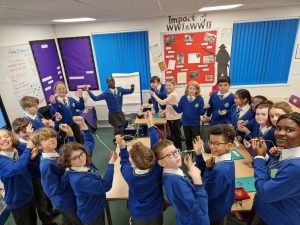
10th February 2023: A day out at Kew Gardens
Year 2 had a lovely day out at Kew Gardens today to celebrate finishing their current Science topic ‘Young Gardeners’. The children were able to use their knowledge of flowers to identify the parts of plants. They also asked some interesting questions about different species and pollination. Undoubtedly, everyone had a fun day out! Thank you so much to our wonderful parent helpers. We couldn’t have done it without you. Have a great half-term break!
8th February 2023: Young gardeners in Year 2
Last week, the Year 2s made their own predictions about whether or not cress seeds would be able to grow on cotton wool. Last Friday, the children observed some tiny seedlings which proved the seeds had germinated successfully but over the weekend, they’ve had a growth spurt! The children were amazed to see the cress had grown quite a bit which proves that some seeds and plants do not need soil to grow, just enough water and the right temperature.
7th February 2023: Aliens have landed in Reception
This week, Blob the missing alien sent Reception two very important parcels. The first one was an egg to look after after until we can send it back to his home planet. The children spent a long time looking at the egg and wondering what might be inside. When it finally hatched on Thursday, the children discovered two baby aliens to look after! They were very little but a bit slimy!
On Wednesday, the children had another special delivery. This time it was some space food to try so Blob knew which ones his babies might like. He wanted them to have astronaut food. The children tasted three different flavours and the winner was strawberry chips.
The children also enjoyed playing with some space slime! They talked about the texture of the slime with each other and used words such as ‘slimy’, ‘sticky’, ‘wet’, ‘gooey’ and ‘colourful’ to describe it.
3rd February 2023: Will cress seeds germinate without soil?
In Science, the Year 2s conducted an experiment to see if cress seeds can germinate and sprout seedlings without the need for soil. To do this, they ripped cotton wool and soaked it in water before sprinkling the seeds on top. The children then made predictions using their own scientific knowledge. Many of them said that the seeds would grow because all seeds need are water and the right temperature to germinate. And… it seems they would be correct as even after only a few days, we have observed cress seedlings emerging from the seeds.
2nd February 2023: Using J2 Animate in Science
This week, Year 3 have been exploring the stop animation program in their computing lessons. Over the next few weeks, pupils will begin to create an animation to show the process of a flower’s growth, starting with a seed. This will allow pupils to further explore the life cycle of flowers and plants that grow in our gardens.
Pupils have also continued studying flowers by looking closely at how seeds are dispersed. They had opportunities to investigate and research the many different ways in which seeds start their journey. In addition, the children have been using their prior knowledge of climate change to discuss how climate change has an impact on flowers and plants.
1st February 2023: Cookies and creations
Year 5 completed a crafting project with the Reception children. As both year groups are learning about the planets in our solar system, they worked together to craft models of their own. The children used papier mache to create the (roughly) spherical shape needed and then painted them. Year 5 had so much fun helping Reception to learn about planets and how to identify them.
The pupils also had a pretty yummy Science lesson this week, learning about the phases of the moon. The children made a model of the phases of the moon using Oreos. Let’s hope they remember their learning now that they’ve eaten the evidence!
Finally, Year 5 went on a reconnaissance mission of their own this week, investigating the moon, in preparation for writing a formal report about their findings in English.
31st January 2023: Flower power!
This week in Year 3, the children have been exploring the reproductive process which takes place in plants called pollination. They looked closely at the male and female parts of a flower and learned about their functions. Pupils then took part in a speaking and listening activity which allowed them to express the importance of pollination and protecting bees; especially in our current climate crisis. Pupils thoroughly enjoyed making these meaningful links with their previous Geography topic ‘Weather and Climate’.
26th January 2023: Looking into space
This week, the Reception children have had such an exciting few days starting with a special delivery to help them see into space. Each class was given a telescope to look into the sky with. They learnt how to close or cover one eye so that they could see through the other. After looking through the telescope, the children wrote about what they could see or what we might see at night.
We really wanted to allow the children to experience what it might be like to look through a telescope at night, so we used our school’s VR headsets to look at pictures of different planets and observe what the moon looks like close up. “I can’t touch the moon but I can see it” one child said, another commented “We felt like we were not in school, it was a magical place!”
25th January 2023: Big Schools’ Birdwatch 2023
This week, Year 2 took part in the Big Schools’ Birdwatch. It is a simple bird survey for pupils around the UK to take part in and enjoy together. The children had fun counting the number of birds in the school grounds. They used binoculars to spot birds hiding high above in the trees and clipboards to keep a tally of the different types of bird including robins, magpies and thrushes. The results will contribute towards the Big Garden Birdwatch – the world’s largest wildlife survey.
20th January 2023: Emerald class assembly – How does your garden grow?
Today, Year 3 Emerald Class put on a wonderful performance of ‘How does your garden grow?’ exploring what plants need to grow as well as the links between growing and the weather. The eco-warriors also explored ways in which we can look after God’s creation. Please see link below for the recording of the assembly and enjoy!
19th January 2023: Out of this world
Year 5’s Science lessons have been anything but boring this week! On Thursday, the children investigated the speed at which the various planets orbit the sun. They discovered that the closer a planet is to the sun, the quicker it orbits. Use the QR code below to see a group showing this through a fun interactive activity.
Later in the week, the children learned how the Earth’s rotation on its axis creates night and day. They modeled this by using iPads as a light source to mimic the sun and balls to represent the earth.
18th January 2023: Bird watchers
This week, Year 4 had their environmental lesson with our specialist teacher, Sophia. The lesson was closely linked to their current Science topic ‘Living Things’. The children were given the opportunity to gather a range of leaves so they could discuss similarities and differences in preparation for sorting them. The children noticed a number of different features such as the shape, colour and veins on the leaves. They used these features to think of questions that would enable them to create classification keys and organise the leaves into different criteria. The keys were very successful, helping the children to see how scientists use criteria to sort living things.
After this, the pupils took part in the RSPB wildlife explorer survey which involved spotting birds which flew over our schools grounds. The children were able to spot a range of birds, such as blackbirds, robins, sparrows and magpies. Sophia spoke to the children about the importance of this survey in helping us to see which birds are living in our local area.
13th January 2023: ‘The CO Crew’ visit Years 5 & 6
To finish the week, Years 5 & 6 had an eye-opening workshop on the dangers of carbon monoxide. The workshop was extremely active consisting of mind maps, drama and dancing! Carbon monoxide (CO) is a poisonous gas. If you breath it in, it can make you very ill. You can’t see, hear, smell, taste or touch it, which is why it’s know as the ’silent killer’. Our pupils came away with a much sounder understanding of such an important issue and can articulate how to stay safe in regards to carbon monoxide in the home.
9th January 2023: Calling all scientists!
We now have new areas in the library dedicated specifically to Science. EYFS can find their books downstairs. KS1 and KS2’s books are on display upstairs on the rocket shelf. There are a range of interesting non-fiction and fiction books as well as wonderful fact books covering many interesting topics such as plants, animals, space, light and many, many more. We hope that the children enjoy exploring Science even further through reading to extend and deepen their learning!
6th December 2022: UCL students return to share their findings
Years 5 and 6 took part in an exciting Science project where students from UCL came to work with our pupils. They visited our pupils earlier in the year and taught them about air pollution and how we can conduct a scientific experiment to check a hypothesis. This week, the UCL students returned to share their results. Previously, the children took part in a quiz and then used a map of our local area to identify locations of low and high pollution. Following this, the UCL students placed air quality tubes in these locations to gather pollution data. It was very interesting to hear their findings and understand why some areas have more or less pollution.
1st December 2022: Safety Seymour teaches Year 2 about carbon monoxide
Today we had a very special visitor in Year 2… Safety Seymour! He is a superhero bear who teaches children all around the UK about carbon monoxide. We learned that you can’t smell, see, taste, hear or touch this gas. The children also learned that certain appliances in the home need to be checked regularly by engineers to ensure that carbon monoxide isn’t leaking into the air. The flames on cookers and boilers should always be blue which means they are healthy. If they are yellow or orange, carbon monoxide is being produced. Also, we learned that if we breathe in too much carbon monoxide, it can be deadly! Therefore, we acted out some of the signs and symptoms of carbon monoxide poisoning such as belly ache, headache, fainting and breathlessness so we can be more aware of this dangerous gas. At the end of the session, we were given a goody bag which included our very own carbon monoxide alarm that we could take home.
1st December 2022: Maintaining a balanced diet
Our Year 3 pupils took part in a fantastic diet and health workshop this week. During the session, they learned about how we can all maintain a balanced diet. Pupils studied the eatwell plate and asked lots of interesting questions to the nurses who visited.
30th November 2022: How food travels through our bodies
In Science this week, Year 4 have been exploring the digestive system and discovered how food moves through our bodies. The pupils took part in a gory demonstration to see how food moves from our mouth, down the oesophagus into the stomach and through the intestines before it eventually leaves the body. After a few laughs, the children were much more equipped to be able to write about this process.
28th November 2022: Into the woods
In Reception, the children have been reading the book ‘Little Red’. They have also been thinking about the different characters in the story, how they might feel at different points in the books as well as learning new words to describe them. In addition, the children have been very busy exploring the woodlands each week and imagining what it might be like to walk in the woods all alone.
While in the woods children noticed different plants and learnt the names of some including the ivy and holly leaves that we saw growing. Back inside the classroom, the children have been retelling the story at the small world area and writing about the book. Some children imagined they were going on an adventure in the woods and drew and labelled what they would need to take with them.
25th November 2022: Mud, mud, mud!
On Friday, Nursey had an exciting Science session called ‘Mud, glorious mud!’ The children and teachers talked about mud, where it comes from and what it might be made of. They investigated what happens when we add different things to soil and predicted whether mud or sand would be best for making castles. The children discovered that was the winner. Nursery also learnt why pigs and hippos like to roll in mud and had lots of fun painting brown pictures with it!
25th November 2022: Time to get fizzy in Year 5
There was bubbling and fizzing galore in Science this week as the Year 5 children explored the chemical change that takes place when bicarbonate of soda (an alkaline) mixes with an acid. The children learned that this is a irreversible change because a new product is created. In groups, they came up with their own questions to investigate such as ‘How do different acidic liquids react with bicarbonate of soda?’, ‘Does the temperature of the liquid change the reaction?’ and ‘How does different amounts of liquid change the reaction?’.
23rd November 2022: Shadow casters
Year 3 have moved on in their current Science topic ‘Light and Shadows’ to explore how shadows are formed. Pupils investigated the process of shadow formation and studied which objects make the best shadows. They explored an assortment of translucent, transparent and opaque objects. After some investigation, the pupils concluded that objects made out of opaque materials created the best shadows. Pupils also had opportunities to make and test predictions in addition to working on their explanation skills.
10th November 2022: A balanced diet
The Year 2 children learned that humans need to eat the right amount of different types of food such as fruit and vegetables, carbohydrates, proteins, dairy and oils. They used the eatwell plate to discuss which food groups are the most important. They discovered that fruits and vegetables as well as carbohydrates are the two most important groups. Fruits and vegetables provide nutrients and vitamins for our bodies and carbohydrates give us energy to exercise, play and learn. The children also now know what a balanced diet looks like.
8th November 2022: Tooth-tastic learning in Year 4
In Science this week, Year 4 have been learning about the different types of teeth and their functions. The children learned the names of our teeth using the mnemonic ‘I Can Pour My Water’; Incisors, Canines, Premolars, Molars and Wisdom teeth. The children used mirrors to find these in their mouths. Then, they explored why we have these 5 different types of teeth using bread. Afterwards, they created an imprint in the bread to see the shapes our teeth made; recognising that incisors created thin lines while molars created thick dents on the bread. Next, they tore off a piece and ate it; discussing the different teeth we used to do this.
In the following lesson, they began to think about how to answer the question ‘What causes tooth decay?’. To do this, the children planned fair tests to compare the effect of five different liquids on the eggs. The shells of eggs are made from calcium so they used these to represent our teeth. In three days they will check these liquids to see if the eggs have changed.
4th November 2022: Exploring buoyancy in Year 6
This week, our Year 6 pupils learned that the buoyancy force on any object is equal to the weight of the fluid displaced by the object. Following this, they conducted comparative tests to check the difference between the buoyancy of an unpeeled compared to that of a peeled orange. They then explored what may cause tinfoil to float when scrunched in air versus when scrunched in water.
2nd November 2022: Environmental connections
Year 4 had their outdoor environmental class this week with Sophia who explained how and why our leaves change colour. The children were given an opportunity to find some leaves and compared them. We discussed how leaves produce oxygen and absorb carbon dioxide. Then, we explored the connections between things in our environment using a web. Each child held a card with something on it, for example, a leaf or a creature. They threw the string to another person in their group, who had to explain how their cards were connected. We had some very interesting connections; such as food chains and habitats. The children were then able to see how each thing creates a web which links the wider environment together.
21st October 2022: Year 3 paleontologists
In Science this half-term, our Year 3 pupils have been exploring the process of fossilisation. They learned how fossils form and also had the opportunity to conduct research on the famous paleontologist, Mary Anning, who pioneered the study of fossils. With our final week having a DT focus, pupils applied their knowledge and understanding of fossils to make their own salt dough fossils.
19th October 2022: Making healthy pizzas
To celebrate the end of our current Science topic ‘Healthy Me’, this week the Year 2 children made healthy pizzas. We made cross-curricular links with Design & Technology as the children were taught how to cook a simple meal and applied the principles of nutrition and healthy eating. The ingredients used were healthier options such as reduced sugar passata, low-fat cheese, peppers and sweetcorn. We hope to instill a love of cooking in our young pupils and look forward to more cooking opportunities in our next Science topic ‘Little Masterchefs’.
18th October 2022: Local air quality study with UCL students
This week, Years 5 and 6 had a visit from UCL undergraduate students. The talked about air pollution, dangerous gases and the effects that it can have on the earth as well as our health. The children took part in a quiz and then used a map of the local area to identify locations of low and high pollution. They also had the opportunity to discuss the differences between them. What’s next? Air quality tubes will be placed in various locations near our school and the UCL students will feedback the results in a month.
14th October 2022: Sensory bottle fun!
Year 1 have been learning about their five senses this term. They put their Science learning to good use by making sensory bottles this week. The children used water, paint and glitter to make bottles that looked and felt interesting.
They were also very lucky to have our local nurses from the Whittington Hospital come in and talk all about oral health. The Year 1s learned how to brush their teeth properly and now know that they should spit but not rinse as this gets rid of the fluoride. The children were excited to get a colourful toothbrush to bring home!
6th October 2022: Investigating germs
Today in Science, Year 2 carried out an investigation on germs. The children were given plates with water which had black pepper sprinkled on top – this represented germs. They then took turns at dipping their fingers into the water to see what happened. But nothing changed at all. However, when the children put some soap on their fingers and dipped them into the peppery water, the pepper spread out away from the soapy fingers instantly. This proves that germs do not like soap and therefore, we should always be aware our personal hygiene and wash our hands properly!
30th September 2022: Year 1 explore using their five senses
The children in Year 1 worked extremely hard this week in Science. They discovered how our bodies use the five senses and later went on an Autumn walk around the school grounds, exploring what they themselves could and couldn’t do with their five senses.
23rd September 2022: Nursery’s listening walk
The Nursery children went on a listening walk around our school environment this week and heard lots of different sounds. Solomon said “I hear builders.” Max said “It’s birds tweeting.” Nalah said “I can hear the chickens.”
22nd September 2022: A visit from a nurse
Reception were lucky enough to have Olivia (Claudia’s mum) come and talk to us about her job as a nurse this week. The children learned lots about what is involved in the job. She even demonstrated some of her medical equipment. Thank you so much for coming to visit!
20th September 2022: Parachutes
The Year 5 pupils worked as team players in Science this week to create their own parachutes in order to test the force of air resistance. They came up with their own investigative question and decided the variables that would be changed.
20th September 2022: Autumnal changes
This week, Year 2 had an outdoor workshop with our specialist environmental teacher, Miss Sophia. They recalled from Year 1 that during the season of Autumn, some trees start to change and also some animals might soon start hibernating as it gets colder. They also learned how to tell the difference between an old tree and a young tree. The children had some good ideas such as: “There are more cracks on old trees” and “Older trees might be taller” but Miss Sophia was amazed when someone suggested “Older trees are wider”. The children had lots of fun and can’t wait for their next session with Miss Sophia!
16th September 2022: Healthy and unhealthy foods
In Science this week, the Year 2 children worked in groups to identify and classify healthy and unhealthy foods. They also learned what humans need to survive and explained why we need certain things such as food, water, shelter, oxygen and space.
1st July 2022: Creating a marble run
After collecting a number of resources such as toilet and kitchen roll cardboard tubes, Year 2 began their investigation on how the force of gravity pulls marbles down a slope. The children made a tunnel using the resources they brought in from home and had to decide if the slope is steeper, would the marble move faster or slower?
They explored the different options and aimed to make their tunnel flat enough for the marble to run down but as an extra challenge, we also wanted to ensure it took the longest time possible to reach the bottom. This meant that the marble run had to be as spirally as possible and not too vertical.
The children worked exceptionally well together in a team, ensuring they were working collaboratively and progressing through the task with lovely communication!
10th June 2022: The marvellous Dr Szydlo visits our school!
We were recently treated to a spectacular and explosive science show by the marvellous Dr Szydlo, a British chemist and chemistry teacher. In a truly unforgettable way, he taught us all about the science behind combustion, chemical changes and states of matter. It was a wonderful show and we all learned something new! Bravo!
6th June 2022: Nursery investigate exotic fruits using their senses
As Nursery started their new topic ‘A Taste of the World’ this week, they arrived to find some mysterious, exotic fruits in their classroom! They discovered that they belonged to Handa from key text Handa’s Surprise. The children investigated the fruits by using their senses and described the texture and smell of the fruit. Later in the week, they described the different tastes and voted for their favourite exotic fruit!
20th May 2022: Writing instructions and making fruit kebabs
During a busy SATs week which included lots of concentration and focus, the children in Year 2 still managed to take some time to relax and reap some yummy rewards! First, the children wrote instructions detailing how to make a fruit kebab and afterwards they got to make them. The strawberries, oranges, grapes and bananas were not only healthy but oh so delicious!
18th May 2022: Baking bread and planting sunflower seeds
With summer fast approaching, Reception thought it would be the perfect opportunity to plant some sunflower seeds in our beautiful outdoor area. The children prepared the flower beds by taking out any weeds and topping up the compost. Each child then planted their own seed. Fingers crossed we will see some growth soon!
After reading the story of The Little Red Hen this week, Reception had a go at baking some of their own bread just like the Little Red Hen. It was absolutely delicious and also a perfect afternoon snack!
4th May 2022: Young Scientists’ Conference 2022
This afternoon, some of our Year 5 pupils were lucky enough to attend the Young Scientists’ Conference which took place in the Institute of Physics! It was a fantastic, hands-on experience with lots of fun practical activities. Firstly, the children had to design an object that would ‘fall with style’ – a nod to Woody’s description of Buzz Lightyear’s efforts at flying in Toy Story. They used a range of materials including paper, sticky tape and string to support a 5 gram piece of Blu Tack as it was dropped from a height and fell to the ground. Impressively, they managed to keep it in the air for 3.5 seconds before it finally touched down.
Following this, the Year 5s delivered a presentation all about gravity and friction. They spoke clearly, confidently and articulated their scientific knowledge expertly! They also answered a range of questions from the audience with great confidence. At the end of the conference, the children received a well-deserved gift bag full of scientific goodies! Well done to all who participated!
31st March 2022: Space explorers
Year 6 had a fascinating visit from the mobile planetarium today. The children shot off from Earth in a Soyuz rocket and went on a tour of the solar system visiting planets, moons, dwarf planets as well as our very own star, the sun. We even had time to zoom past some red giants, a supernova explosion and a rather dangerous looking black hole, before making it back in plenty of time for lunch!
Reception also became space explorers as they took a trip in a space shuttle. The children had a closer look at all of the planets in the solar system before diving into one of the moon’s craters! They even met an astronaut on the International Space Station who told them about how he eats and sleeps in space. Did you know astronauts have special space pyjamas and sleeping bags?
25th March 2022: Fun in the sun at Kew Gardens
Year 2 had an amazing day out at Kew Gardens today! We travelled by bus and overground to get there and enjoyed the scenery along the way. When we got there, the children were absolutely amazed by the size of the gardens. There were so many beautiful plants, fragrant flowers and huge trees. We walked around in the glorious sunshine and had lunch then explored the greenhouses which contained tropical plants from all over the world! We really enjoyed looking at the plants as it brought our recent Science topic to life! Before travelling back to school, we relaxed by the pond and saw some geese and rather large fish!
24th March 2022: Reception’s trip to Golders Hill Park
Reception had a fantastic day out at Golders Hill Park today and we were very lucky with the beautiful weather – Spring is definitely on the way! We began by boarding the 210 bus towards Brent Cross and travelled on the top deck all the way to the park. When we arrived, it was time for a toilet and snack stop. We laid our picnic blankets out and enjoyed our fruit while looking through our list of creatures to find on our scavenger hunt sheet.
Next, it was time to visit the animals. We saw lots of interesting animals: ducks, geese, goslings, squirrels, donkeys, wallabies (who put on an impressive jumping performance for us), an owl, kookaburra having their lunch, lemurs and a herd of deer. After exploring the mini-zoo, we had our packed lunches! We then spent the rest of the afternoon enjoying the large playground. We were all feeling tired on our way back to school and I think everyone will sleep well tonight!
11th March 2022: Blown away by Professor Bubbleworks!
The children (and teachers) were so amazed by the incredible science experiments Professor Bubbleworks conducted today! Following an incredibly exciting assembly, featuring fire and smoke, each class participated in a workshop for some really hands-on science fun!
The children were amazed to see hairdryers causing balls to float in the air as well as gloves enabling people to bounce bubbles without them popping… but their favourite experiment was adding glycerine to fairy liquid and using a hula hoop to create the largest bubbles we have ever seen! In fact, they were so big that two children could fit INSIDE them!
To round off this fantastic day, Professor Bubbleworks encouraged the children to consider which jobs involve science…it turns out there are many such as an astronaut, biologist, vet, doctor and lots more! Thank you for a wonderful day that has left the children so inspired and excited by science but also passionate about their future prospects involving the subject!
4th March 2022: Plants
This week in Year 2, the children produced some wonderful pieces of work that need to be celebrated! In Science, we have been looking at plants and seeds. We drew scientific diagrams of plants with labels and then researched the function of the various parts using the school iPads. We also looked at the different parts inside a seed and their purpose.
28th February 2022: An eggcellent week!
This week, the Nursery children really enjoyed welcoming some new members into their class. They waited patiently and hatched out some little chicks which was a fantastic experience. They also learned about the life cycle of a chicken and thought about the ways in which we can care for animals. The children enjoyed lots of hands-on time with the chicks and came up with some brilliant names such as Eggy Weggy, Chicky Wicky and Rainbow! The children were also inspired to make their own chicks using playdough with a lot of feathers. To continue the theme of caring, children role-played as vets in the water area, giving medicine to poorly ducklings.
25th February 2022: Young Gardeners
This week in Year 2, we started our new topic in Science called ‘Young Gardeners’. We will be identifying the parts of plants and explore how seeds and bulbs grow into plants over time. We will also be conducting some experiments to investigate the ideal conditions for growing healthy plants. The next few weeks will be very exciting indeed!
Yesterday, we helped Sophia plant some bluebells in the outdoor area. We used trowels to dig holes and carefully planted the seedlings into the ground. Hopefully, they will bloom over the next few weeks!
11th February 2022: Bird spotting
Year 6 had a wonderful session with our environmental tutor this week. She taught us how to spot common London birds, handed out binoculars and sent us off! The children saw all kinds of birds, including great tits, blue tits, sparrows, blackbirds and gulls!
4th February 2021: Exploring our local environment
In their Science topic, Year 2 has been learning about ‘Our Local Environment’ so today we went on a short trip across the road to Waterlow Park. We used maps to help us navigate around the park. We were on the lookout for living things, their habitats, minibeasts and micro-habitats. At the pond, we saw lots of ducks and even some gulls. Prior to our visit, we also conducted some research on the different trees that can be found in Waterlow Park. When we got there, some of us were able to identify them when we were walking around. We saw yew, holly, oak, pines and many others. They were different shapes and sizes and also had different leaves. Some even had berries, bracks and catkins. It was really enjoyable to get out and explore a local nature area that is so close to our school!
14th January 2022: May the force be with you!
It was another fantastic week in Year 3 as we continued exploring the topic ‘Forces and Magnets’ in Science. Pupils carried out an investigation on the push and pull forces and enjoyed using our outdoor space to complete this task. We were also investigating how objects travel on different surfaces. The pupils were able to identify why the toy car travelled differently on varied surfaces. We then collated our information to create a bar chart which allowed pupils to visualize their findings.
7th January 2022: May the force be with you!
This week, Year 6 began their new Science topic ‘Evolution and Inheritance’. The pupils created a timeline of life on Earth, starting from when life first appeared and finishing at present day. The children discovered that humans have actually been on the Earth for a very short amount of time in comparison to the length of time the Earth has existed!
25th November 2021: Mud, glorious mud!
This week in Nursery, the children had a great time exploring mud and what they could do with it. We started by listening to songs and stories about mud, then they shared their own ideas about what mud is and where it comes from. Some of the children wondered why pigs and hippos like to roll in the mud and gave suggestions as to why this might be the case. Afterwards, the children participated in a range of fun mud experiments and activities. They also painted with mud and found that it stuck better to the paper when we added some glue to the mud.
We also had different types of materials that the children added to mud to see if the consistency changed. They used all their senses to comment on what they noticed as they mixed materials together. We even discovered that the smells changed as we combined mixtures.
One afternoon, we watched a science video about why pigs roll in the mud. We learned some fascinating facts! For example, pigs don’t have so many sweat glands so the mud cools them down. Also, dried mud protects them from the sun like sun tan lotion protects humans.
Later in the week, we did a science experiment to find out which material would make the best sandcastle. We tried dry sand, wet sand and mud. Firstly, the children predicted which one might be the best then used the same type of container to make sure it was a fair test. The winner was wet sand!
23rd November 2021: A week full of scientific experiments
This week in their Science lessons, the Year 5 children have been learning about reversible and irreversible changes. We conducted an experiment to see whether mixing vinegar and bicarbonate of soda together would be a reversible or an irreversible change. The children mixed together vinegar, bicarbonate of soda, washing up liquid and red food colouring. This caused a chemical reaction and very quickly a foamy material was formed which started to flow out of the bottles… it looked like a volcano! The children established that this was an irreversible change as a new substance had formed. It was a fantastic, practical experiment and the children learnt a lot!
Also, last week, the children built bridges using a range of different materials and this week they had a chance to complete their bridges before testing to see whether they could hold the weight of a toy car or not. The results certainly were surprising to say the least!
12th November 2021: Global warming
Reception have been learning about global warming this week and what could happen if we don’t look after our planet. The children learned about how greenhouse gases act as a blanket, keeping the earth warm, but that this isn’t a good thing! We investigated what could happen if the ice in Antarctica melted due to global warming. The children agreed that we all need to work together to look after Earth!
5th November 2021: Polar explorers
Year 1 are thrilled to have started our new Science topic on ‘Polar Places’ and the teachers have been absolutely blown away by some of the amazing polar animal creations. Take a look at just some of the amazing art and D&T work below:
The children thoroughly enjoyed learning facts about the climate and conditions in the Arctic and Antarctic as well as the life that inhabits them.
22nd October 2021: Pizza professionals in Year 2
To celebrate the end of our current Science topic ‘Healthy Me’, we decided to make healthy pizzas! We chose a selection of healthy ingredients including peppers, sweetcorn, low-fat cheese and mushrooms to top our pizzas. Thank you to Mr. Baxter for cooking all the delicious pizzas in our outdoor hob oven. We really enjoyed this lesson and hope that we can cook again in the future!
15th October 2021: Oreo cookies and the phases of the moon?!?!
In a rather tasty Science lesson this week, the Year 5 children were learning about the different phases of the moon and used Oreo cookies to represent the eight different phases. They seemed to disappear very quickly afterwards and we’re not quite sure where they went…
Throughout the four seasons, classes come outside to interact with and learn about our natural environment through many hands-on, practical activities, including:
- Cultivating the soil and planting a variety of bulbs, perennials, shrubs and trees.
- Sowing and growing fresh, organic food – from ‘Seed to Plate’
- Annual Sunflower growing
- Annual RSPB’s Big Schools’ Birdwatch and making bird feeders
- Exploring our Wildlife pond to learn about aquatic life and their lifecycles
- Sowing and growing wildflowers and understanding their importance as nectar rich plants for our much-needed pollinators; the Bees and Butterflies
- Creating habitats for insects, arachnids, birds and more as well as exploring hibernation
- Learning about the origins of rocks and soils and how different soils develop over time and space.
- Using Keys to classify plants and wildlife
- Using Identification sheets to discover and become more familiar with the flora and fauna visiting and living in our school grounds
- Composting, reusing, recycling and upcycling in order to reduce waste.
- Reducing Energy use and being water wise
and more….
We are also able to enhance our Topic themes outside, including:
- Using the ‘Three Sisters’ method of planting corn, beans and gourds to support our Mexico studies.
- Engaging in the ancient building technique of Wattle and Daub during our Viking and Anglo- Saxon studies
- Making and then baking ‘Viking Bread’ in our Cob Oven.
Children in all year groups gain a wealth of knowledge and experience through their nature themed workshops, and most seasonal activities can be linked to curriculum and topic learning in a variety of practical ways.
Importantly, children are able to explore their senses, learn how to care for other life forms, see and understand where and how their food grows, work as a team, harvest, prepare and eat fresh, healthy, organic school-grown produce, understand lifecycles and seasons, familiarise themselves with a variety of plants and their names, learn how to use basic gardening tools safely for a variety of planting activities, develop their creativity through their design ideas, signage for the gardens, habitat creation and more..
Links to curriculum include:
- Knowledge and understanding of the world, exploring the natural environment; classification, lifecycles, plant parts
- Caring for the world.
- Observing changes in different seasons: light levels, flowers growing, fruit and veg available, leaves budding, opening, changing colour and then falling and wildlife seen.
- Looking at creatures in the soil, exploring rocks and soil.
- Learning about and building/planting habitats for wildlife.
- Maths activities including shape and space measuring.
- PSED Personal Social and Emotional Development. Explore, calmness, encourages conversations, team work etc.
- Outdoor writing and poetry opportunities.
- Expressive arts and design – creative opportunities using natural resources.
- Speaking and listening – children often talk and converse more in a relaxed environment.
- Physical development – health and self-care.
- Children learn about healthy foods as they are able to help sow, grow and nurture them – from seed to plate.
SEE OUR TADPOLE VIDEO
